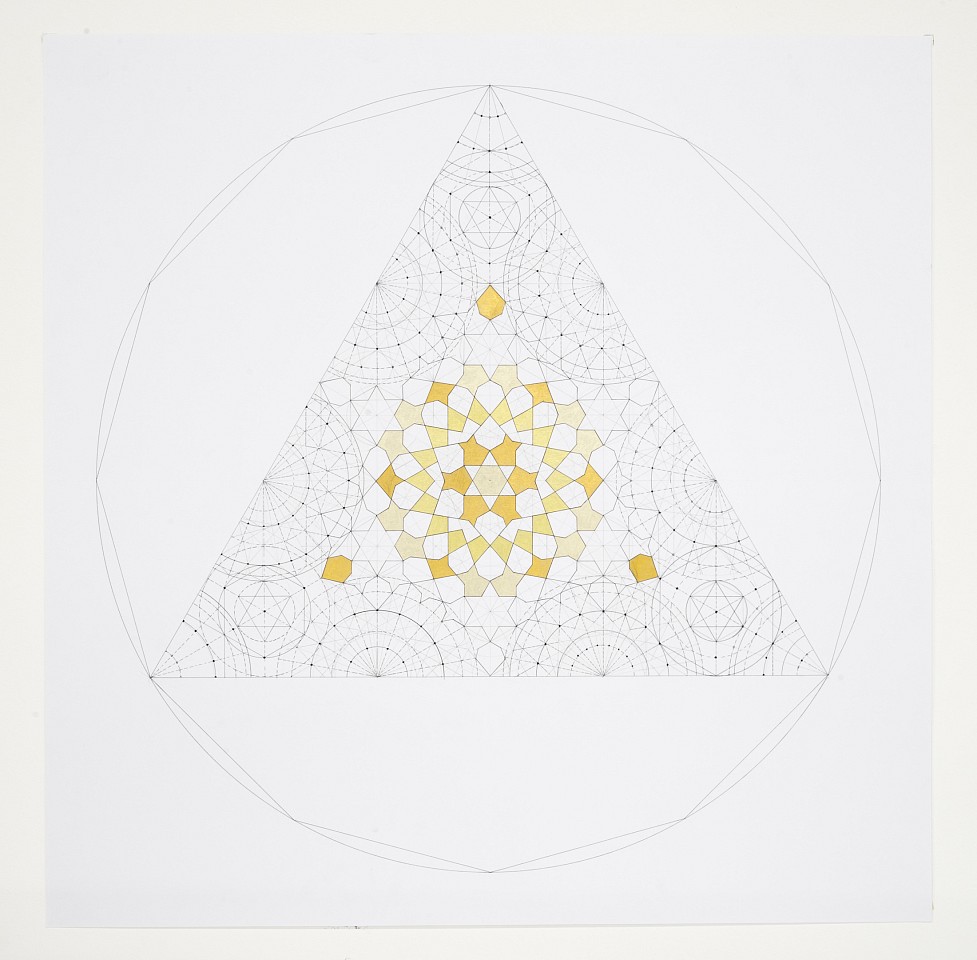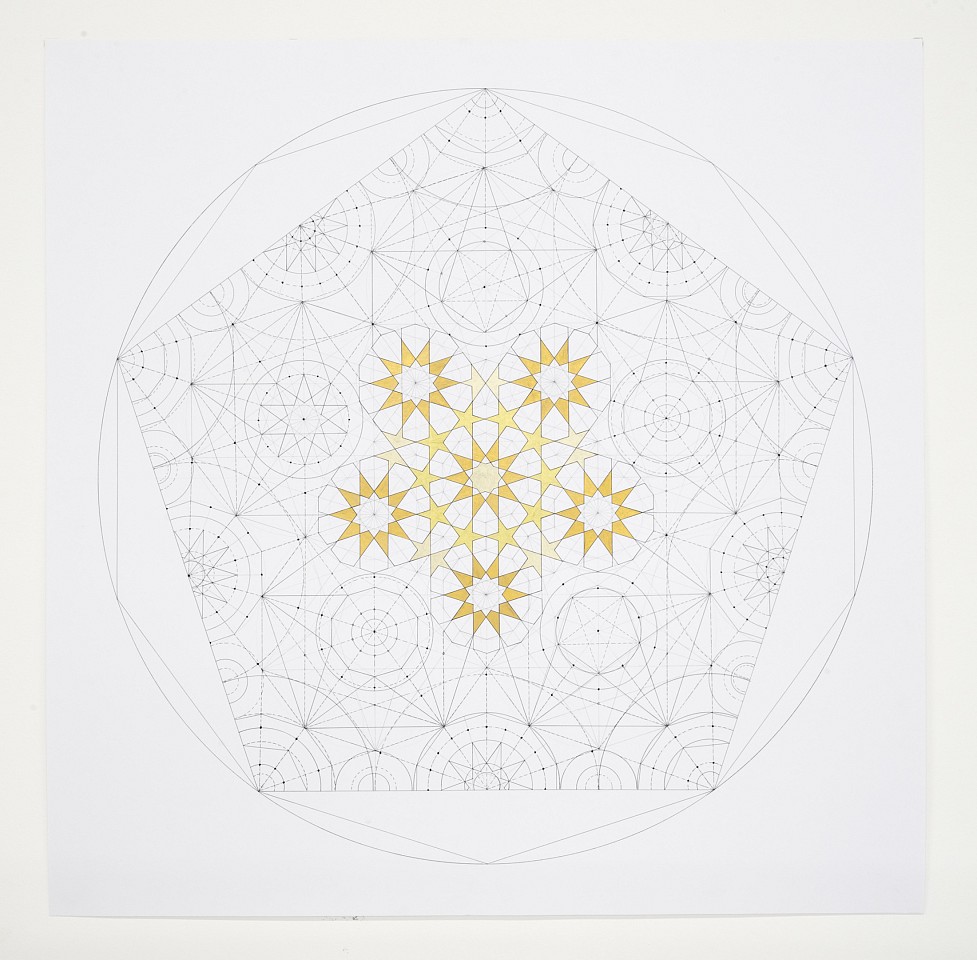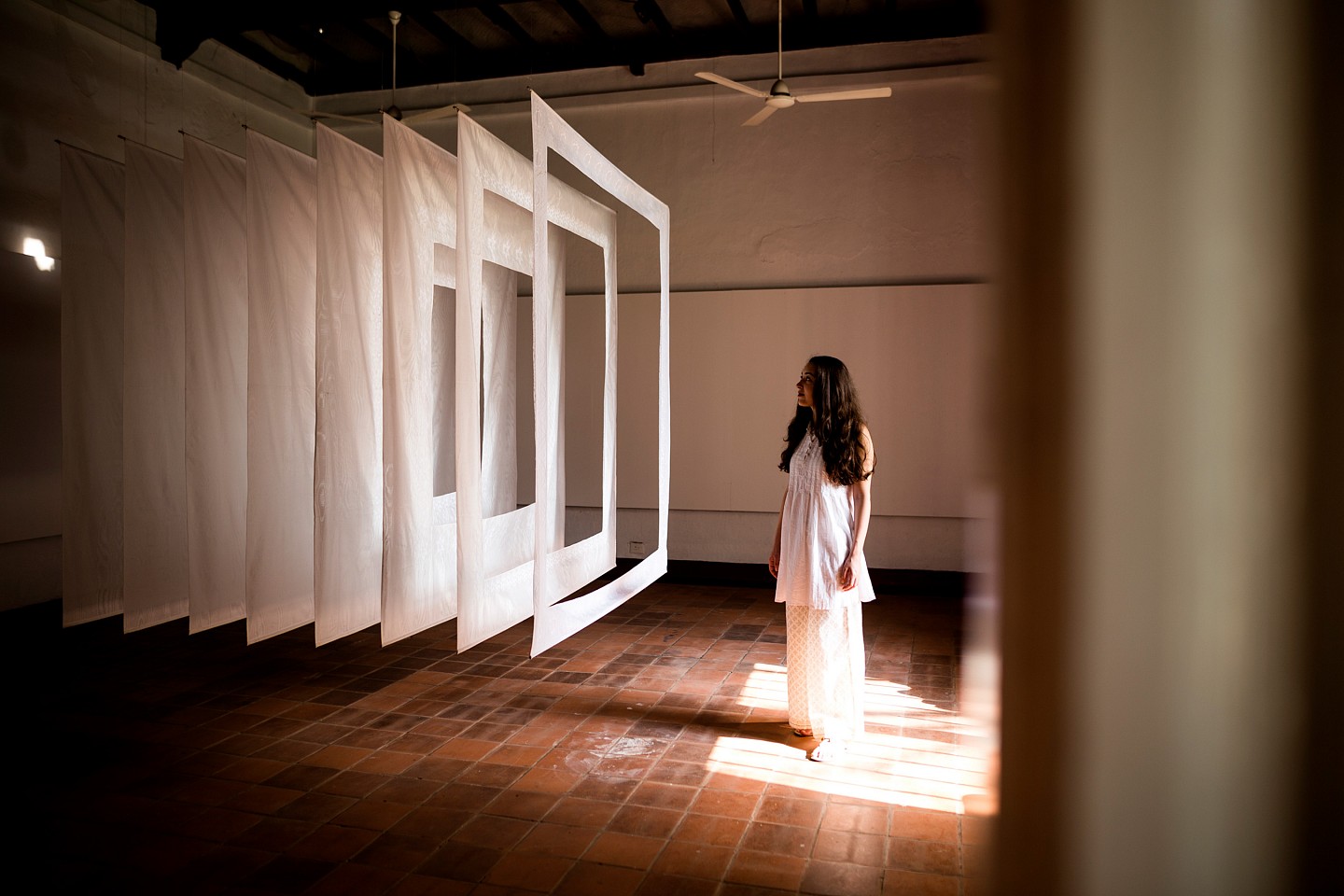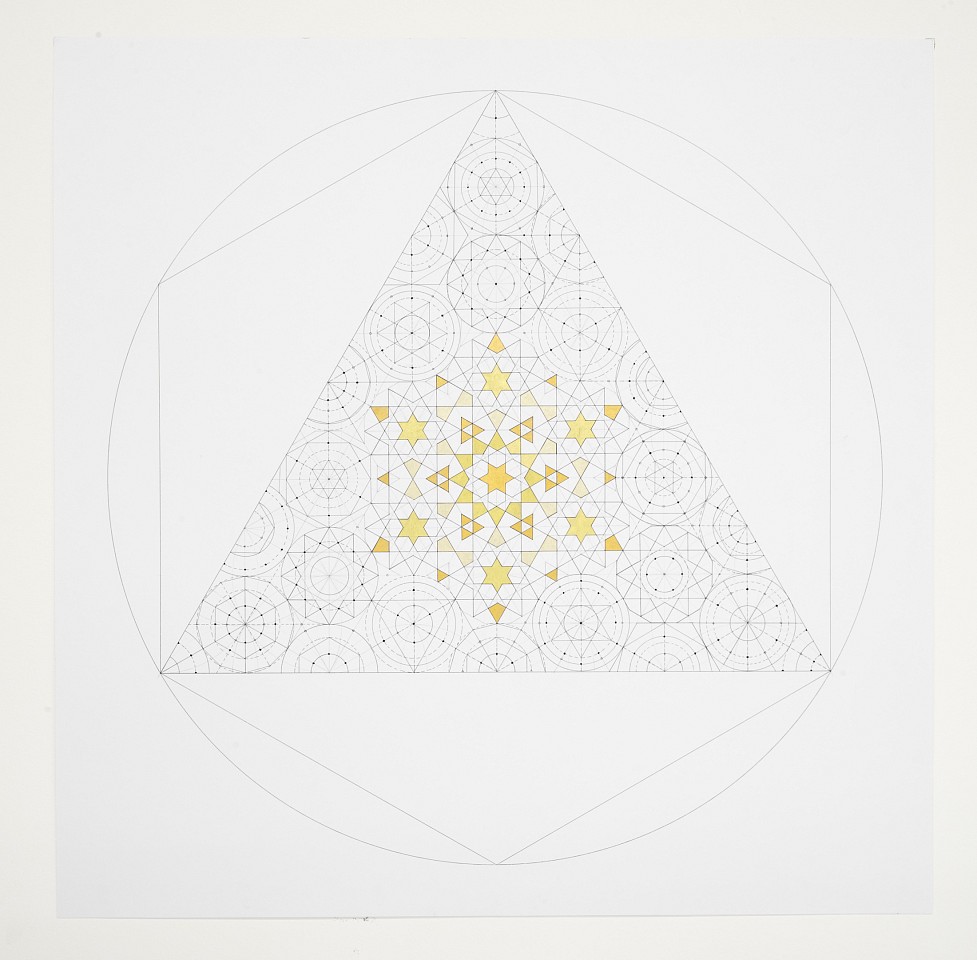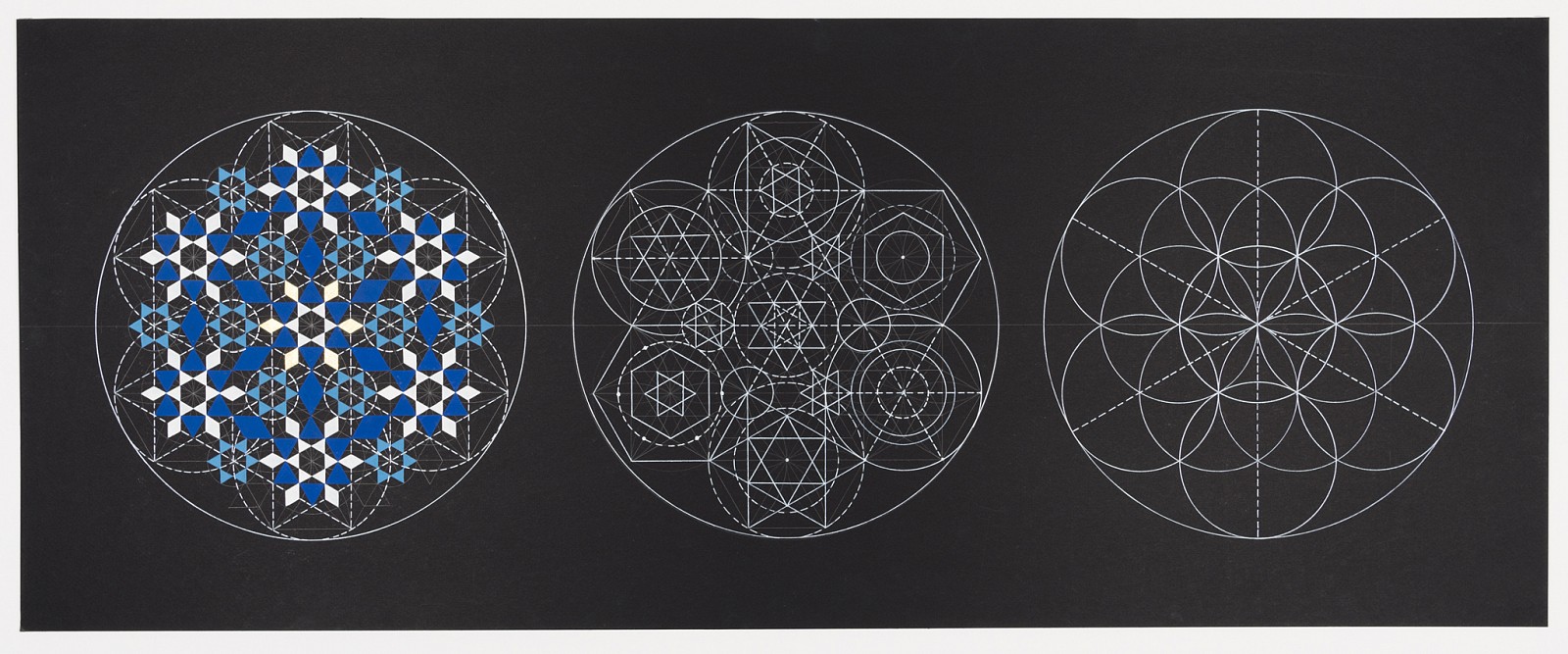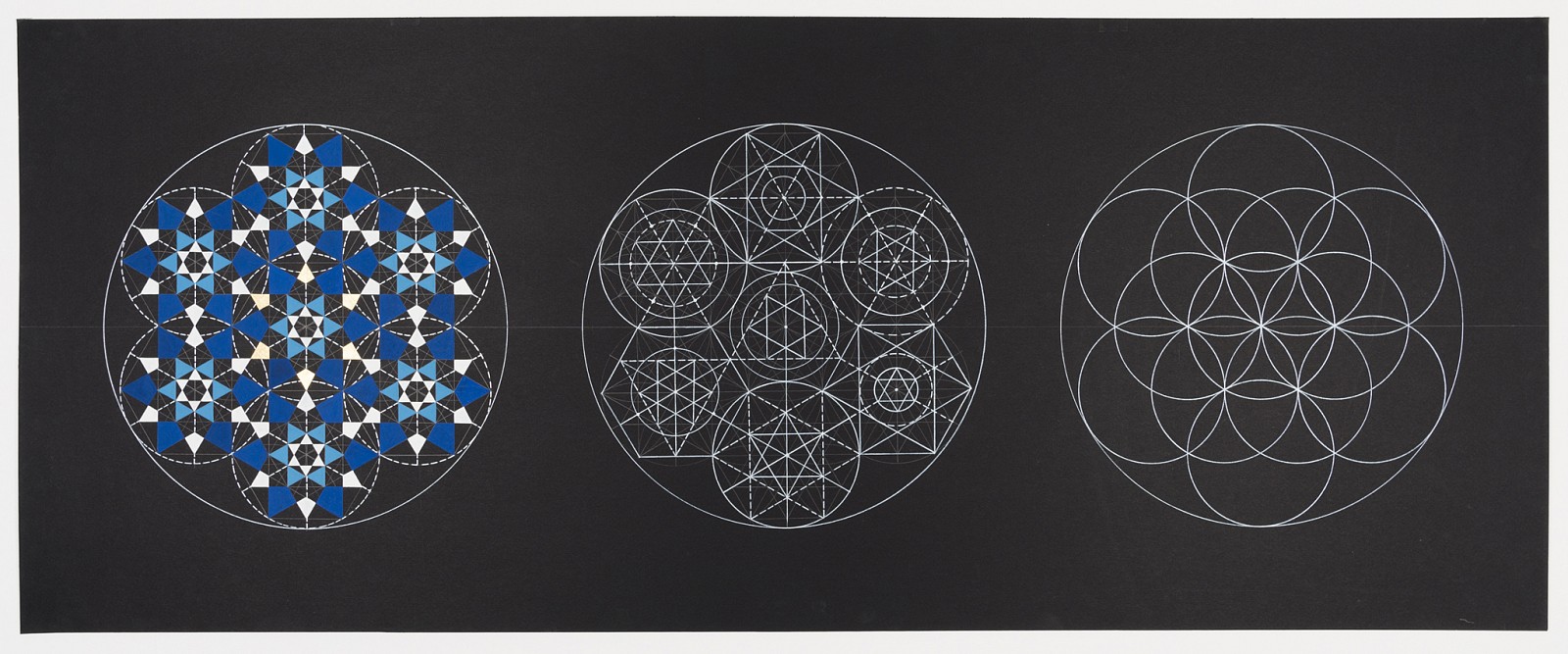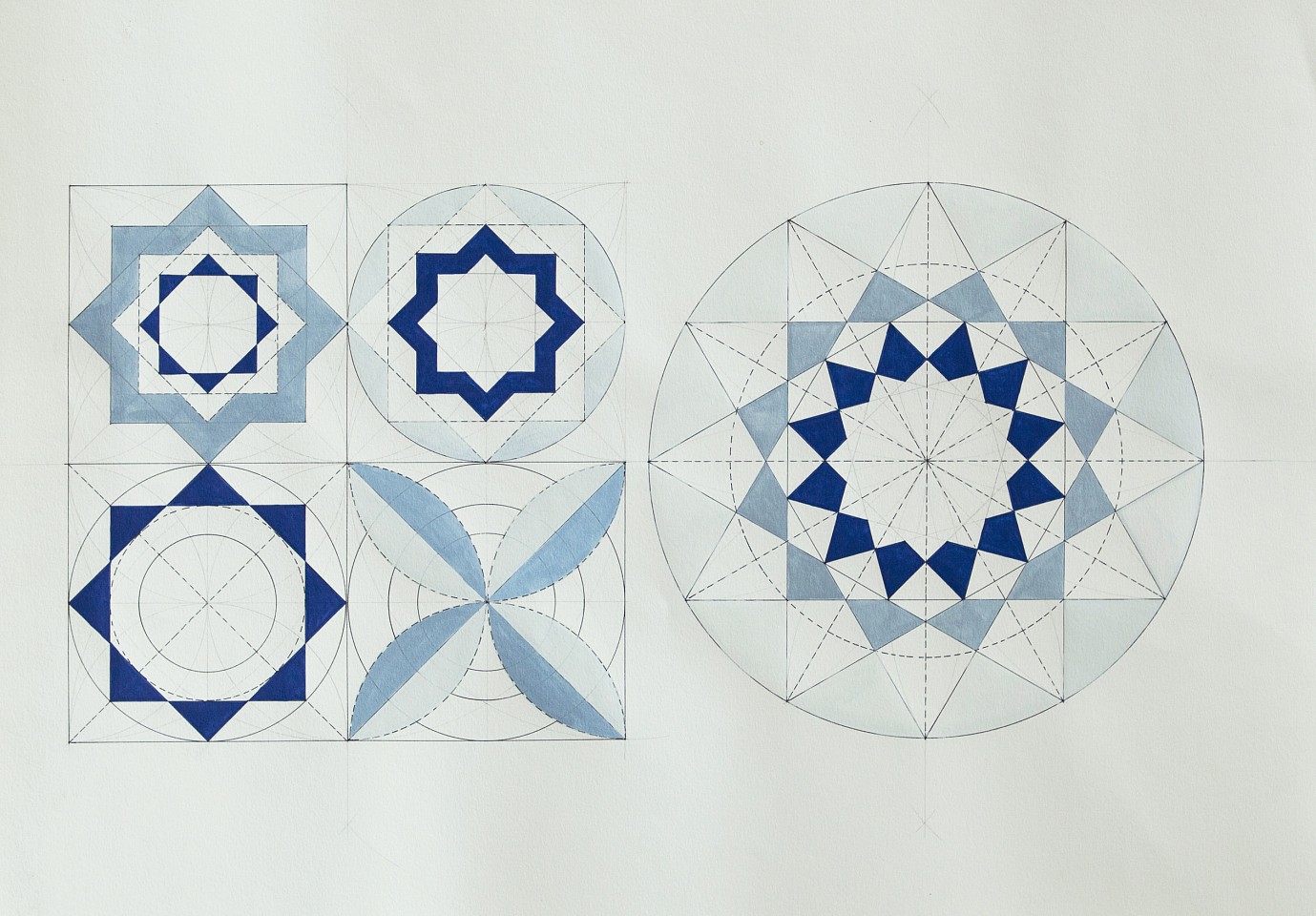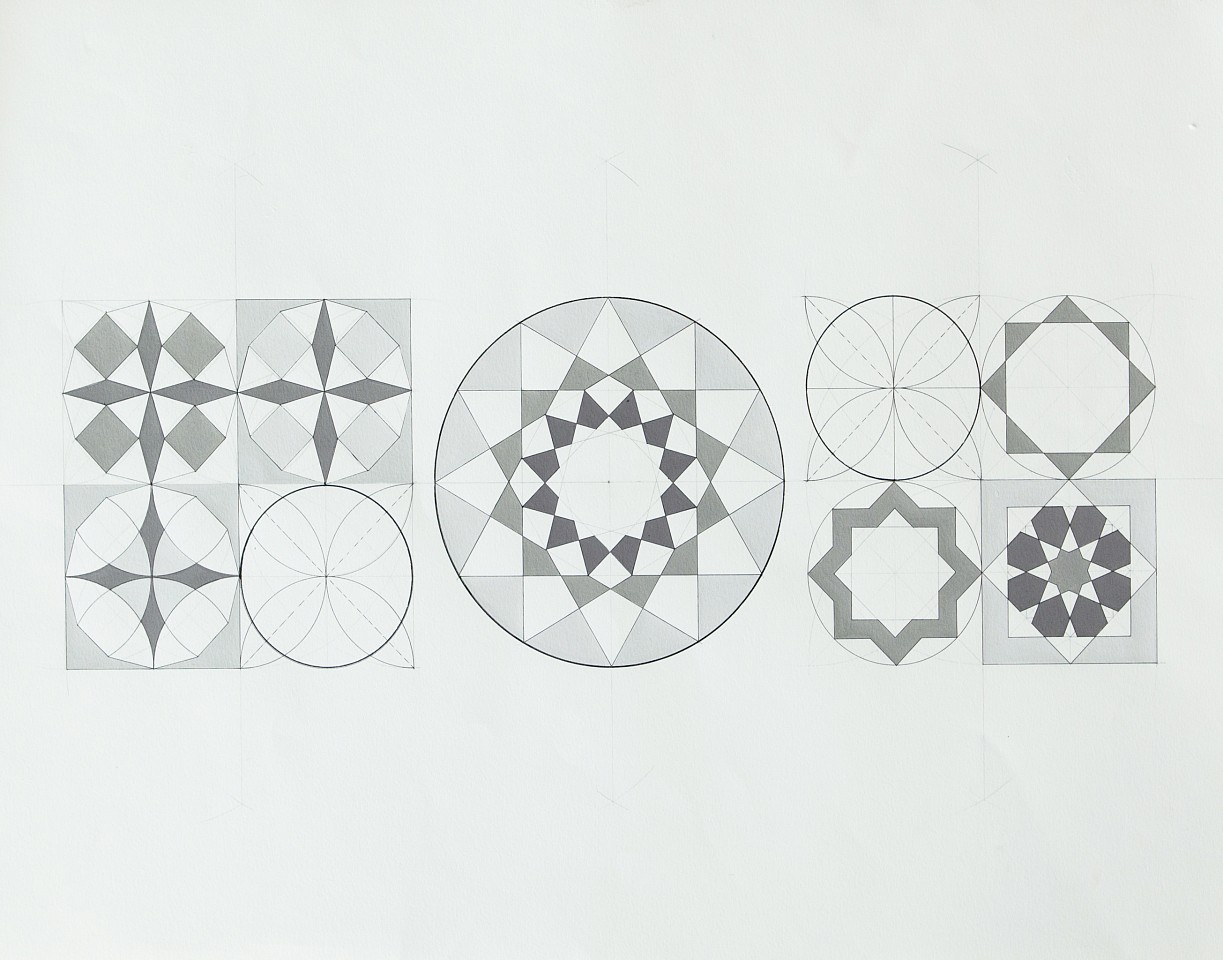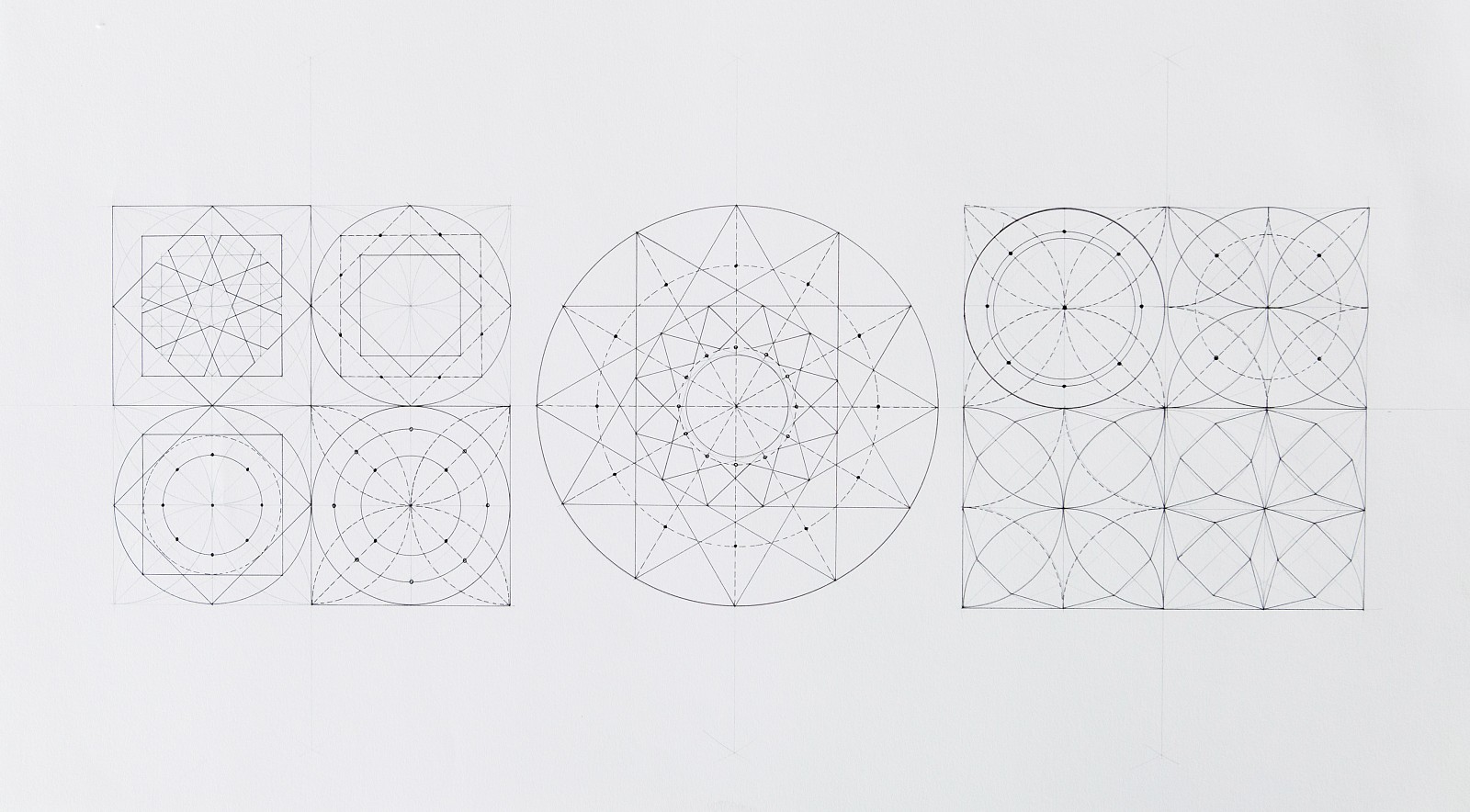Dana Awartani
Dana Awartani
The Islamic Caliphates, 2016
Shell gold and natural pigments on prepared paper
From Left to Right: Rashidun, Umayyad, Late Umayyad, Abbasid, Fatimid, Ayyubid, Mamluk and OttomanÂ
DAN0101
Dana Awartani
Glorify, 2016
Shell gold, ink and gouache on paper
50 x 190 cm
Dana Awartani
From left to right: Dodecahedron Within an Icosahedron, Octahedron Within a Cube & Icosahedron within a Dodecahedron from The Platonic Solid Duals Series, 2016
Shell gold and ink on paper
DAN0112
Dana Awartani
The Platonic Solid Duals Series, 2016
Wood, copper and glass
From left to right: Dodecahedron Within a Icosahedron, Octahedron Within a Cube and Icosahedron Within a Dodecahedron
DAN0106
Dana Awartani
Acceptance from the Five Stages of Grief series, 2015
Embroidery on cotton
85 x 144 cm (33 7/16 x 56 11/16 in.)
DAN0070
Dana Awartani
Anger from the Five Stages of Grief series, 2015
Embroidery on cotton
85 x 144 cm (33 7/16 x 56 11/16 in.)
DAN0071
Dana Awartani
Bargaining from the Five Stages of Grief series, 2015
Embroidery on cotton
85 x 144 cm (33 7/16 x 56 11/16 in.)
DAN0072
Dana Awartani
A Symphony of Stars, 2015
Shell gold, natural pigment and ink on paper
96 x 228 cm (37 3/4 x 89 3/4 in.)
DAN0069
Dana Awartani
Moses, 2014
Work on paper
113.5 x 118 cm (44 5/8 x 46 7/16 in.)
From the Seal of Prophets series
DAN0060
Dana Awartani
Jesus, 2014
Work on paper
113.5 x 118 cm (44 5/8 x 46 7/16 in.)
From the Seal of Prophets series
DAN0061
Dana Awartani
Mohammad, 2014
Work on paper
113.5 x 118 cm (44 5/8 x 46 7/16 in.)
From the Seal of Prophets series
DAN0062
Dana Awartani
Progressional Drawing #11, 2014
Gel pen and colored pencil on paper
50 x 100 cm (19 5/8 x 39 5/16 in.)
DAN0058
Dana Awartani
Progressional Drawing #12, 2014
Gel pen and colored pencil on paper
50 x 100 cm (19 5/8 x 39 5/16 in.)
DAN0059
Dana Awartani
He Is Who Created The Heavens and Earth In Six Days, 2013
Natural pigments on paper
DAN0035
Dana Awartani
Tetrahedron (Fire), 2014
Pencil & national pigments on mount board
81 x 81 cm (31 7/8 x 31 7/8 in.)
From the Platonic Solids series
DAN0040
Dana Awartani
Dodecahedron (Heaven), 2014
Pencil & national pigments on mount board
81 x 81 cm (31 7/8 x 31 7/8 in.)
From the Platonic Solids series
DAN0039
Dana Awartani
Octahedron (Air), 2014
Pencil & national pigments on mount board
81 x 81 cm (31 7/8 x 31 7/8 in.)
From the Platonic Solids series
DAN0041
Dana Awartani
Icosahedron (Water), 2014
Pencil & national pigments on mount board
81 x 81 cm (31 7/8 x 31 7/8 in.)
From the Platonic Solids series
DAN0042
Dana Awartani
Hexahedron (Earth), 2014
Pencil & national pigments on mount board
81 x 81 cm (31 7/8 x 31 7/8 in.)
From the Platonic Solids series
DAN0043
Dana Awartani
Orientalism, 2010
PVC taped room
250 x 200 x 230 cm (98 3/8 x 78 11/16 x 90 1/2 in.)
DAN0044
Dana Awartani
Dhikr, 2014
Ink, gouache and 24 carat gold on paper
150 x 180 cm (59 x 70 13/16 in.)
From the Platonic Solids series
DAN0052
Dana Awartani
Within A Sphere 4, 2014
Pen and Pencil on paper
58 x 58 cm (22 13/16 x 22 13/16 in.)
From the Platonic Solids series
DAN0054
Dana Awartani
Within A Sphere 6, 2014
Pen and Pencil on paper
58 x 58 cm (22 13/16 x 22 13/16 in.)
From the Platonic Solids series
DAN0053
Dana Awartani
Scroll of The Prophets from the Abjad series, 2015
Gouache and ink on paper
42 x 681 cm (16 1/2 x 268 1/16 in.)
DAN0075
Dana Awartani
Mars from the Heavenly Bodies series, 2015
Shell gold, natural pigment and ink on paper
59 x 59 cm (23 3/16 x 23 3/16 in.)
DAN0078
Dana Awartani
Sun from the Heavenly Bodies series, 2015
Shell gold, natural pigment and ink on paper
59 x 59 cm (23 3/16 x 23 3/16 in.)
DAN0079
Dana Awartani
Mercury from the Heavenly Bodies series, 2015
Shell gold, natural pigment and ink on paper
59 x 59 cm (23 3/16 x 23 3/16 in.)
DAN0081
Dana Awartani
Moon from the Heavenly Bodies series, 2015
Shell gold, natural pigment and ink on paper
59 x 59 cm (23 3/16 x 23 3/16 in.)
DAN0082
Dana Awartani
Aries, 2015
Shell gold and gouache on paper
40.5 x 40.5 cm (15 15/16 x 15 15/16 in.)
DAN0088
Dana Awartani
Taurus, 2015
Shell gold and gouache on paper
40.5 x 40.5 cm (15 15/16 x 15 15/16 in.)
DAN0089
Dana Awartani
Gemini, 2015
Shell gold and gouache on paper
40.5 x 40.5 cm (15 15/16 x 15 15/16 in.)
DAN0090
Dana Awartani
Cancer, 2015
Shell gold and gouache on paper
40.5 x 40.5 cm (15 15/16 x 15 15/16 in.)
DAN0091
Dana Awartani
Al Ikhlas (Unity), 2013
Gouache and 24 carot gold on prepared paper
40 x 40 cm (15 3/4 x 15 3/4 in.)
DAN0008
Dana Awartani
Al Falaq (Daybreak), 2013
Gouache and 24 carot gold on prepared paper
40 x 40 cm (15 3/4 x 15 3/4 in.)
DAN0009
Dana Awartani
Al Nas (Mankind), 2013
Gouache and 24 carot gold on prepared paper
40 x 40 cm (15 3/4 x 15 3/4 in.)
DAN0007
Dana Awartani
Abdulraheem (Slave of The Merciful), 2012
Pencil on mount board
100 x 100 cm (39 3/8 x 39 3/8 in.)
DAN0001
Dana Awartani
Abdulrahman (Slave of The Compassionate), 2012
Pencil on mount board
100 x 100 cm (39 3/8 x 39 3/8 in.)
DAN0000
Dana Awartani
Geometric Progression Piece #1, 2012
Pencil and pen on mount board
100 x 100 cm (39 3/8 x 39 3/8 in.)
DAN0002
Dana Awartani
Geometric Progression Piece #2, 2012
Pencil and pen on mount board
100 x 100 cm (39 3/8 x 39 3/8 in.)
DAN0003
Dana Awartani
Progressional Drawing #3, 2012
Pen, Gouache and shell gold on mount board
42 x 87.5 cm (16 1/2 x 34 1/2 in.)
DAN0010
Dana Awartani
Progressional Drawing #4, 2012
Pen, Gouache and shell gold on mount board
42 x 87.5 cm (16 1/2 x 34 1/2 in.)
DAN0011
Dana Awartani
Symetry, 2011
Pencil on black paper
27 x 27 cm (10 5/8 x 10 5/8 in.)
DAN0005
Dana Awartani
The Breath of the compassionate, 2013
Pencil on black paper
150 x 150 cm (59 x 59 in.)
DAN0004
Dana Awartani
Gamar (The Moon), 2011
Pencil on black paper
48.5 x 48.5 cm (19 1/8 x 19 1/8 in.)
DAN0006
Dana Awartani
Al Malaika (The Angels), 2013
Shell gold and natural pigments on prepared paper
23 x 25.5 cm (9 x 10 in.)
DAN0013
Dana Awartani
Al Sahra (The Desert), 2013
Natural pigments on prepared paper
26 x 26 cm (10 1/4 x 10 1/4 in.)
DAN0014
Dana Awartani
Lotus Flower I, 2012
Shell gold and natural pigments on prepared paper
16.5 x 16.5 cm (6 1/2 x 6 1/2 in.)
DAN0020
Dana Awartani
Lotus Flower III, 2012
Shell gold and natural pigments on prepared paper
16.5 x 16.5 cm (6 1/2 x 6 1/2 in.)
DAN0022
Dana Awartani
Al Munir (The Enlighter), 2011
Gouache on Paper
30 x 30 cm (11 3/4 x 11 3/4 in.)
DAN0025
Dana Awartani
Thaminya (Eight), 2011
Parquetry and glass box
18 x 18 cm (7 1/8 x 7 1/8 in.)
DAN0034
Dana Awartani
Untitled, 2021
Gouache on handmade paper
DAN0253
Dana Awartani
In Search of Silence, 2019
Gouache on hand made paper
DAN0229
Dana Awartani
The Union of Fire and Water I, 2019
Gouache and shell gold on hand made paper
DAN0227
Dana Awartani
The Union of Fire and Water II, 2019
Gouache and shell gold on hand made paper
DAN0228
Dana Awartani
When Fire Loves Water, 2019
Gouache and shell gold on hand made paper
DAN0224
Dana Awartani
You are the Universe in ecstatic motion I, 2019
Gouache and shell gold on hand made paper
DAN0225
Dana Awartani
You are the Universe in ecstatic motion II, 2019
Gouache and shell gold on hand made paper
DAN0226
Dana Awartani
Jali 12, 2018
White gouach on translucent drafting film (3 layers)
DAN0157
Dana Awartani
Jali 3, 2018
White gouach on translucent drafting film (3 layers)
DAN0148
Dana Awartani
Listen to My Words, 2018
Multi media (7 panels of hand embroidery on silk and sound installation)
DAN0141
Dana Awartani
Untitled, 2018
Shell gold and gouache on paper
DAN0144
Dana Awartani
Alif from the Abjad Hawaz, 2017
Shell gold, gouahe, and ink on paper
DAN0130
Dana Awartani
Ba from the Abjad Hawaz, 2017
Shell gold, gouahe, and ink on paper
DAN0131
Dana Awartani
Dal from the Abjad Hawaz, 2017
Shell gold, gouahe, and ink on paper
DAN0133
Dana Awartani
Ha from the Abjad Hawaz, 2017
Shell gold, gouahe, and ink on paper
DAN0134
Dana Awartani
Haa from the Abjad Hawaz, 2017
Shell gold, gouahe, and ink on paper
DAN0137
Dana Awartani
Jeem from the Abjad Hawaz, 2017
Shell gold, gouahe, and ink on paper
DAN0132
Dana Awartani
Untitled, 2017
Guache and shell gold on paper (8 Panels)
DAN0124
Dana Awartani
Waw from the Abjad Hawaz, 2017
Shell gold, gouahe, and ink on paper
DAN0135
Dana Awartani
Za from the Abjad Hawaz, 2017
Shell gold, gouahe, and ink on paper
DAN0136
Dana Awartani
Abjad Hawaz series, 2016
Shell gold, ink and gouache on paper
Dana Awartani
All [heavenly bodies] swim along, each in its orbit, 2016
Mixed Media
150 x 150 cm
Dana Awartani
Dodecahedron Within a Icosahedron from The Platonic Solid Duals Series, 2016
Shell gold and gouache on paper
54 x 54 cm
Dana Awartani
Dodecahedron Within a Icosahedron from The Platonic Solid Duals Series, 2016
Shell gold and gouache on paper
54 x 54 cm
Dana Awartani
Love is my Law, Love is my Faith, 2016
Embroidery on Silk
DAN0126
Dana Awartani
Octahedron Within a Cube from The Platonic Solid Duals Series, 2016
Shell gold and ink on paper
DAN0114
Dana Awartani
Progressional Drawing #16, 2016
Gel pen and colored pencil on paper
DAN0177
Dana Awartani
Progressional Drawing #17, 2016
Gel pen and colored pencil on paper
DAN0178
Dana Awartani
Decoding the prophets
Study Drawing I, 2015
Gouache and ink on paper
DAN0164
Dana Awartani
Decoding the prophets
Study Drawing III, 2015
Gouache and ink on paper
DAN0166
Dana Awartani
Decoding the prophets
Study Drawing IV, 2015
Gouache and ink on paper
DAN0167
Dana Awartani
Decoding the prophets
Study Drawing V, 2015
Gouache and ink on paper
DAN0168







































































![Dana Awartani, All [heavenly bodies] swim along, each in its orbit
2016, Mixed Media](/images/29138_h125w125gt.5.jpg)










In this artwork Dana Awartani is exploring the history of the Islamic empires in relation to the development of the arts and crafts of the time. This piece is specifically focusing on the art of Quranic illumination, which plays a fundamental role in the Awartani’s art practice as she has currently been training for the past few years in Istanbul with a master in order to receive her Ijaza that will allow her to become a master herself. During her training Awartani is taught Illumination in a purely traditional approach, that predominantly focuses on design, composition and painting techniques and is nearly always detached from any sort of meaning or symbolism. To a certain extent, there are some opinions that view this as an art form that is stuck in time and lacks any sort of innovation or modernity; rather it is an art practice that is confined to very specific guidelines and boundaries due to the respect of its context. However Awartani aims to bridge this gap between the traditional and contemporary, the old and the new in a way that brings both practices together in a harmonies union that will give traditional Islamic illumination a platform in the contemporary world.
The theme of “progressional” drawings and paintings is another fundamental element in Awartani’s practice. She commonly uses this visual language as a way to allow the viewers to take the journey of creating the art works along side with her, which she hopes gives them a deeper understanding and appreciation of the art works..
In “The Islamic Caliphates” Awartani combines her progressional drawings with her illuminations as a vehicle to express the development and evolution of Quranic manuscripts throughout history, and explores how each of the great civilizations have contributed to this art form. This piece also dually depicts the geographical expansion of the religion of Islam over time, starting from the gold circle which represents the birth of the religion in the Hejaz, all the way through to its peak which spans from the far East across to Europe, that is portrayed in the final ‘shamsa’. Each of the designs used throughout the different stages of the artwork, directly correlate with the style of illumination that was invented at the time. Portraying the evolution of this art form from being practically non-existent in the 7th century, mainly due to the fact that there was the fear of allowing anything to intrude upon the holy text of the Quran, which caused illumination to develop in a much more reserved and slower pace then calligraphy, and finally resulting in some of the highly decorative masterpieces you find in the later Islamic empires. Awartani has also chosen to incorporate all the different styles within each other in this progressioanl piece, resulting in the final stage being a combination of all the 8 distinct styles, as a way to also express the universality and highly diverse elements that not only make up the art of Illumination but furthermore is a reflection of the Islamic civilization as a whole, the idea of ‘Tawhid”, or unity within multiplicity which in essence is the core principal of Islam.
In this piece, Awartani is exploring the subject of “Palindromes” which are words, phrases, numbers or any other sequence of characters that when read backwards or forwards are the same. Palindromes in essence are a form of wordplay that has been used for many centuries dating back to at least 79 AD and the word is derived from the Greek palíndromos, meaning running back again (palín = AGAIN + drom–, drameîn = RUN).
Awartani has been researching the use of palindromes in the Arabic language, more specifically in the Holy Quran, where there only exist two known palindromes that make up one of the many linguistic miracles that can also be found. In this piece she has focused on a verse from Surah Al-Muddaththir (The Cloaked One), which reads as ‘rabbaka fakabbir’ (And Your Lord You Should Glorify, Quran 74:3). Here, reading the sentence backwards including vowels would not create a palindrome. However, taking out consonants only (which are here: r, b, k, f, k, b, r) can clearly create a palindrome.
Continuing with here research and experimentation with developing codes, Awartani has taken the practice of palindromes a step further by converting each letter of the sentence into there numerical value using the Abjadia and then into a symbol that embodies that number. In turn the viewer can decipher this code by firstly looking at how many points/angels each design has and then by looking at how many times that design is multiplied you can tell how many units are in the total sum of the individual letter. As for example the letter “Ra” is expressed by a design that has 2 angels and is painted 3 times which translates into 200, the letter “Ba” uses the same 2 pointed design and is painted once which translates into 2, and the letter “Fa” is expressed using a design that has 8 points and is painted twice, which translates into 80 and so on and so forth.
Awartani has created a series of sculptures and drawings based on the Platonic Solids, an ancient study of shapes based on Euclidean geometry.
The platonic solids are the most frequently studied shapes in history. They have been around for thousands of years and geometers have studied their mathematical properties and been fascinated by their inherent beauty and symmetry. What makes them particularly important is that they are considered as the only five ‘perfect’ shapes in three-dimensional space that derive from a sphere. They appear the same from any vertex, their faces are made of the same regular shape, and their vertices represent the most symmetrical distribution of the numbers four, six, eight, twelve and twenty on a sphere.
Awartani has taken direct inspiration from these forms and has translated these three-dimensional shapes into sculptures that examine the dual properties that they share, as each polyhedron has a dual or ‘polar’ polyhedron with faces and vertices interchanged, which is also known as polar reciprocation. By this duality principle each platonic solid has a pair that fit within each other in geometric harmony.
Plato has furthermore attributed the four classical elements (earth, air, fire, water) and the heavens to each shape, based on intuitive justification for these associations. Awartani has taken these principles and translated it in her choice of material, as wood is the only substance that needs all the elements to survive in nature.
In her Five Stages of Grief series, Awartani uses the threads of talismanic references drawn from the Ottoman Empire and rooted in Islam to make connections to lost elements of Saudi heritage. The artist first encountered talismanic shirts in the Topkapi Palace Museum in Istanbul – pieces which were once said to protect the Sultans as they wore these kaftans before going to war and their wives during childbirth. The artist has taken original textiles from the Thageef tribe in Saudi, coded patterns which once denoted where a tribe came from. During the founding years of the Kingdom of Saudi Arabia, all such colourful and distinctive costumes were banished, with the neutral and harmonised black abaya and white kaftan encouraged for men and women, as a way of unifying the tribes. Stitched to the original garments are Awartani’s signature magic squares, where she has taken the five stages of grief and applied one stage to each garment. The artist has referenced to the ancient system used in divination where by the letters of the ‘abjad’ (A system in which each letter in the Arabic alphabet is given a numerical value, giving each name its own unique sum.) are divided into four parts and the seven letters in each part are assigned to one of the elements – air, fire, water and earth. Here she has created her own coded interpretation by attributing one of the elements to a specific stage of grief, with the last being a combination of all the elements, as these garments are intended to be seen as an aid to overcome the various emotions in the process of grieving. In this work, each symbol or letter of the language she has built is stitched into the cloth, the knots and ties intended as a reference to the sorrow implicit when layers of history are wiped out in the name of modernization. At the same time, the juxtaposition of old and new binds Awartani’s own complex reading of the world around her onto the ancient artifacts.
In her Five Stages of Grief series, Awartani uses the threads of talismanic references drawn from the Ottoman Empire and rooted in Islam to make connections to lost elements of Saudi heritage. The artist first encountered talismanic shirts in the Topkapi Palace Museum in Istanbul – pieces which were once said to protect the Sultans as they wore these kaftans before going to war and their wives during childbirth. The artist has taken original textiles from the Thageef tribe in Saudi, coded patterns which once denoted where a tribe came from. During the founding years of the Kingdom of Saudi Arabia, all such colourful and distinctive costumes were banished, with the neutral and harmonised black abaya and white kaftan encouraged for men and women, as a way of unifying the tribes. Stitched to the original garments are Awartani’s signature magic squares, where she has taken the five stages of grief and applied one stage to each garment. The artist has referenced to the ancient system used in divination where by the letters of the ‘abjad’ (A system in which each letter in the Arabic alphabet is given a numerical value, giving each name its own unique sum.) are divided into four parts and the seven letters in each part are assigned to one of the elements – air, fire, water and earth. Here she has created her own coded interpretation by attributing one of the elements to a specific stage of grief, with the last being a combination of all the elements, as these garments are intended to be seen as an aid to overcome the various emotions in the process of grieving. In this work, each symbol or letter of the language she has built is stitched into the cloth, the knots and ties intended as a reference to the sorrow implicit when layers of history are wiped out in the name of modernization. At the same time, the juxtaposition of old and new binds Awartani’s own complex reading of the world around her onto the ancient artifacts.
In her Five Stages of Grief series, Awartani uses the threads of talismanic references drawn from the Ottoman Empire and rooted in Islam to make connections to lost elements of Saudi heritage. The artist first encountered talismanic shirts in the Topkapi Palace Museum in Istanbul – pieces which were once said to protect the Sultans as they wore these kaftans before going to war and their wives during childbirth. The artist has taken original textiles from the Thageef tribe in Saudi, coded patterns which once denoted where a tribe came from. During the founding years of the Kingdom of Saudi Arabia, all such colourful and distinctive costumes were banished, with the neutral and harmonised black abaya and white kaftan encouraged for men and women, as a way of unifying the tribes. Stitched to the original garments are Awartani’s signature magic squares, where she has taken the five stages of grief and applied one stage to each garment. The artist has referenced to the ancient system used in divination where by the letters of the ‘abjad’ (A system in which each letter in the Arabic alphabet is given a numerical value, giving each name its own unique sum.) are divided into four parts and the seven letters in each part are assigned to one of the elements – air, fire, water and earth. Here she has created her own coded interpretation by attributing one of the elements to a specific stage of grief, with the last being a combination of all the elements, as these garments are intended to be seen as an aid to overcome the various emotions in the process of grieving. In this work, each symbol or letter of the language she has built is stitched into the cloth, the knots and ties intended as a reference to the sorrow implicit when layers of history are wiped out in the name of modernization. At the same time, the juxtaposition of old and new binds Awartani’s own complex reading of the world around her onto the ancient artifacts.
The Scroll of The Prophets, Awartani takes the names of all 25 prophets mentioned in the Qu’ran and translates them back to their numerical value using the Abjadia. She then constructs a geometric pattern for each prophet, layering the circles, squares, stars, triangles and hexagonal forms, placing one character (or individual) next to the other in a long scroll. Awartani uses these systems to allow physical manifestations of the prophets in an attempt to transcend the limitations placed on representational forms in Islam, bringing to the fore questions of idol worship.
In this system, each letter in the Arabic alphabet is given a numerical value, giving each name its own unique sum.
The Heavenly Bodies series combine Awartani’s research into both talismans and Enchanted squares, in particular an investigation into how they were created, used and their spiritual significance. Each of the central squares (from 3 to 9 squared) are affiliated with one of the seven classical planets, a day in the week and an angel – they were also once regarded as a form of protection as well as a source of higher spiritual knowledge through numerology. These works, created using traditional methods and pigments, are structured based on the first square, which sits at the top right of the work and holds the code to deciphering which planet has been illustrated.
Where once these coded paintings might have been used as designs for weavings on clothes, here they work as illuminations, with each of the seven works exploring form, pattern, numerology and mysticism, functioning almost as a manifestation of the artist’s explorations into the threads of divination in ancient Islam. By bringing these early practices into a contemporary and increasingly globalized context triggers questions surrounding the possible reversion to more instinctive rituals along with possible reinterpretations of the Qu’ran.
The Heavenly Bodies series combine Awartani’s research into both talismans and Enchanted squares, in particular an investigation into how they were created, used and their spiritual significance. Each of the central squares (from 3 to 9 squared) are affiliated with one of the seven classical planets, a day in the week and an angel – they were also once regarded as a form of protection as well as a source of higher spiritual knowledge through numerology. These works, created using traditional methods and pigments, are structured based on the first square, which sits at the top right of the work and holds the code to deciphering which planet has been illustrated.
Where once these coded paintings might have been used as designs for weavings on clothes, here they work as illuminations, with each of the seven works exploring form, pattern, numerology and mysticism, functioning almost as a manifestation of the artist’s explorations into the threads of divination in ancient Islam. By bringing these early practices into a contemporary and increasingly globalized context triggers questions surrounding the possible reversion to more instinctive rituals along with possible reinterpretations of the Qu’ran.
The Heavenly Bodies series combine Awartani’s research into both talismans and Enchanted squares, in particular an investigation into how they were created, used and their spiritual significance. Each of the central squares (from 3 to 9 squared) are affiliated with one of the seven classical planets, a day in the week and an angel – they were also once regarded as a form of protection as well as a source of higher spiritual knowledge through numerology. These works, created using traditional methods and pigments, are structured based on the first square, which sits at the top right of the work and holds the code to deciphering which planet has been illustrated.
Where once these coded paintings might have been used as designs for weavings on clothes, here they work as illuminations, with each of the seven works exploring form, pattern, numerology and mysticism, functioning almost as a manifestation of the artist’s explorations into the threads of divination in ancient Islam. By bringing these early practices into a contemporary and increasingly globalized context triggers questions surrounding the possible reversion to more instinctive rituals along with possible reinterpretations of the Qu’ran.
The Heavenly Bodies series combine Awartani’s research into both talismans and Enchanted squares, in particular an investigation into how they were created, used and their spiritual significance. Each of the central squares (from 3 to 9 squared) are affiliated with one of the seven classical planets, a day in the week and an angel – they were also once regarded as a form of protection as well as a source of higher spiritual knowledge through numerology. These works, created using traditional methods and pigments, are structured based on the first square, which sits at the top right of the work and holds the code to deciphering which planet has been illustrated.
Where once these coded paintings might have been used as designs for weavings on clothes, here they work as illuminations, with each of the seven works exploring form, pattern, numerology and mysticism, functioning almost as a manifestation of the artist’s explorations into the threads of divination in ancient Islam. By bringing these early practices into a contemporary and increasingly globalized context triggers questions surrounding the possible reversion to more instinctive rituals along with possible reinterpretations of the Qu’ran.
Dana Awartani presents an immersive installation that combines hand embroidered silk panels with moving sounds of women reciting poetry. Throughout history, the woman’s role has always been underrepresented within art, politics and science. When referencing Arab and Islamic poetry and literature from the region, names such as Rumi, Hafez and Ibn Arabi most often spring to mind. This body of work sets to lift the veil on a whole cast of radical female poets that range from the pre Islamic times up to the 12th century. The poems and poetesses hail from a wide range of cultures within the Arab world and explore the themes of love, lust and longing.
The presence of geometric layered panels throughout this work references the ‘Jali’ screen, which is characteristic of the Islamic tradition and more specifically in this piece, Mughal India, and they were typically used to shield women from the male gaze. In this case, the artist has reinvented these screens by using embroidery in collaboration with craftsmen in India, and has chosen a specific stitch called ‘Aari’ which derived from the Mughal period. Awartani was more specifically inspired by a figure named Nourjehan who was the wife of a Mughal Emperor and she partook a leading yet hidden role in governing the state while being forced to sit behind a Jali screen, whispering commands into her husband’s ear.
The work juxtaposes theory and execution, as the installation is one that evokes serenity and contemplation interjected with radical words within the space.
The recitation of the poetry is done in its original language of Arabic, using the voices of Sara Abdu, Fatima Al Banawi, Najla Al Bassam, Ahd Kamel and Zahar Al Sayed - modern day Saudi women who embody the spirits of these forgotten poetesses, strong, empowered and inspirational.
Through highly studied, focussed, and skilled deployment of traditional techniques, Dana Awartani extends interpretive legacies. She masters historic and symbolic playgrounds to explore and sustain revered structural traditions. Her innovative approach to these visual codes is epitomised by her Abjad Hawaz concept. Through it, she evolves and maps the complexities of Sufi and Islamic scholarly traditions, opening up contemporary spaces for intuitive comprehension of linguistic and semantic systems, revivifying their potent potential for spiritual engagement.
She works within the Sufi tradition where symbolism is an essential means to approach and intuit awareness of the Eternal. Sufi poetry and teachings are layered with evocative symbols that strive to inform and awaken different levels of intellect, being, and understanding. Transcending strict narrative structures, the texts are steeped in complex sign systems manifested through literary devices such as double-entendre, root-word resonance and numerology.
The traditions Awartani inherits from have their legacies in more ancient practices: the Islamic world was heir to an alphabetical numerology that had been in play for many centuries. In this system, each letter of the alphabet can be alternatively expressed by a number. A common practice in Arabia, letters would naturally be read simultaneously as words and as a collection of numbers. Within this context, the miracle of the Quran is made further evident through the eloquent and highly complex manifestation of such intricate numerological systems.
The study of abjad, particularly its exceptional rendering in the scripture, is part of a great scholarly tradition called the science of letters (ilm al-huruf). Concerned not only with numerological systems, scholars of this science also investigate letter shapes and forms, as well as their cosmological significance. The science of numbers stands above nature as a way to approach a comprehension of unity or ‘tawhid’, an absolute central principle of Islam pertaining to the indivisible oneness of God. In this vein, numbers are the principle of beings and the root of all sciences, the first effusion of spirit upon soul, whereas geometry is the expression of the ‘personality’ of numbers.
It is within this rich reverential legacy that Awartani evolves Abjad Hawaz, a singular system of visual coding that draws on her deep understanding of geometry and illumination. She builds upon the ancient numerical system, expansively divining an aesthetic language that revivifies the abjad and insists on its relevance. This visual language possesses a striking immediacy in its capacity to extrapolate symbiotic meanings and forms. This is a co-dependency inherent in geometry where the form is the result of a numerical expression – without which geometry would not exist. Skillfully deploying her deep understanding of traditional geometric expressions, Awartani abstracts and imparts pure meaning using the method to create a harmonious and formal expression of complex notions that are difficult to succinctly synthesise.
Awartani’s visual language invites the viewer to participate in its coding and meaning-making, the direct translation of number into form becoming decipherable even for the uninitiated. In the system, each shape’s angles and repetitions equate to the numerical value or sum of the individual letter. So, as we engage with the form, the sense of the system emerges – we see that alef is not only shaped like the number one but is the number one. From here, a further kind of comprehension grows, with historic, scientific and mathematical symbolism potently coalescing as they are woven into the invested values of Awartani’s focussed expression. Understanding expands and we are able to appreciate alef as the original letter, the representative of the principle of unitary being. Accordingly, Awartani achieves a concurrent expression of this number, letter, and concept with a circle – the symbol of unity and creation. The other letters of the alphabet are said to have evolved from the letter alef into the variety and multiplicity of the alphabet, which for the hurufis, represents the cosmos. In the geometric tradition, the circle is the creator and originator of all geometry, where every design starts and finished within the circle.
A highly trained practitioner of traditional Islamic arts, Awartani deploys skilled techniques from within ancient systems. In this way, she engages with the systems in their most essential form, tapping their invested power to bring it into a contemporary moment. Through these pure interrogations, Awartani invigorates the traditional, mapping and deconstructing value to demonstrate the potential and enduring relevance of a highly powerful visual language capable of concurrently articulating deep truths of mathematics, science, history, and spirituality. As such, her work becomes a vigorous rebuttal that counters the uninformed perspectives that dismiss these practices merely as a decorative art
or ‘craft’.

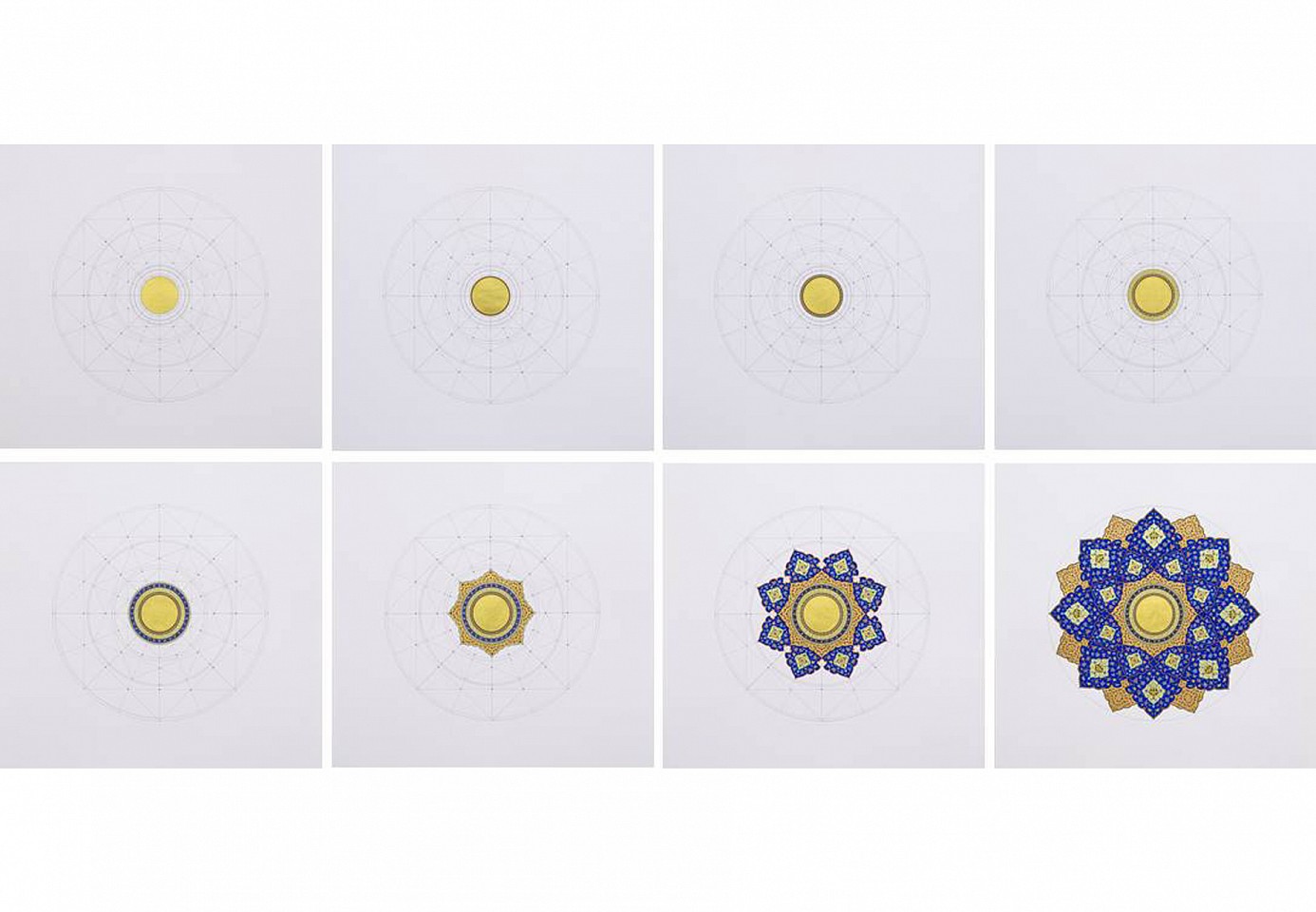
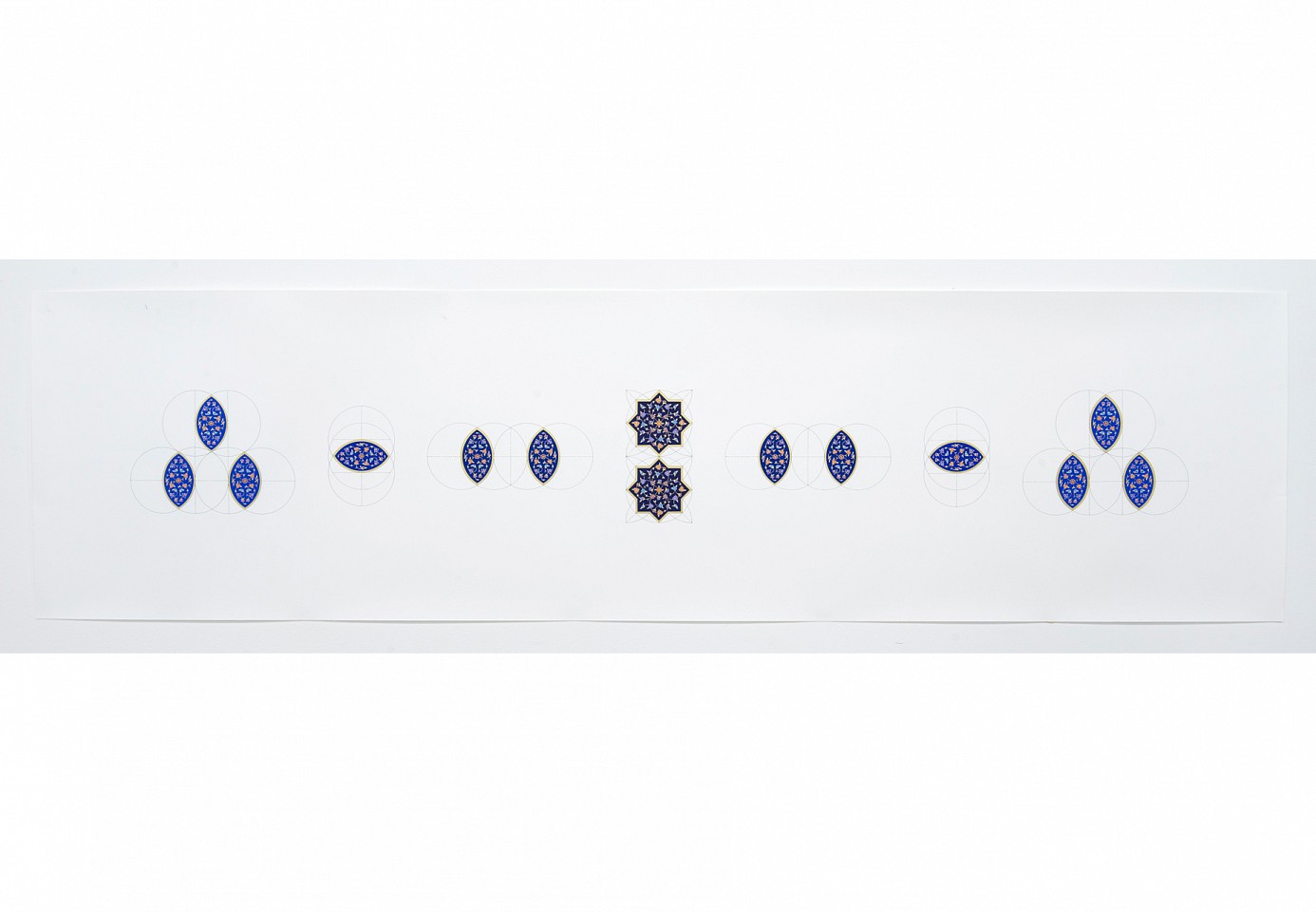
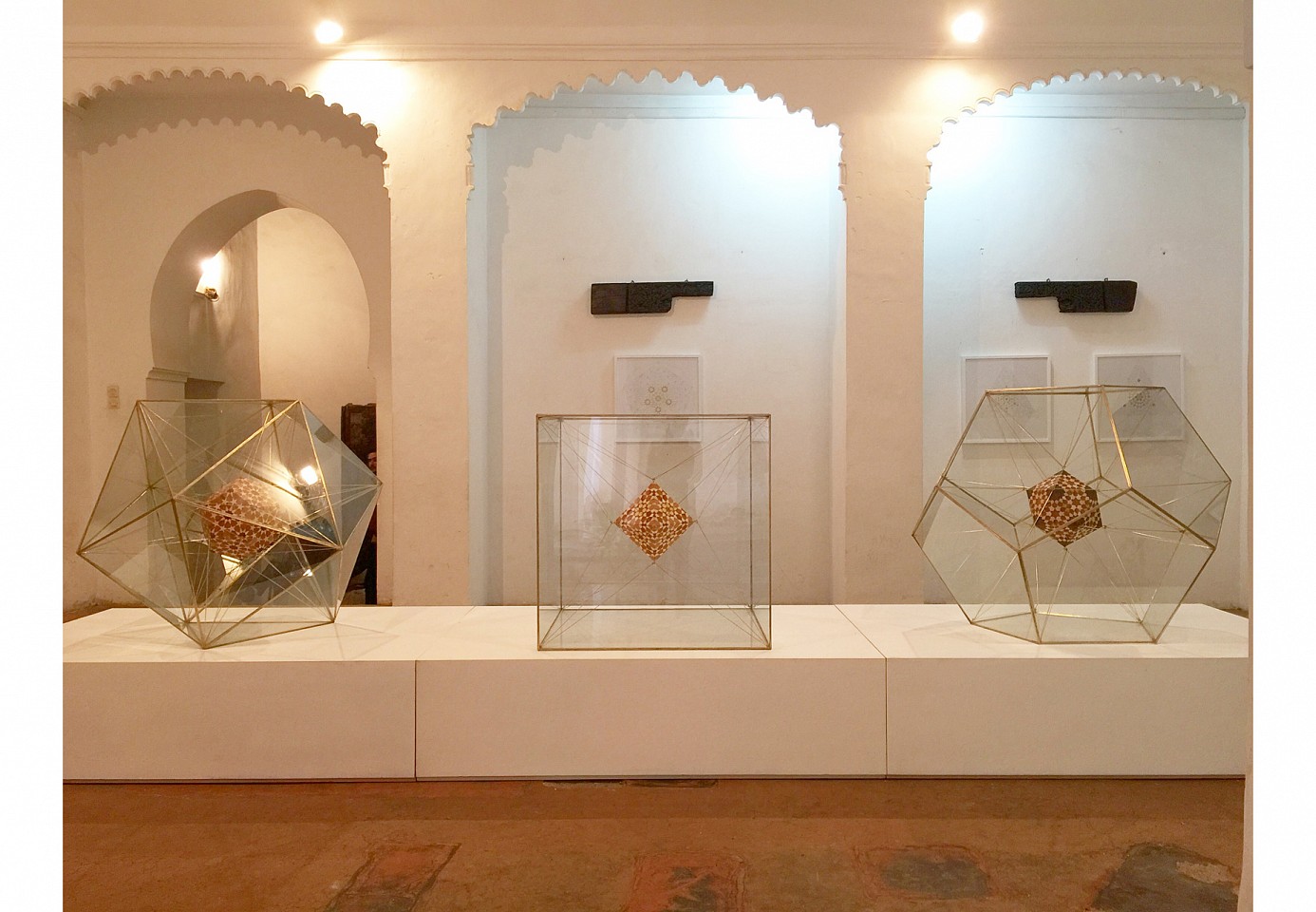
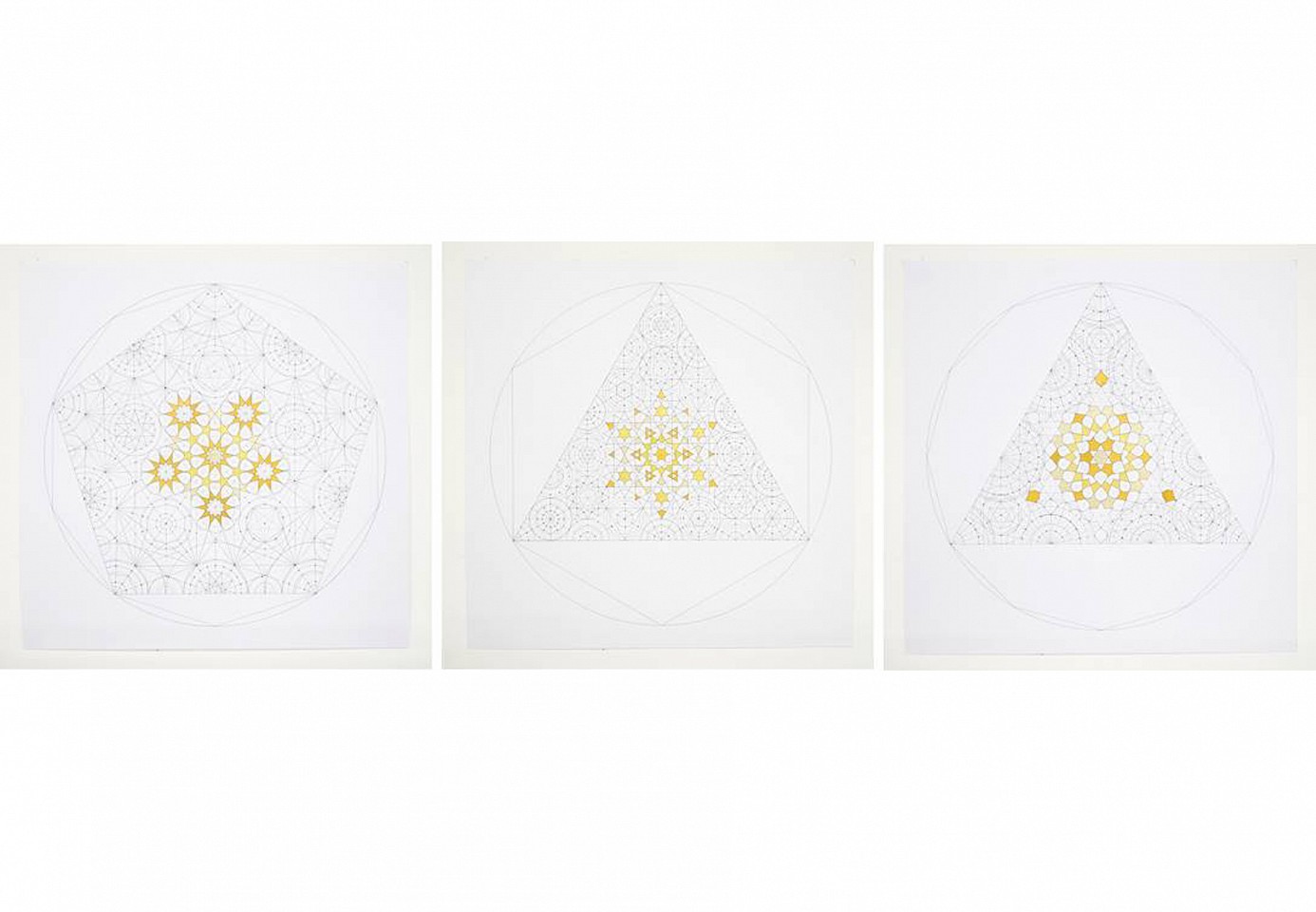
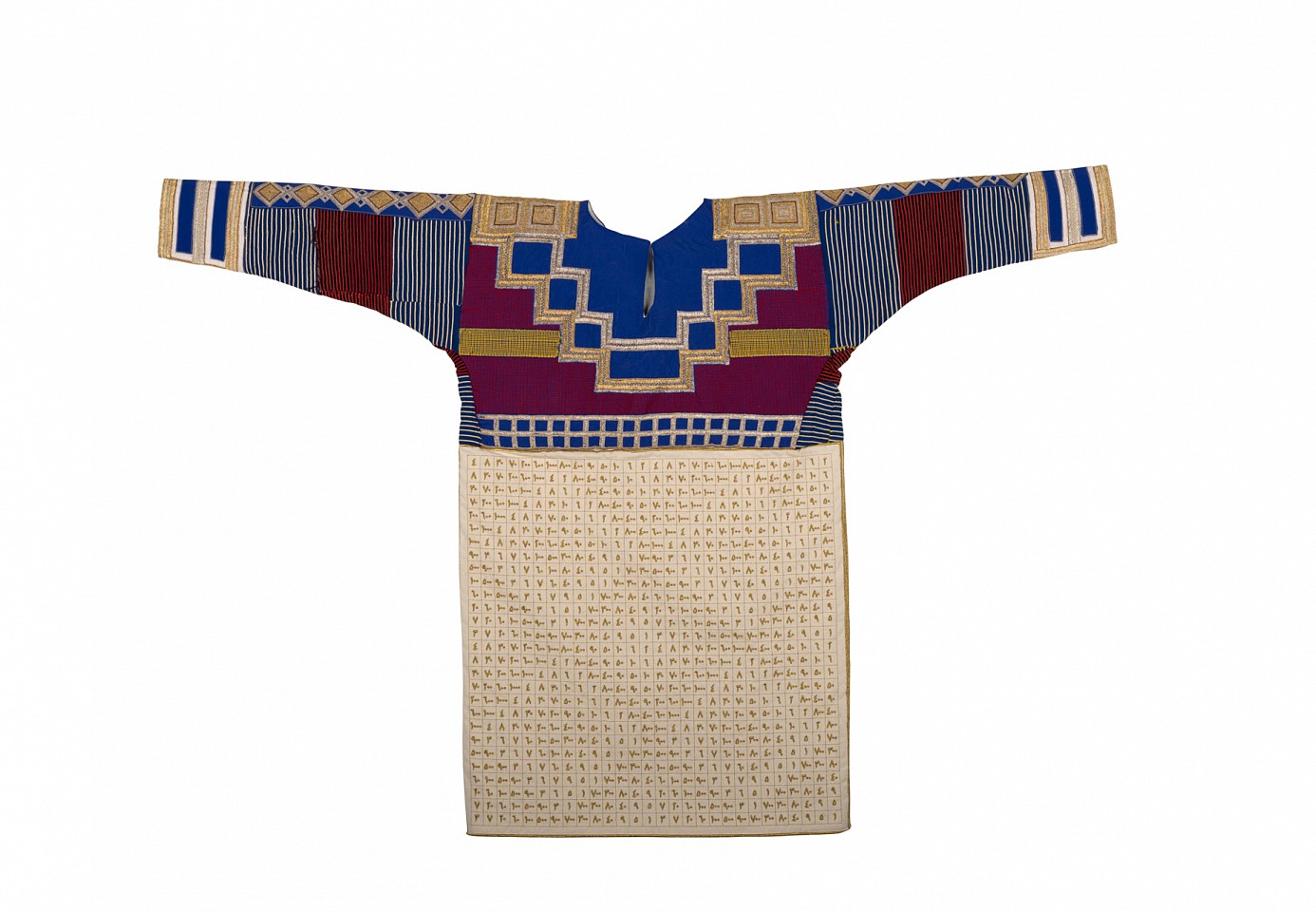
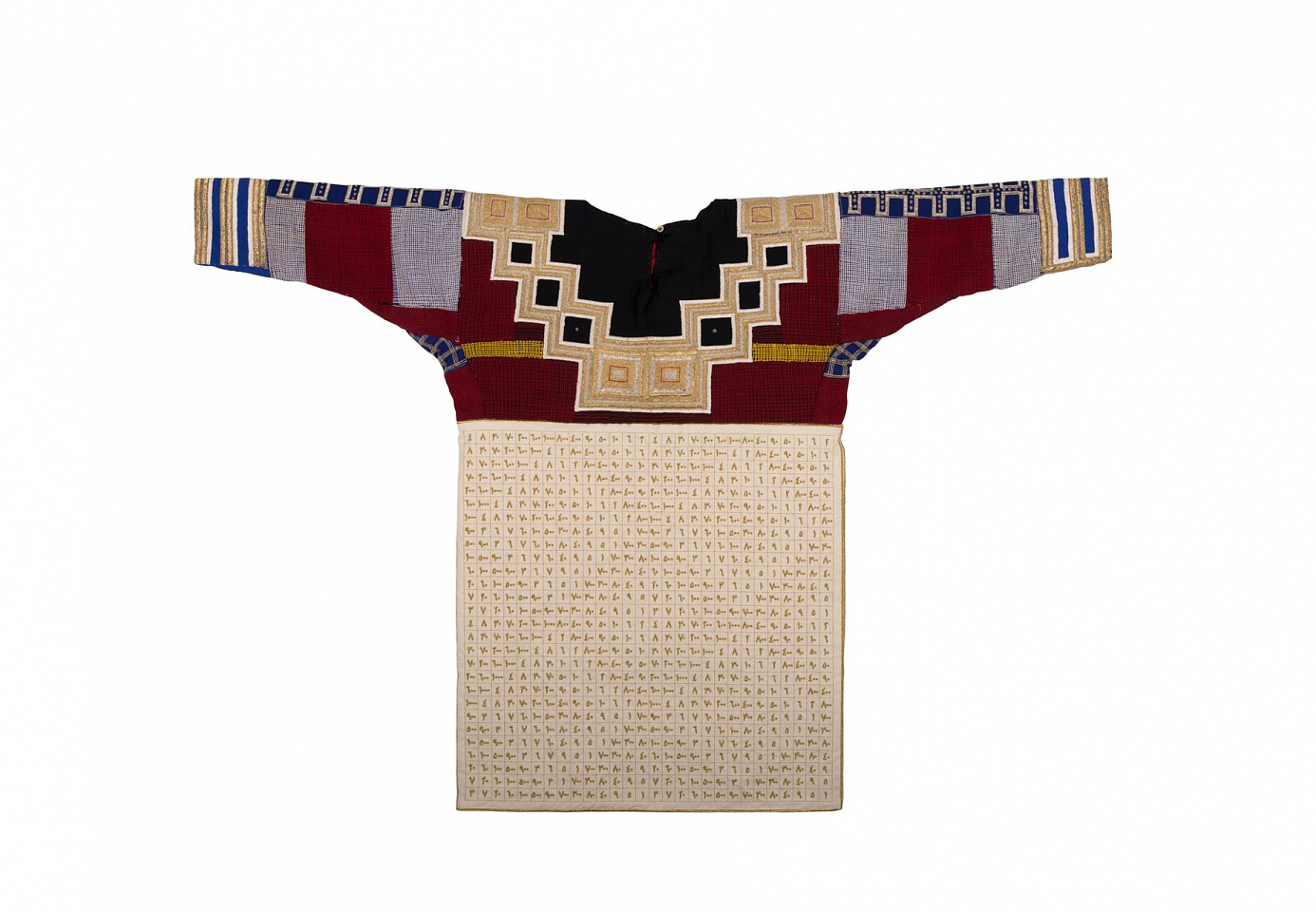
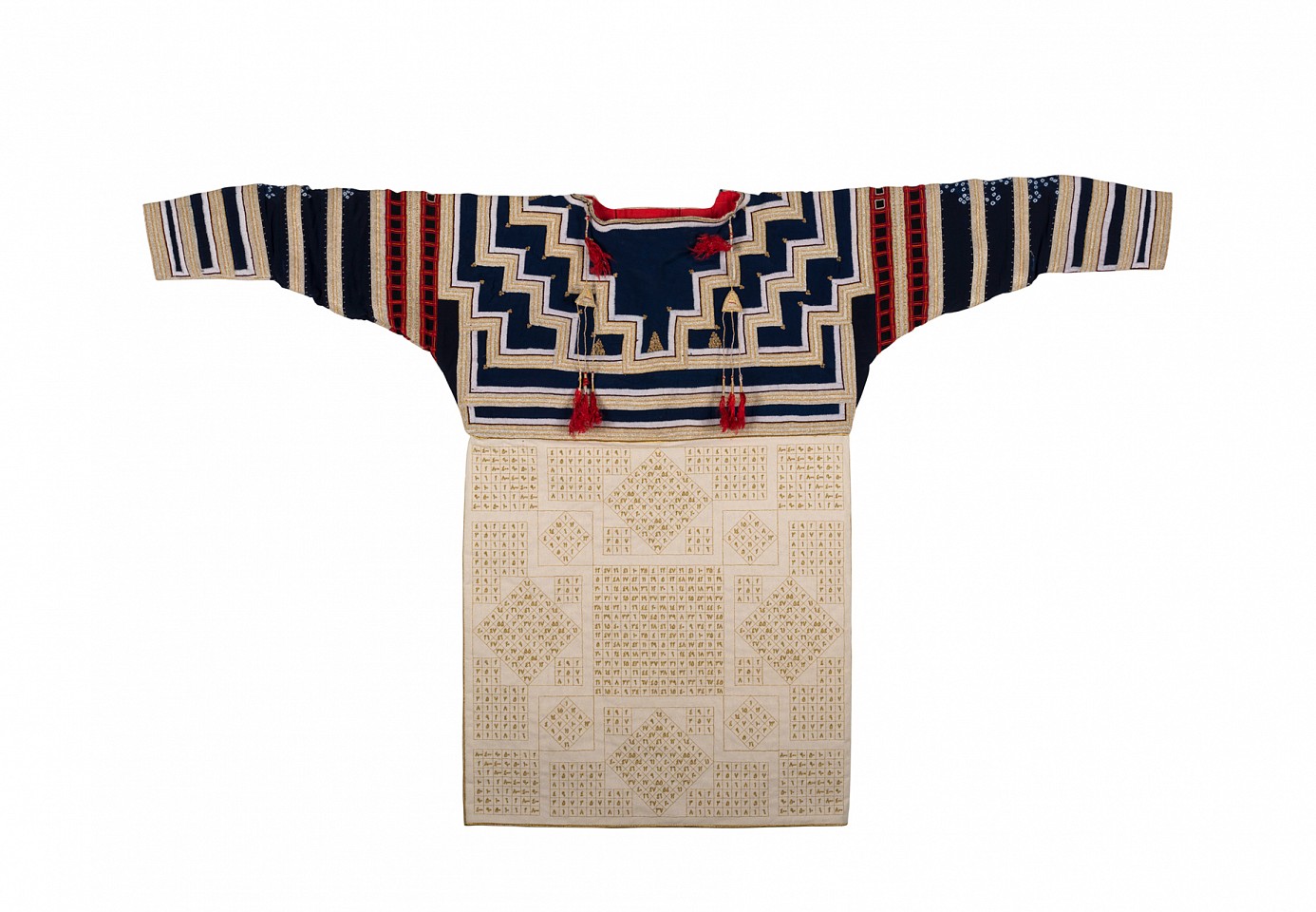
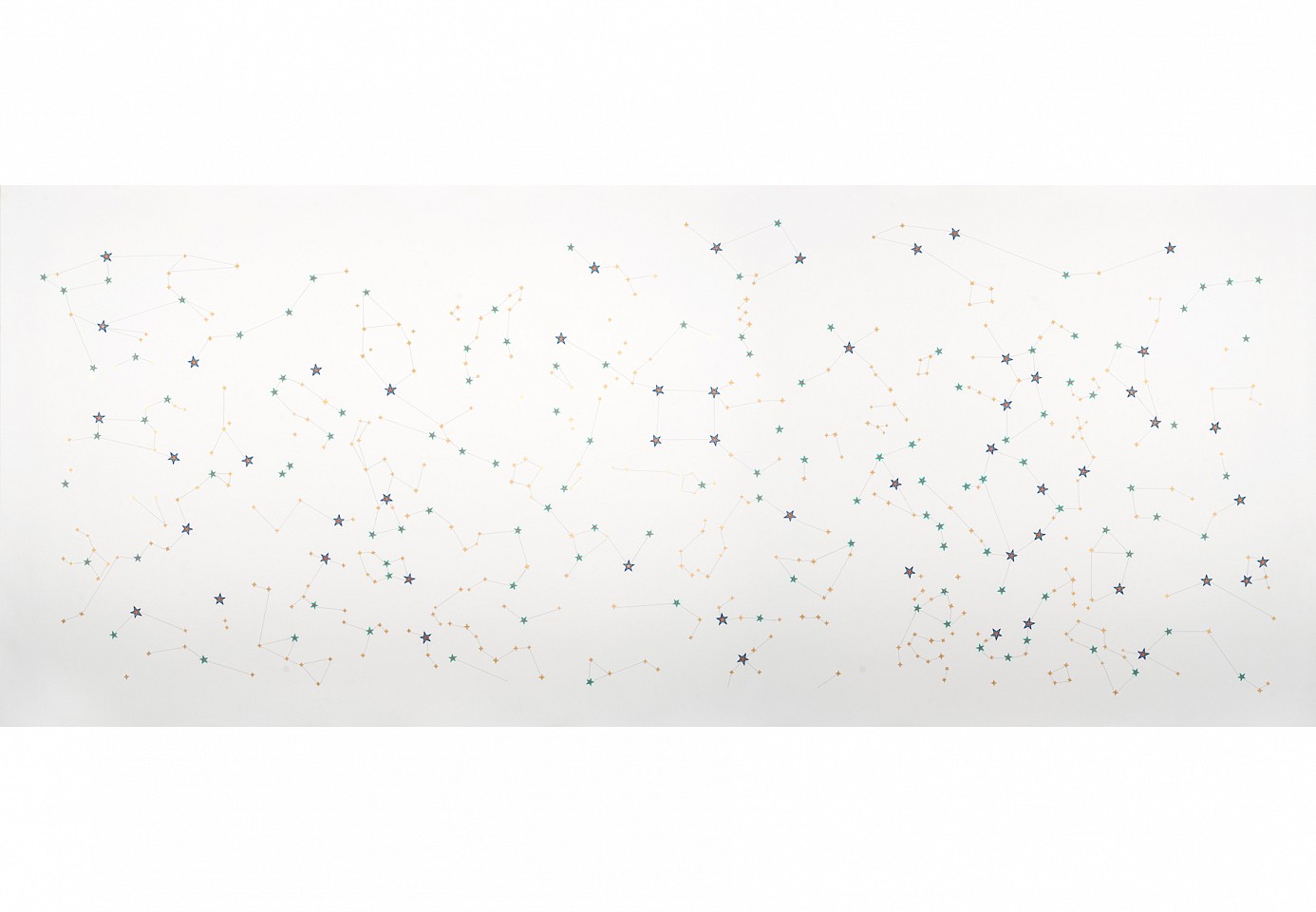
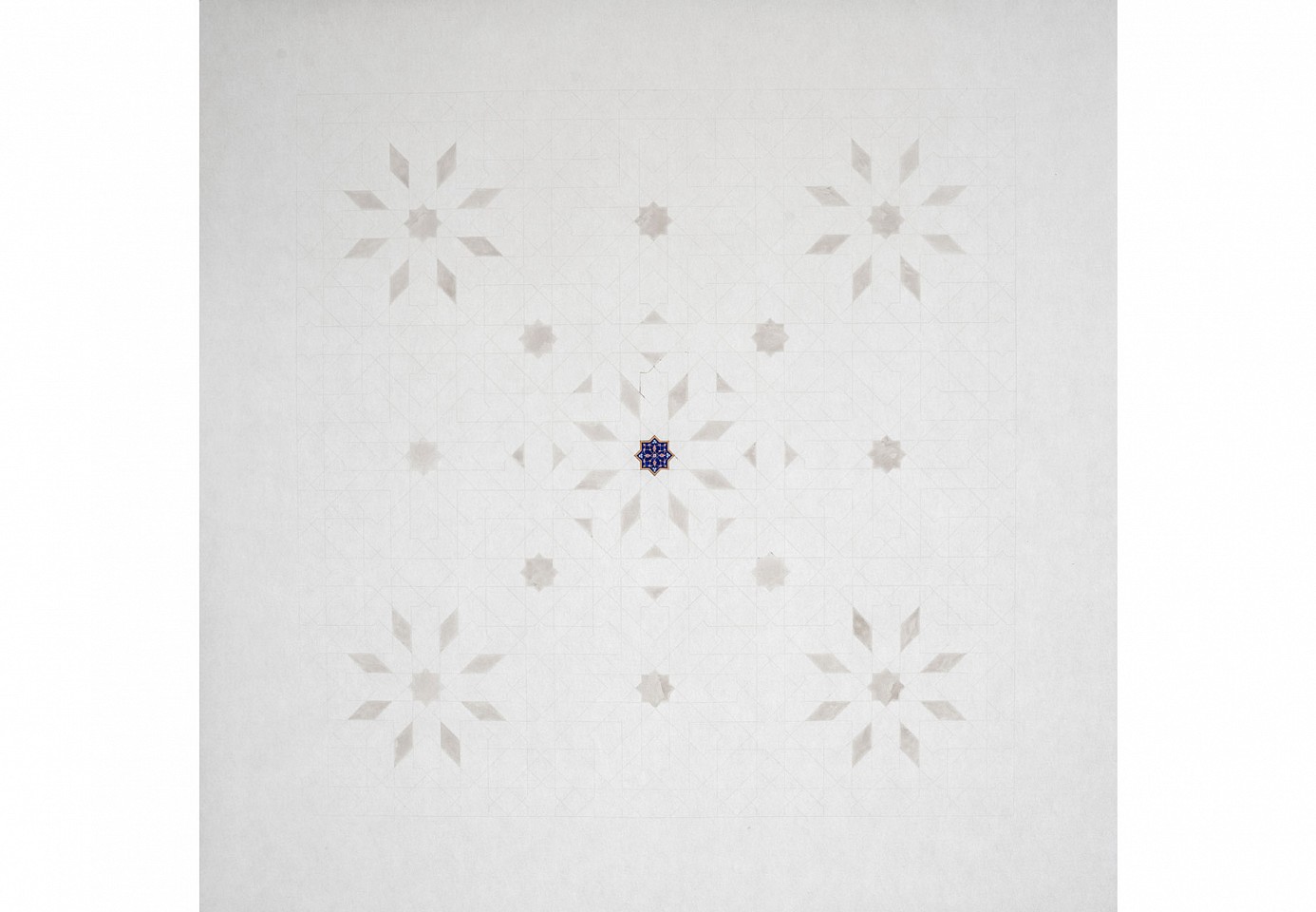
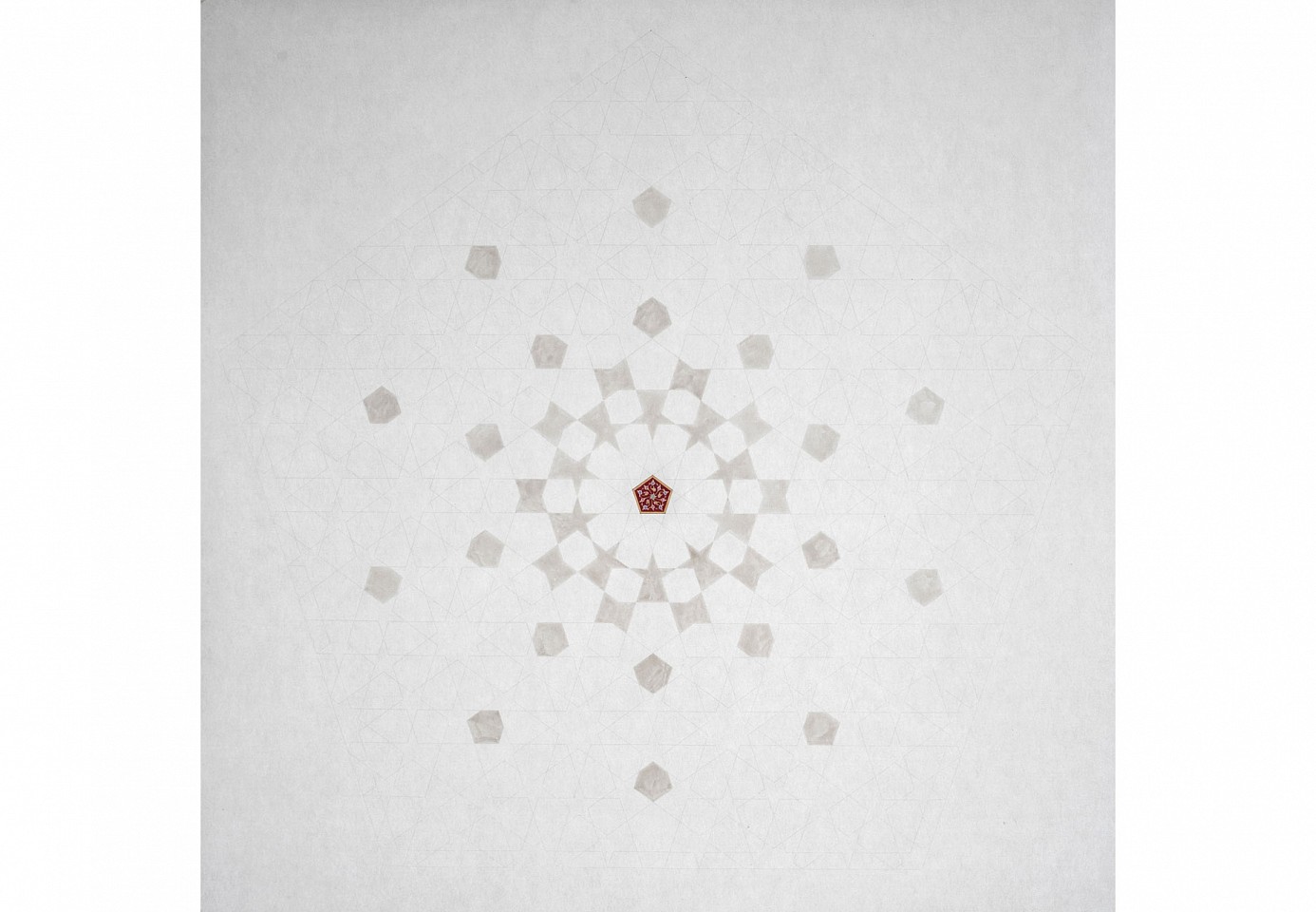
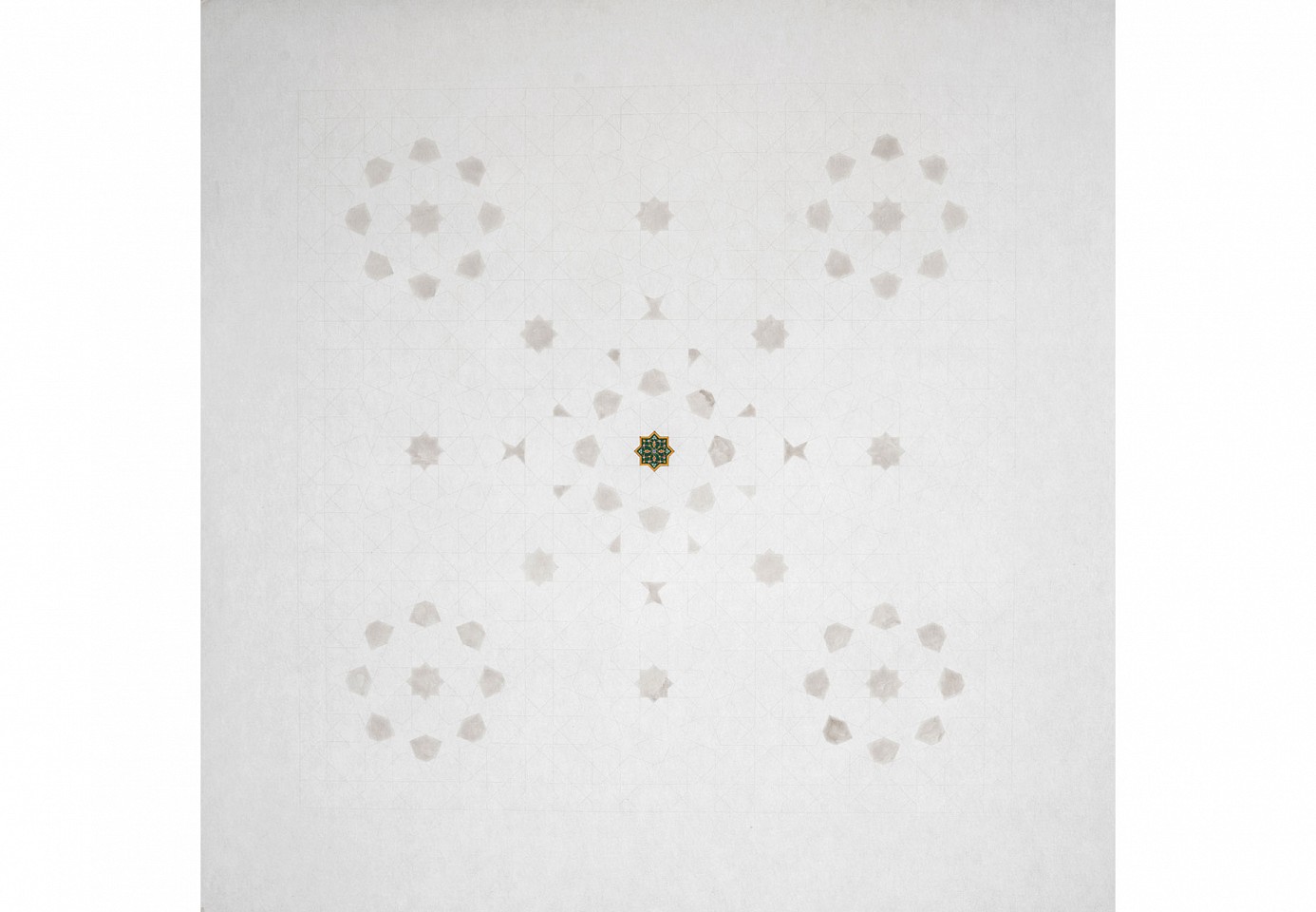
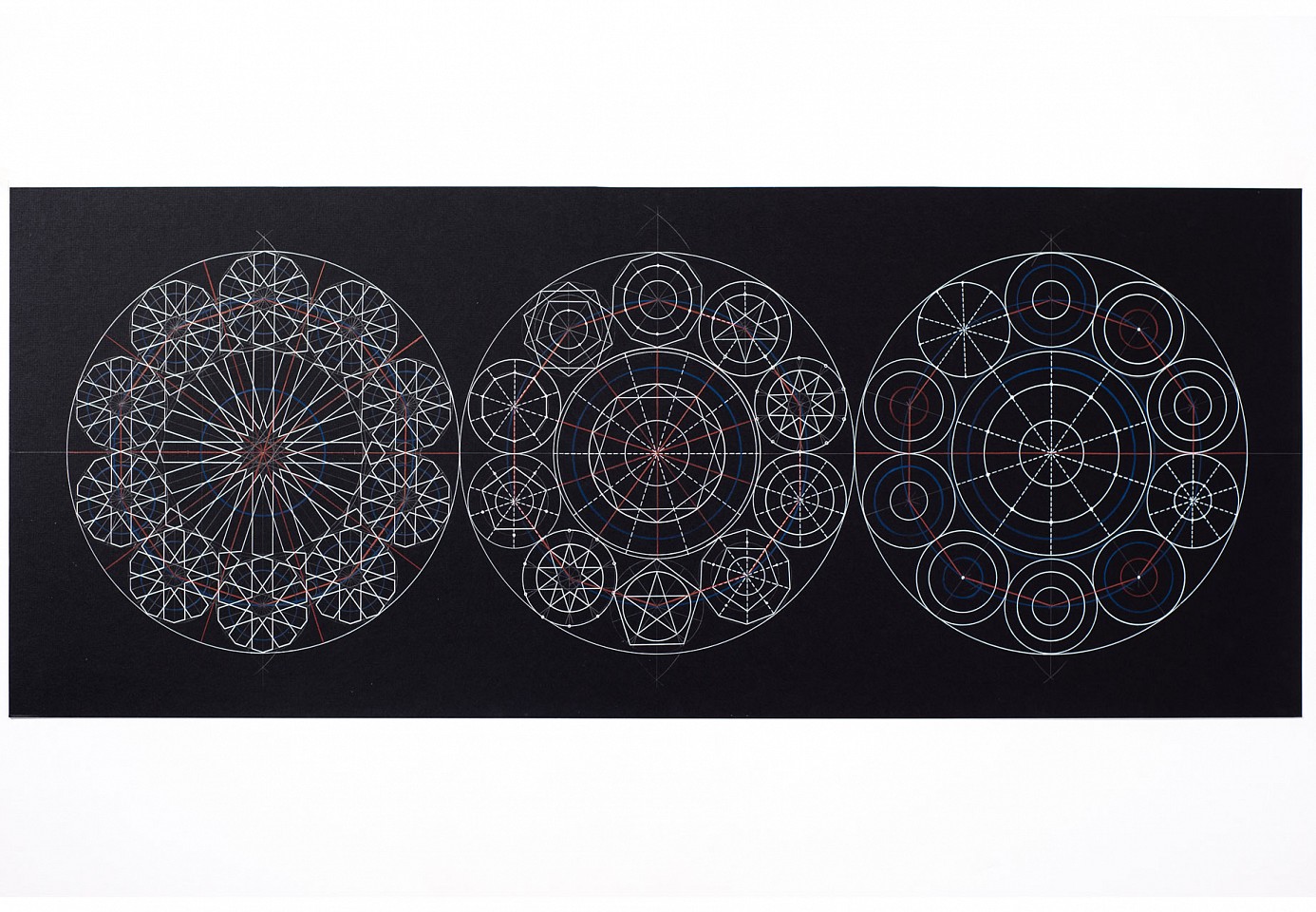
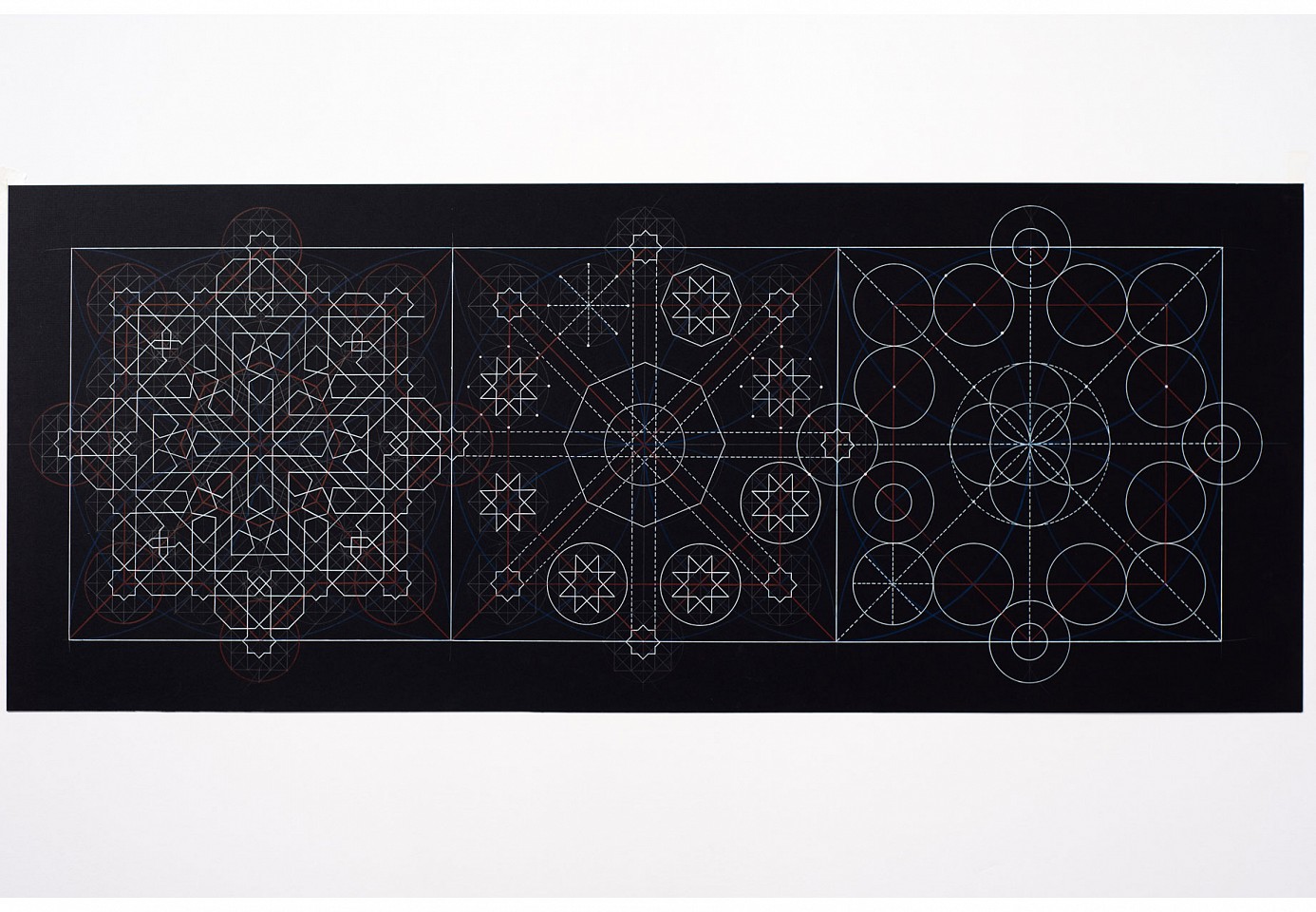
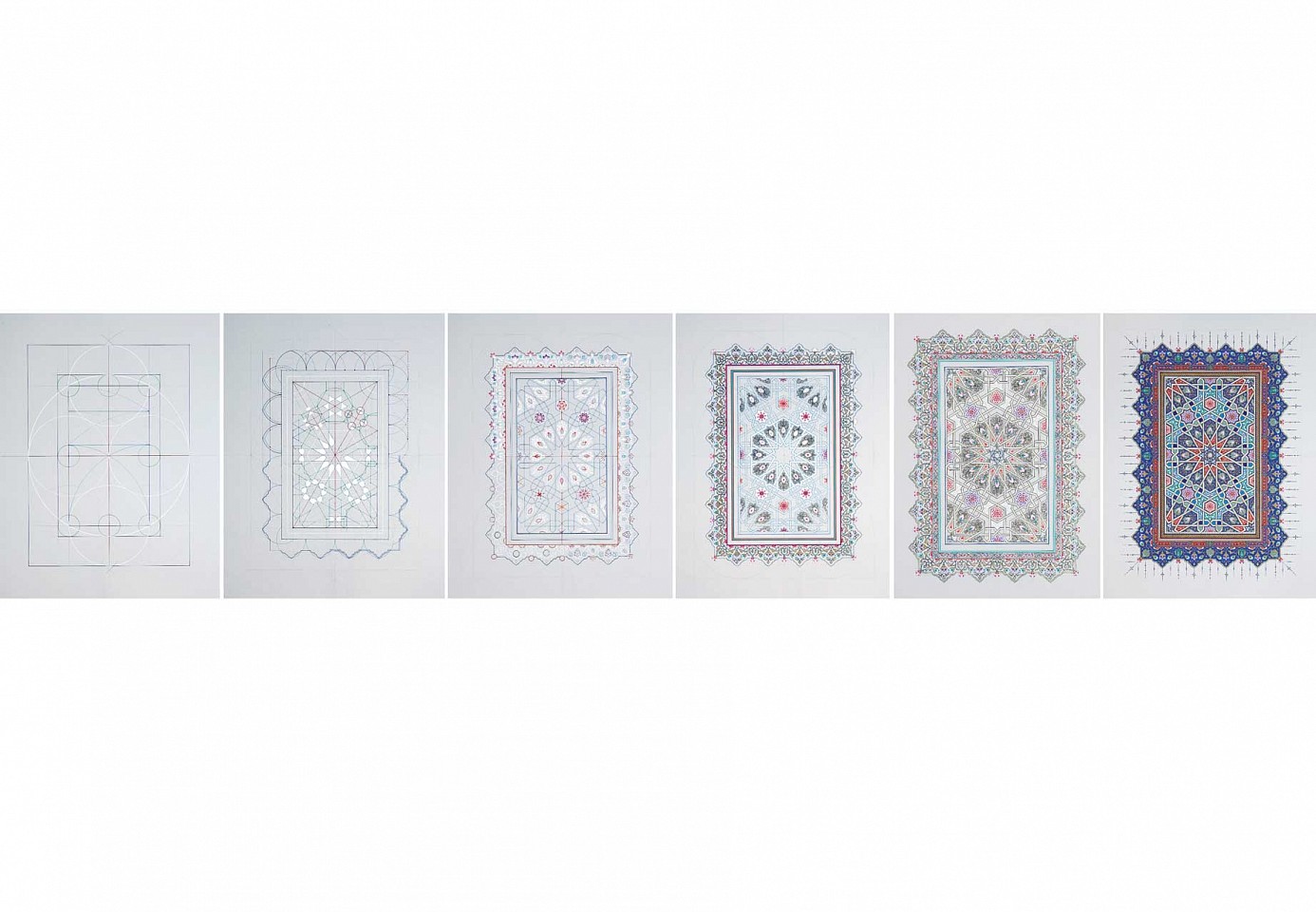
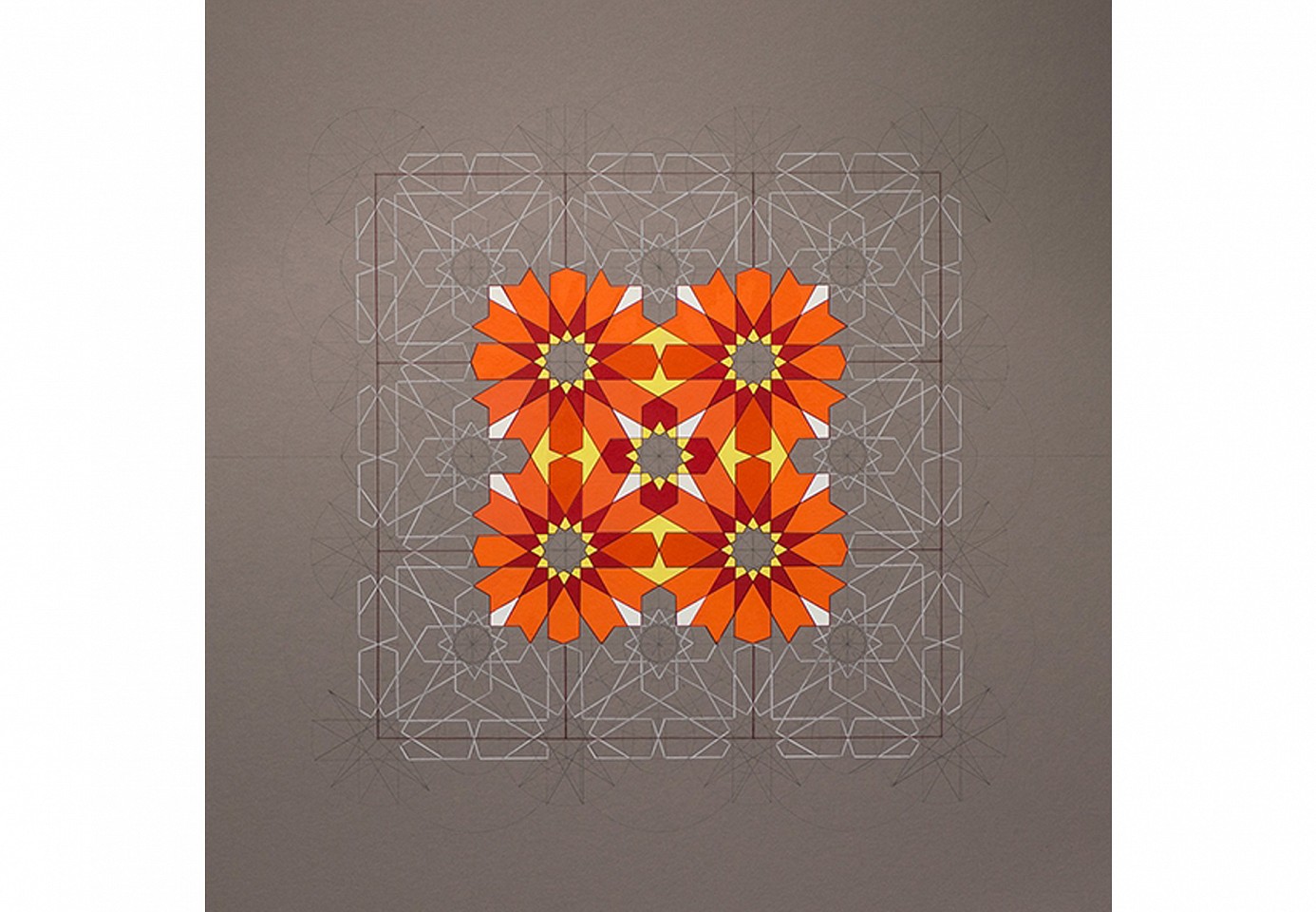
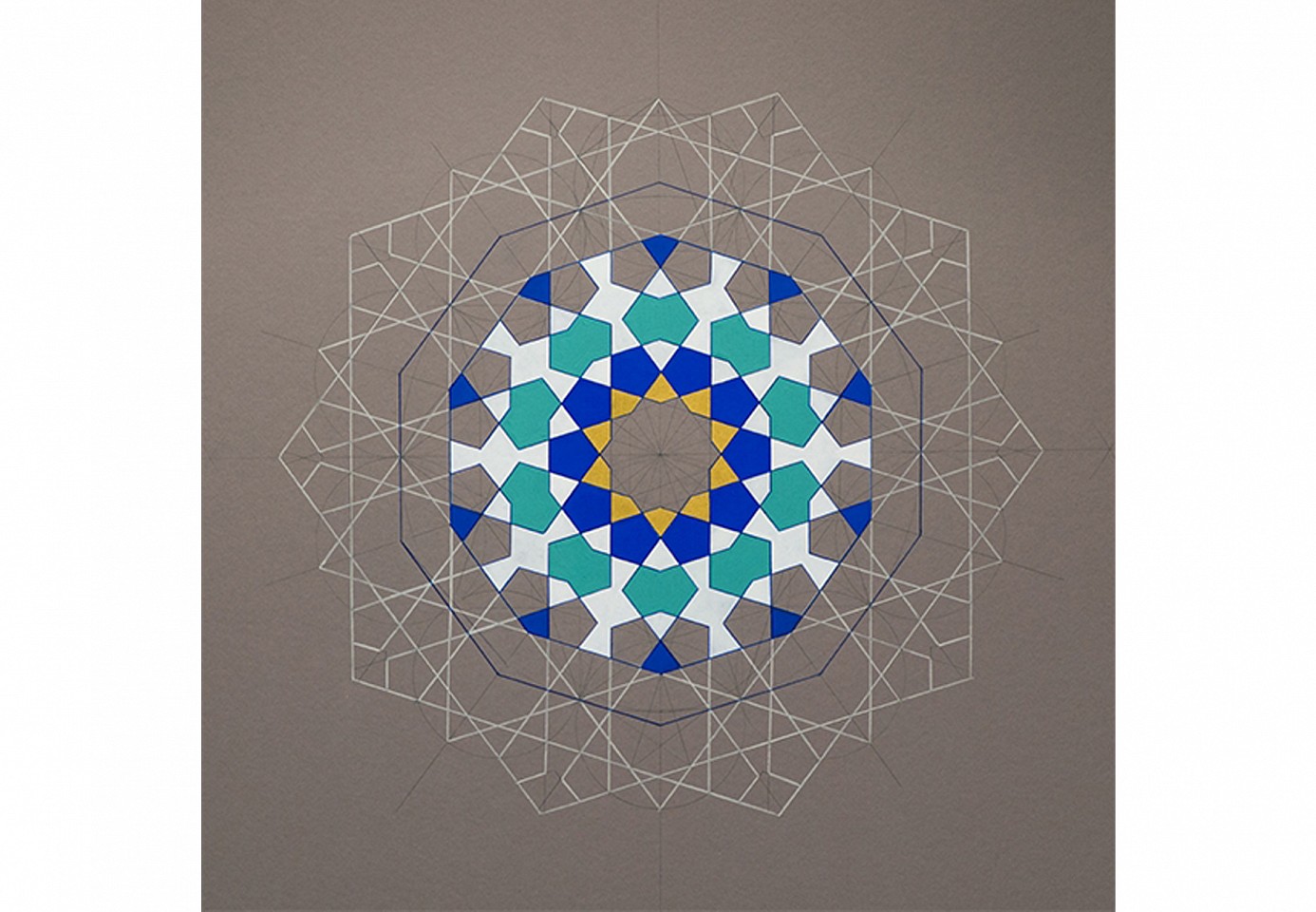

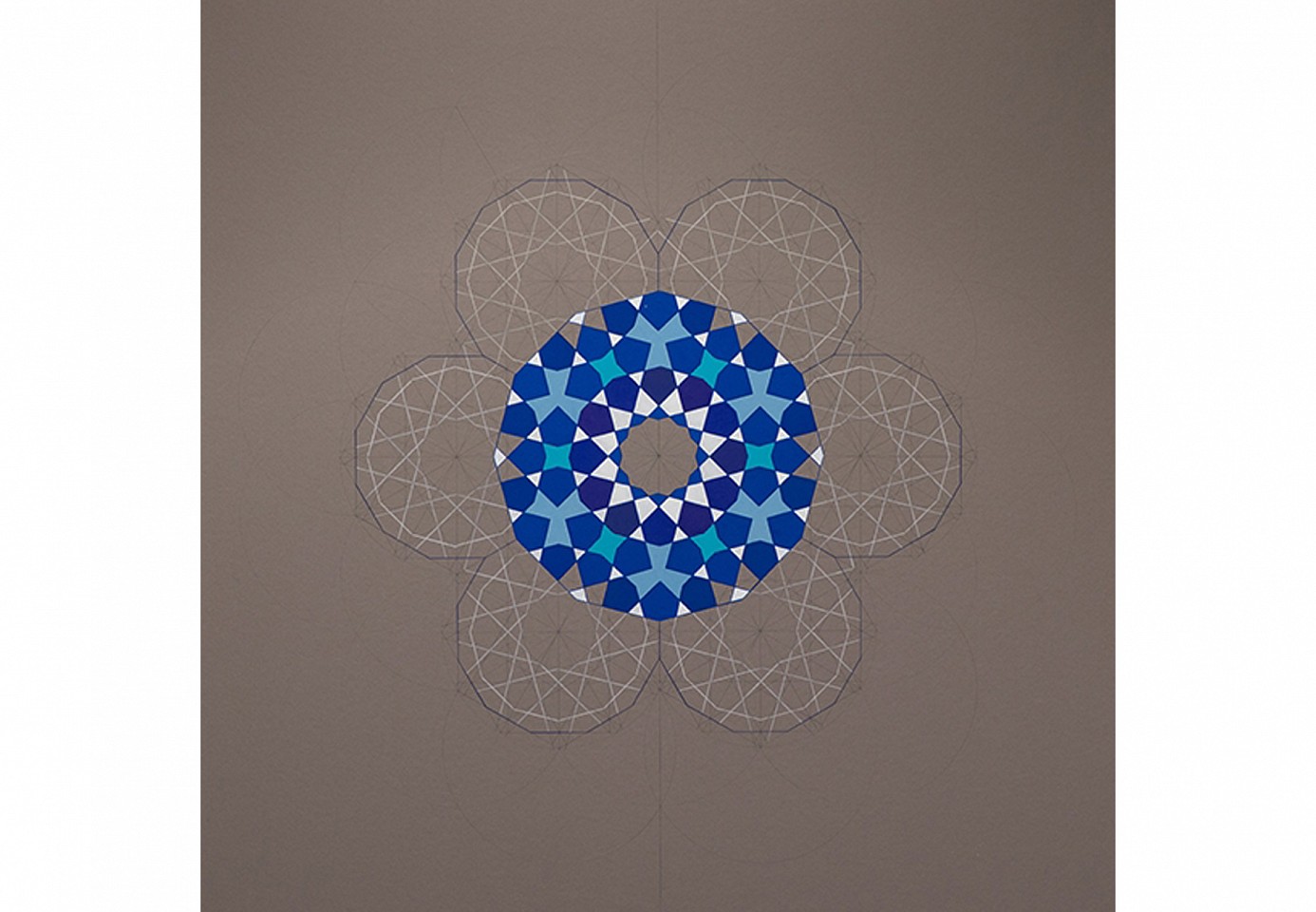
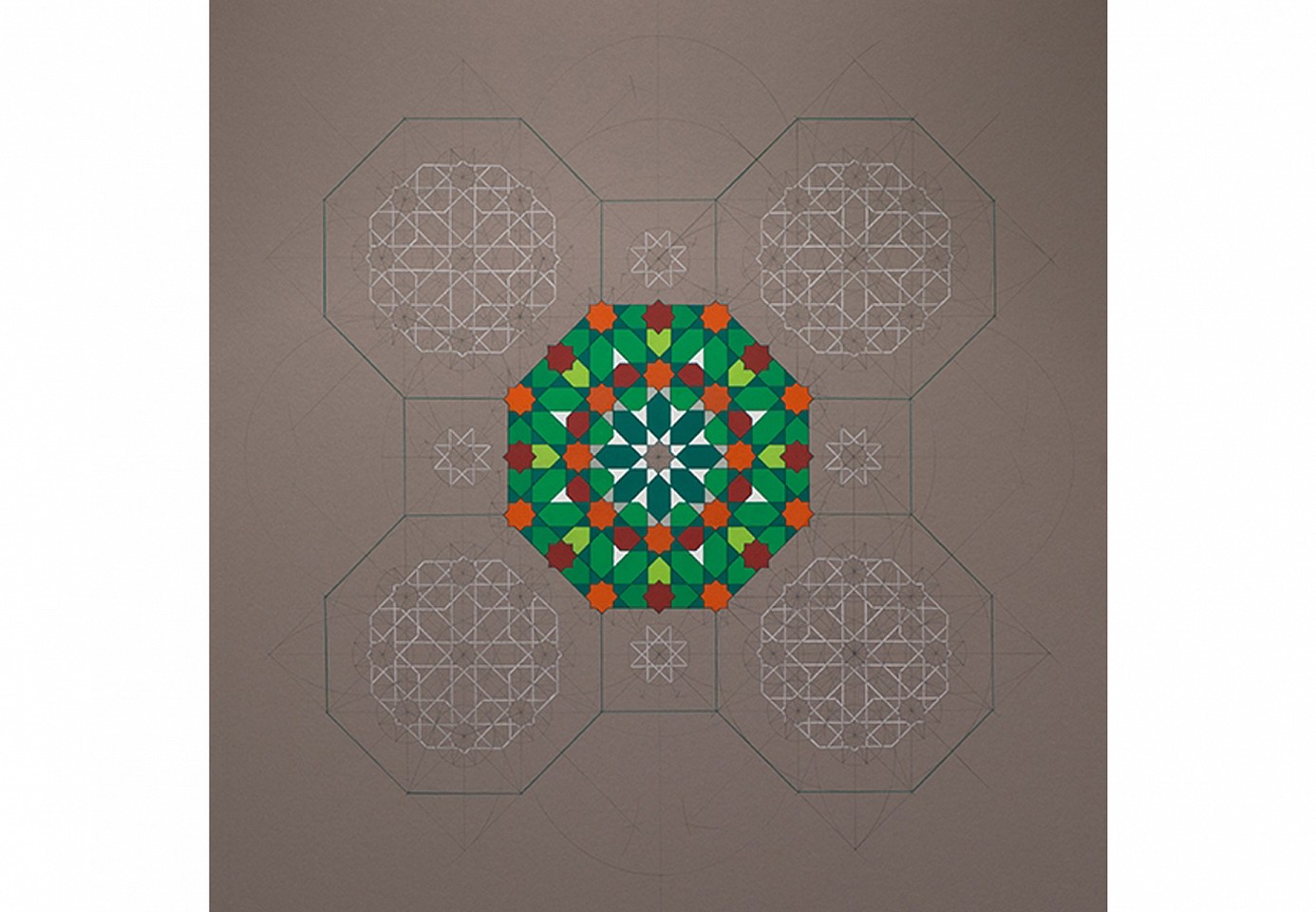
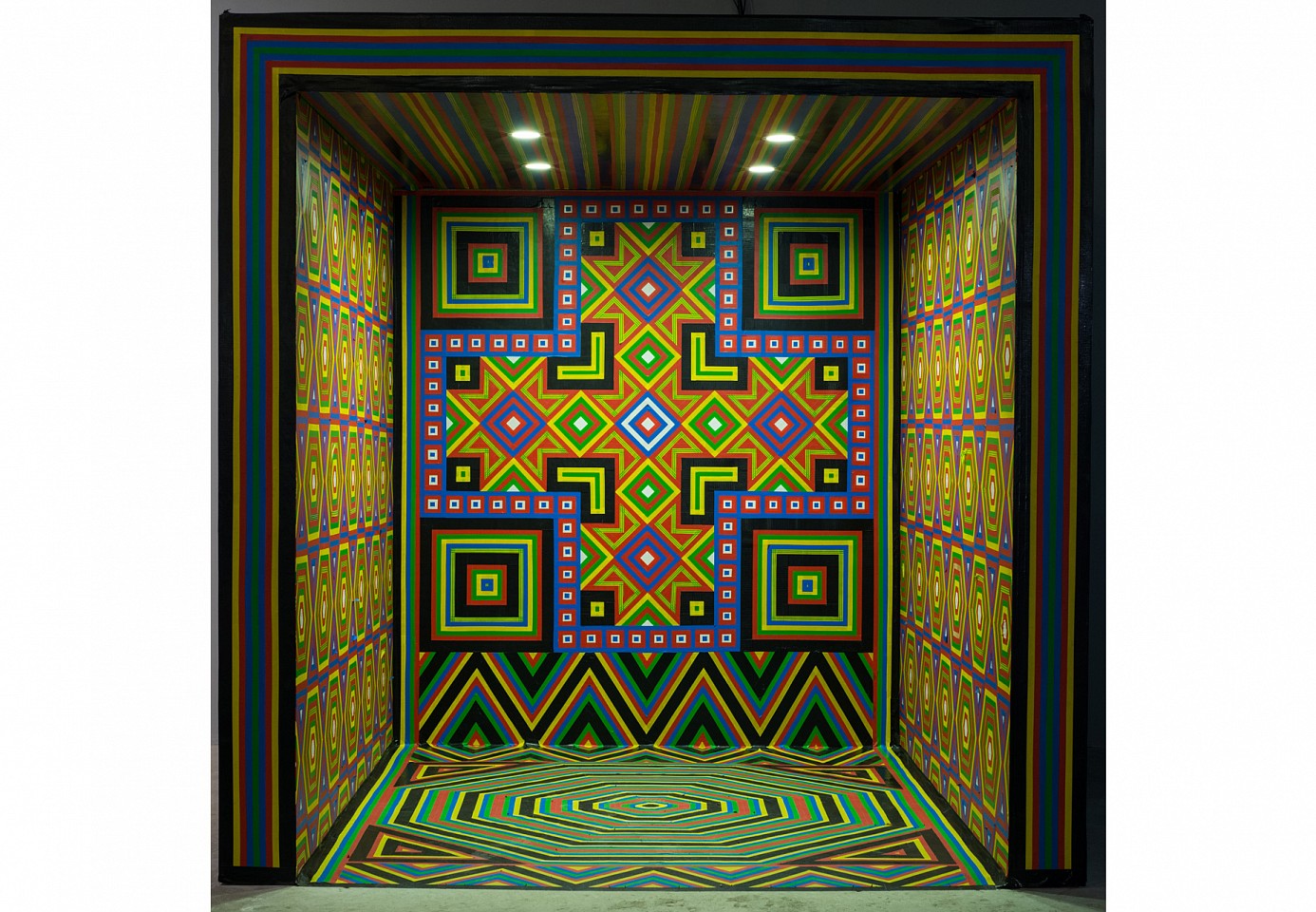
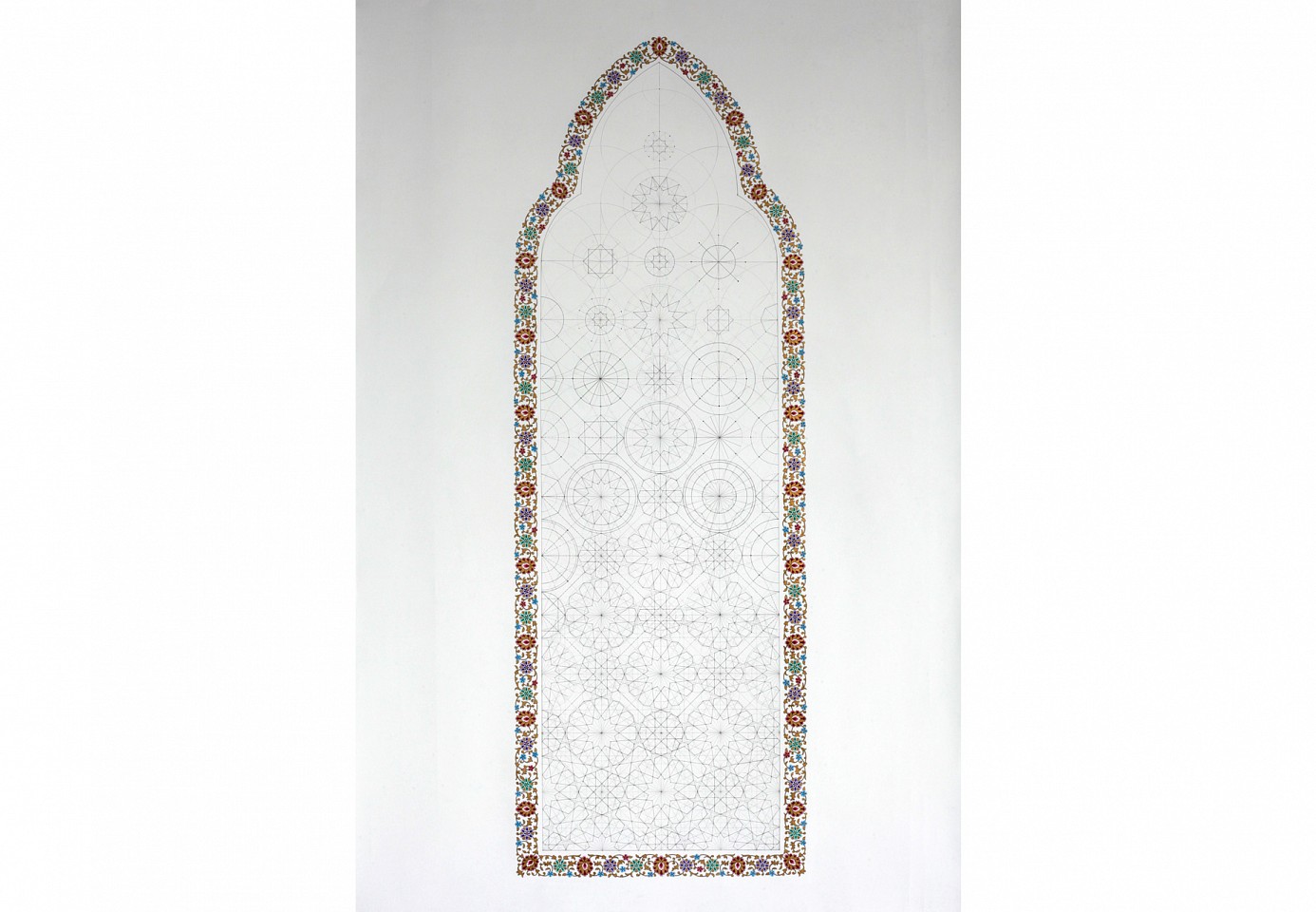
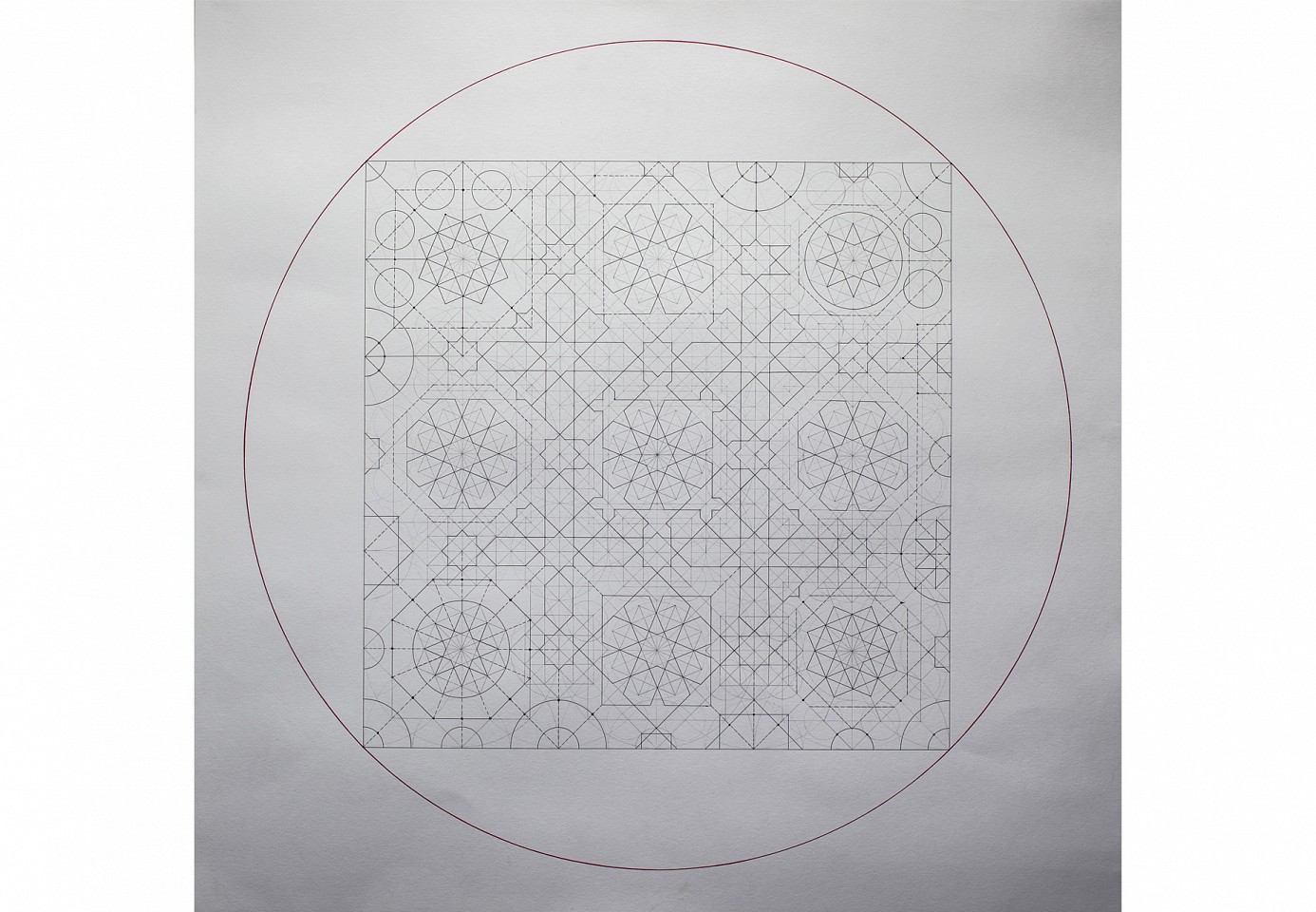
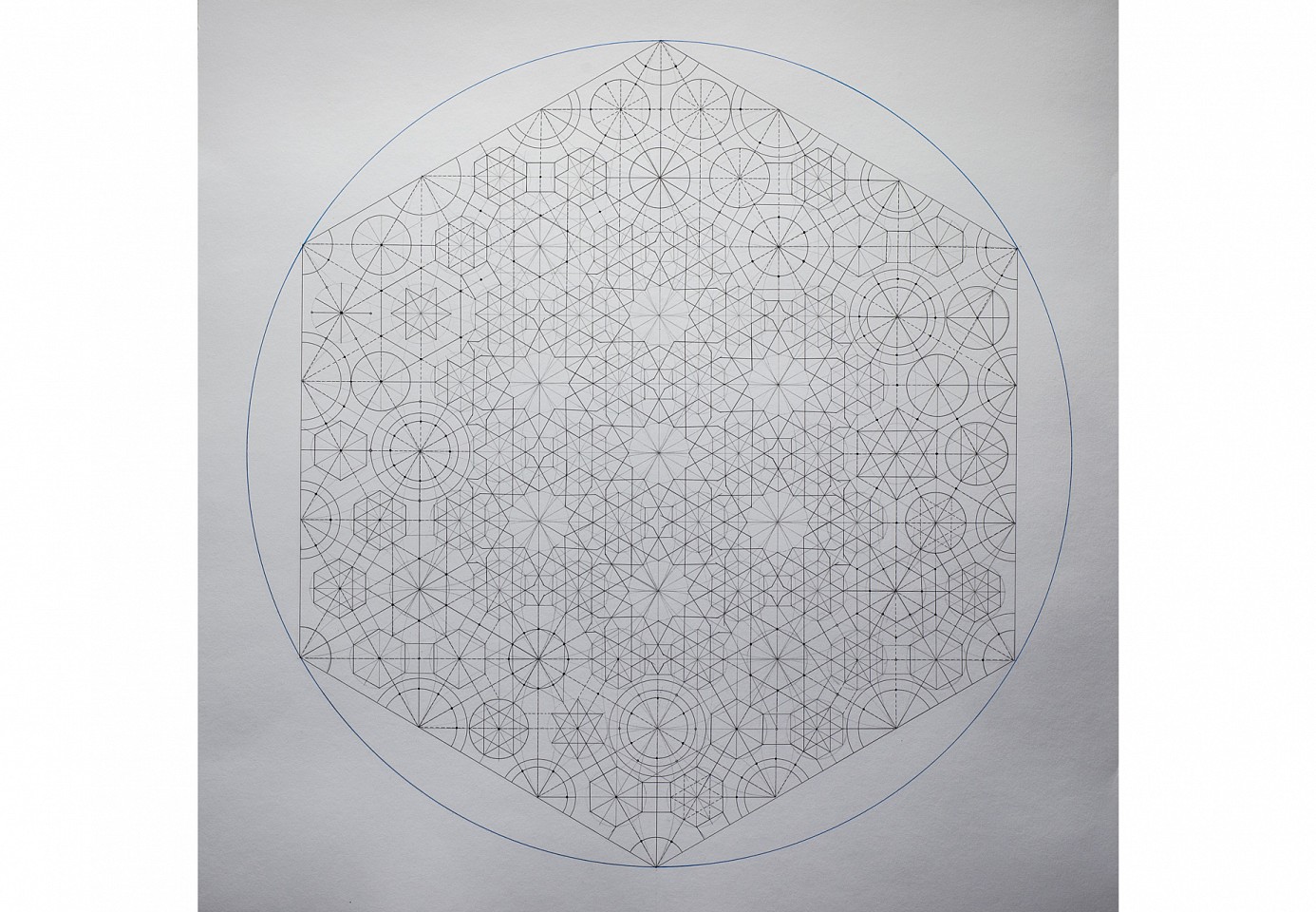
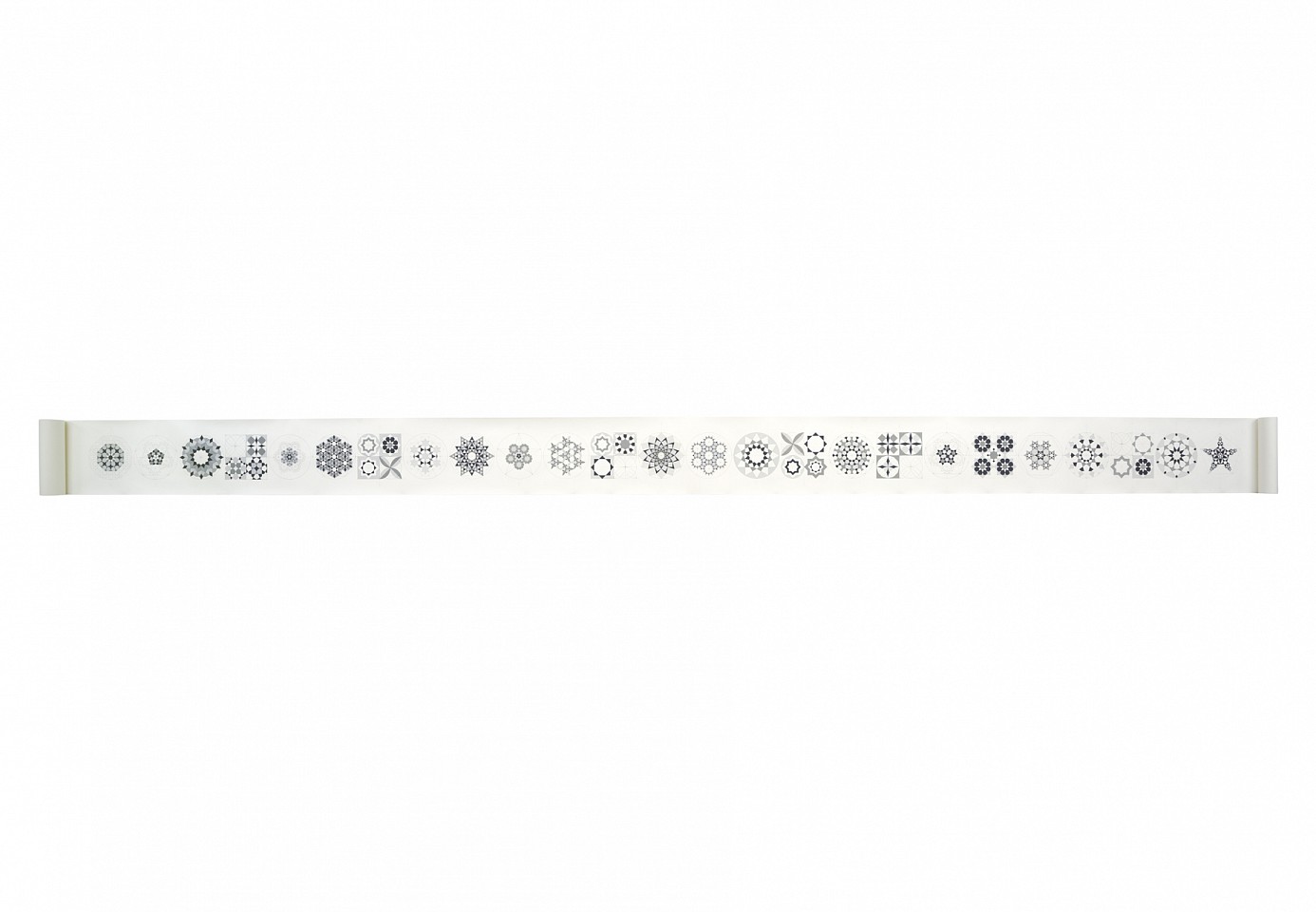
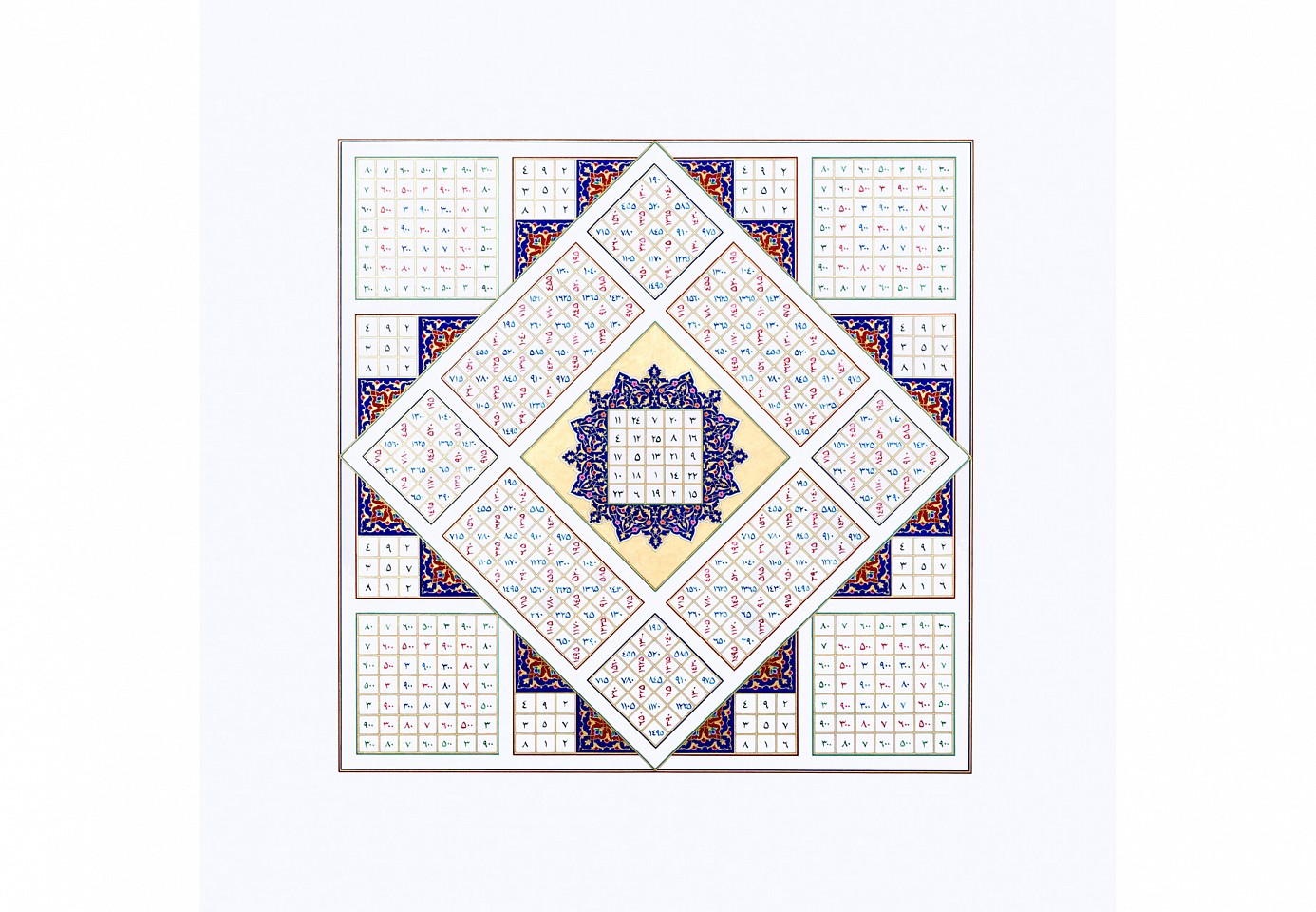
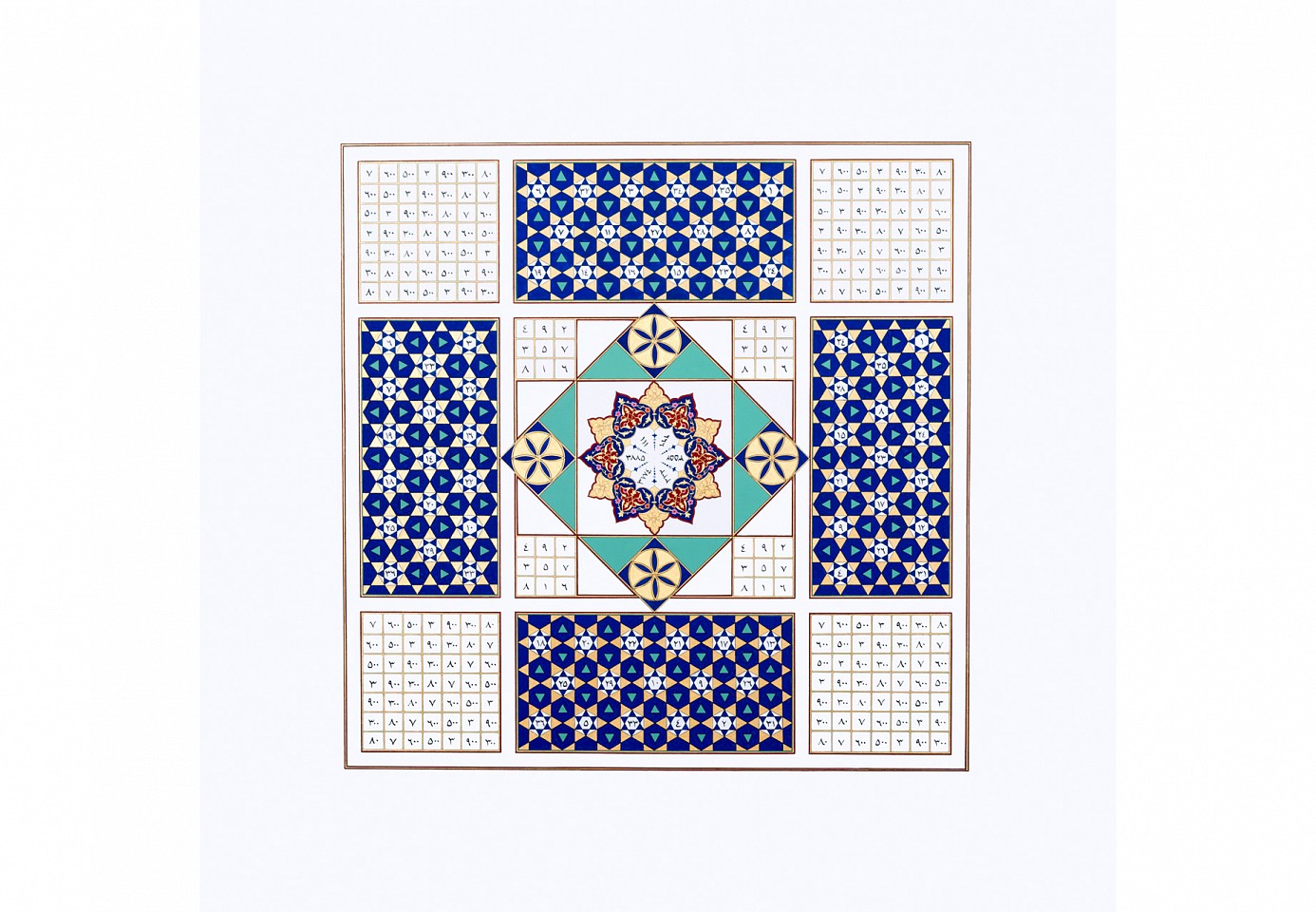
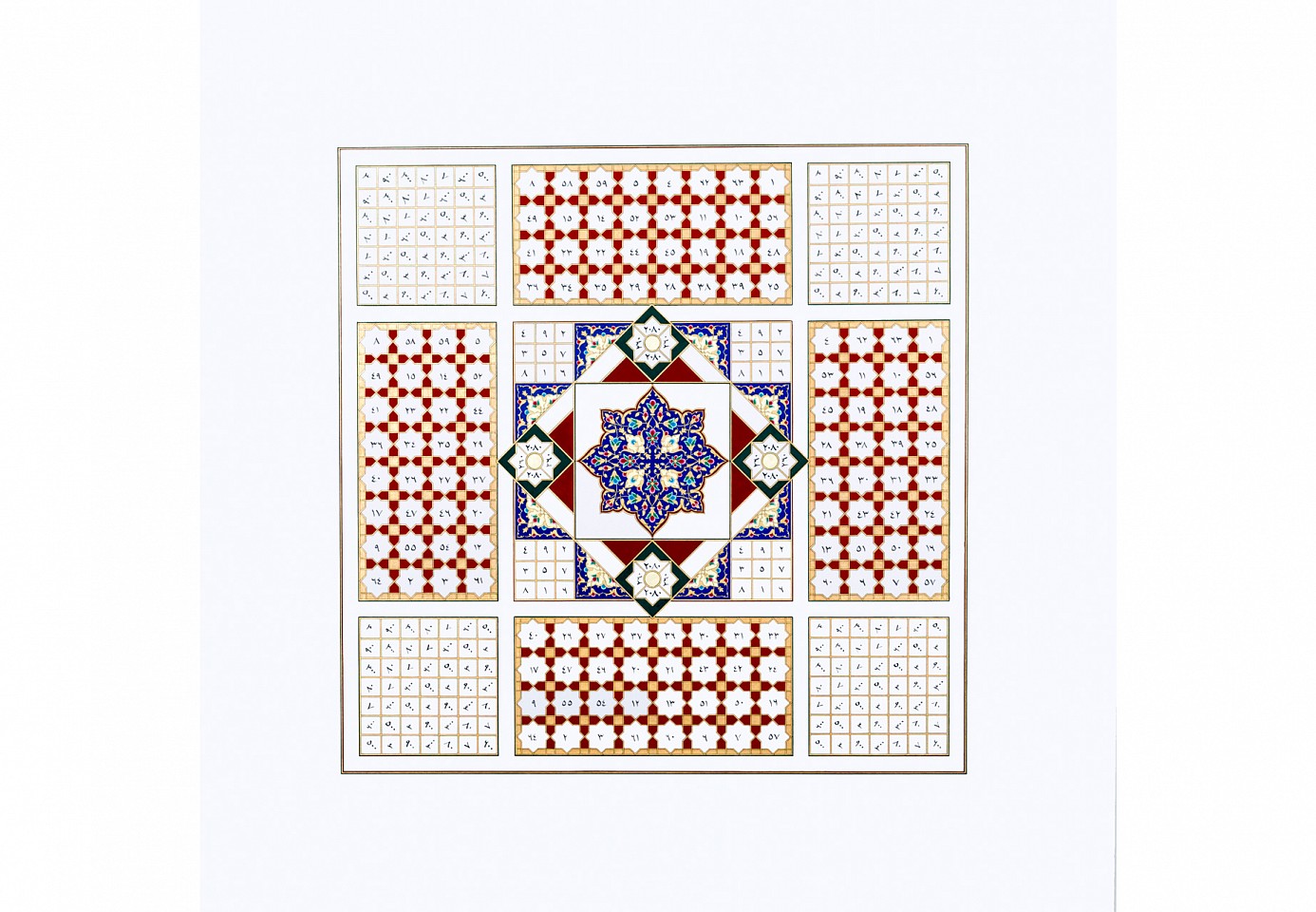
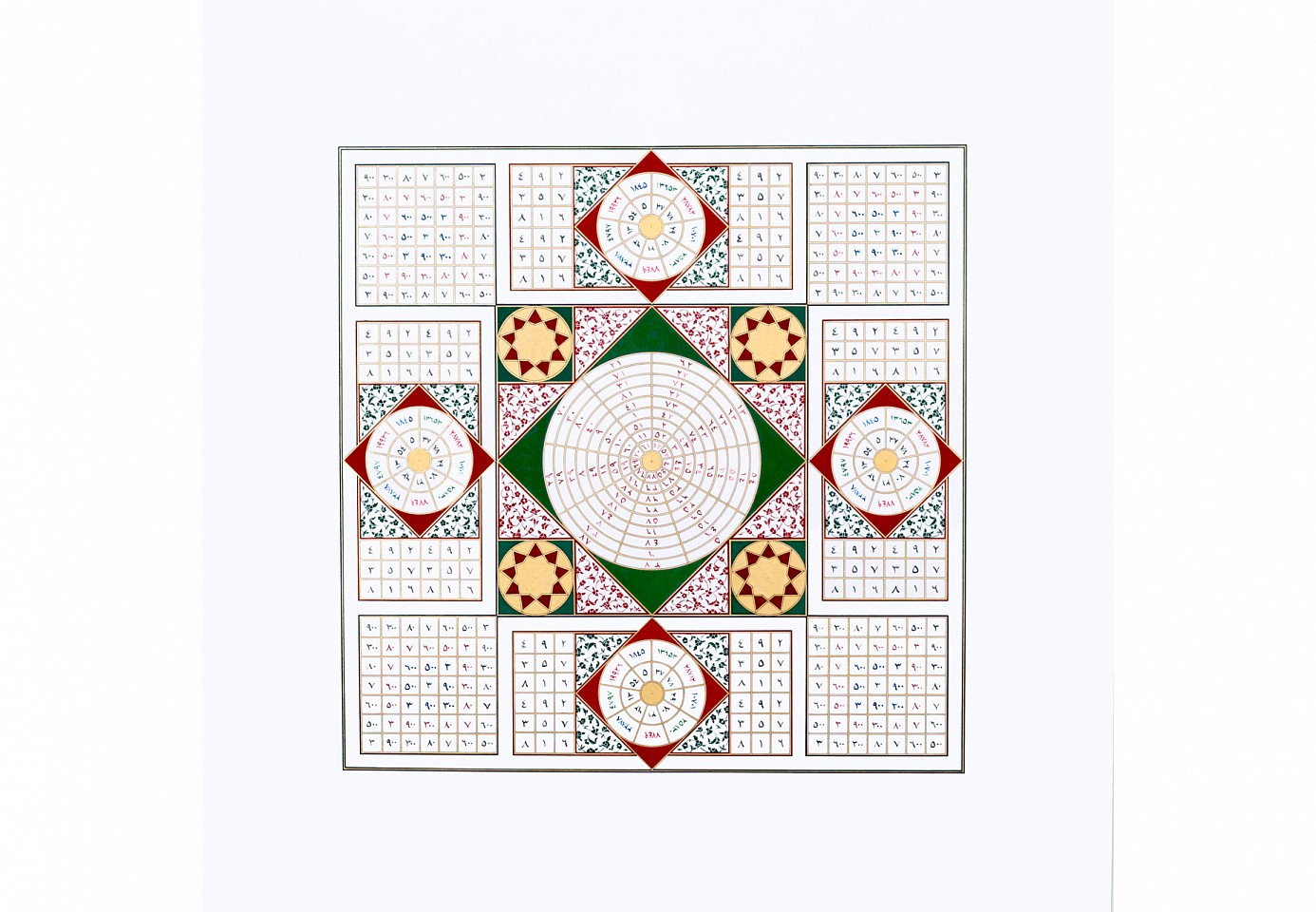
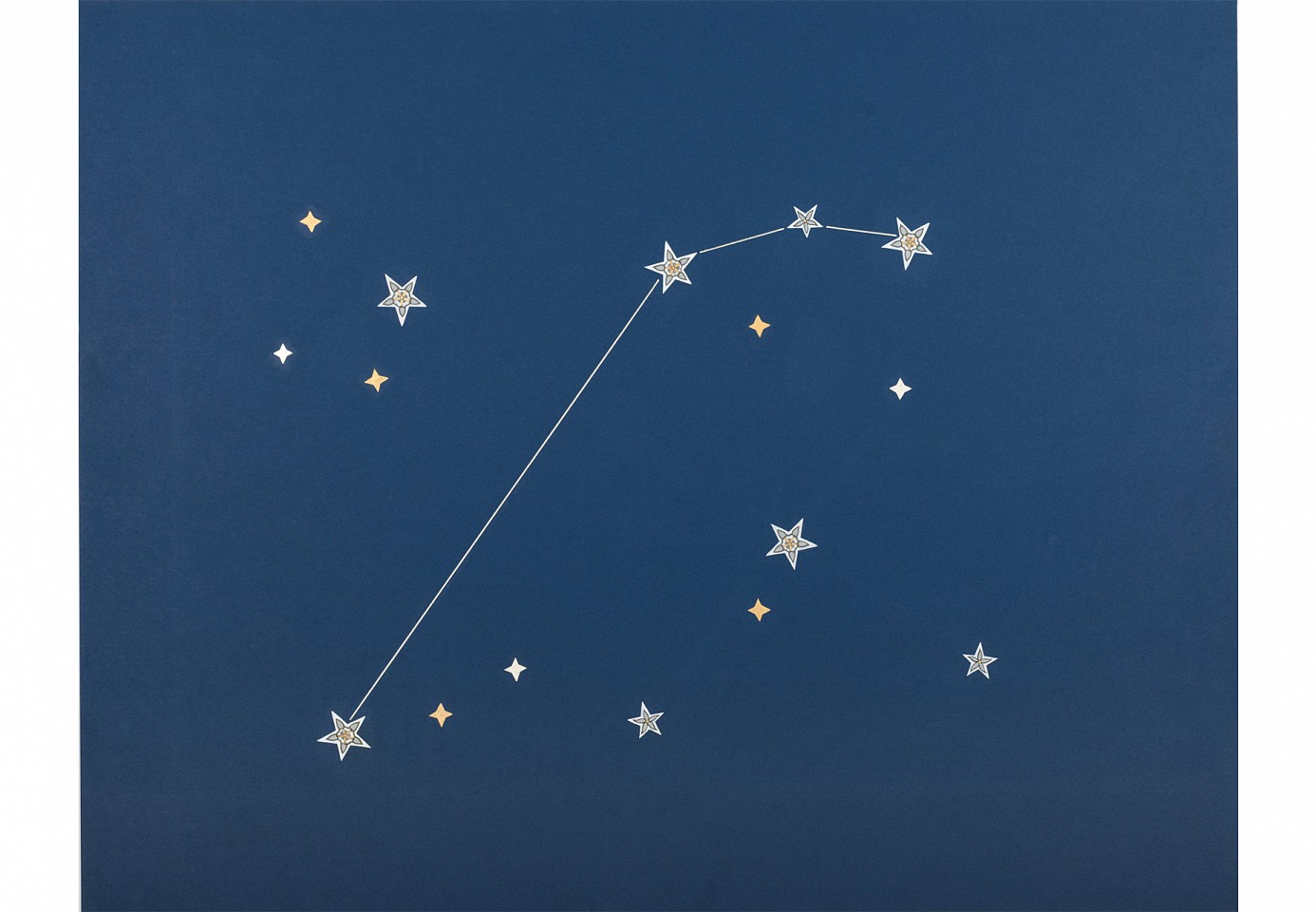
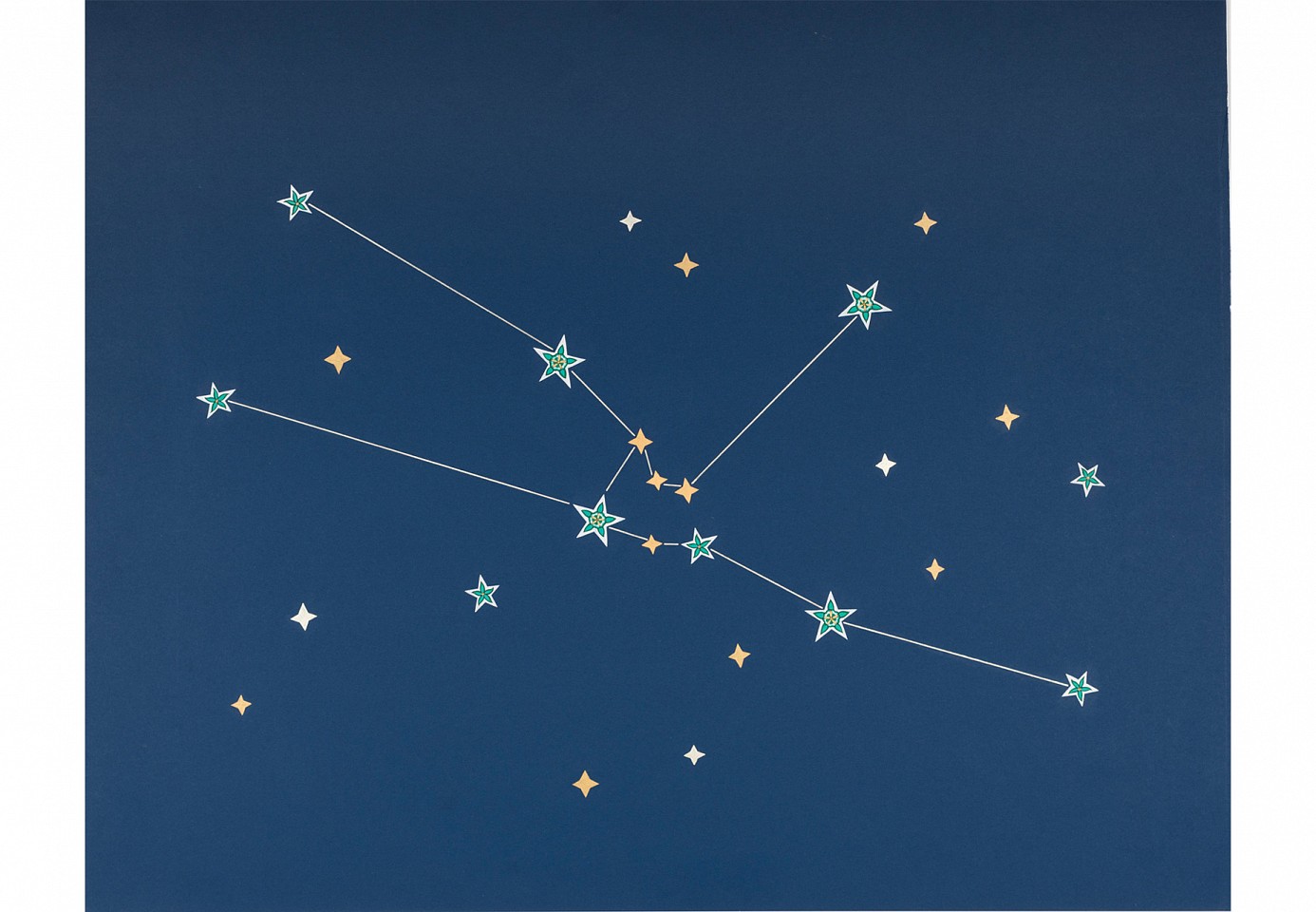
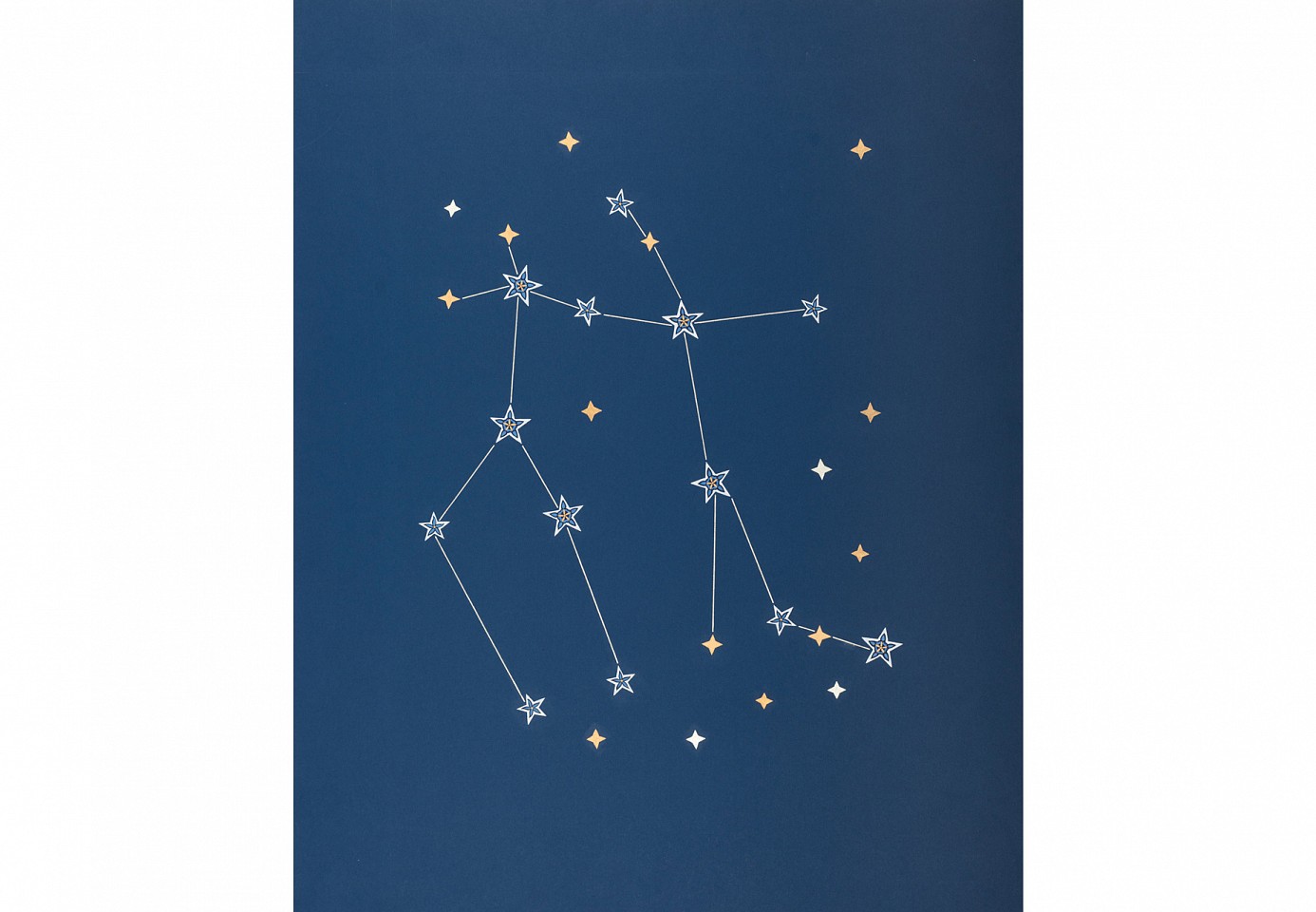
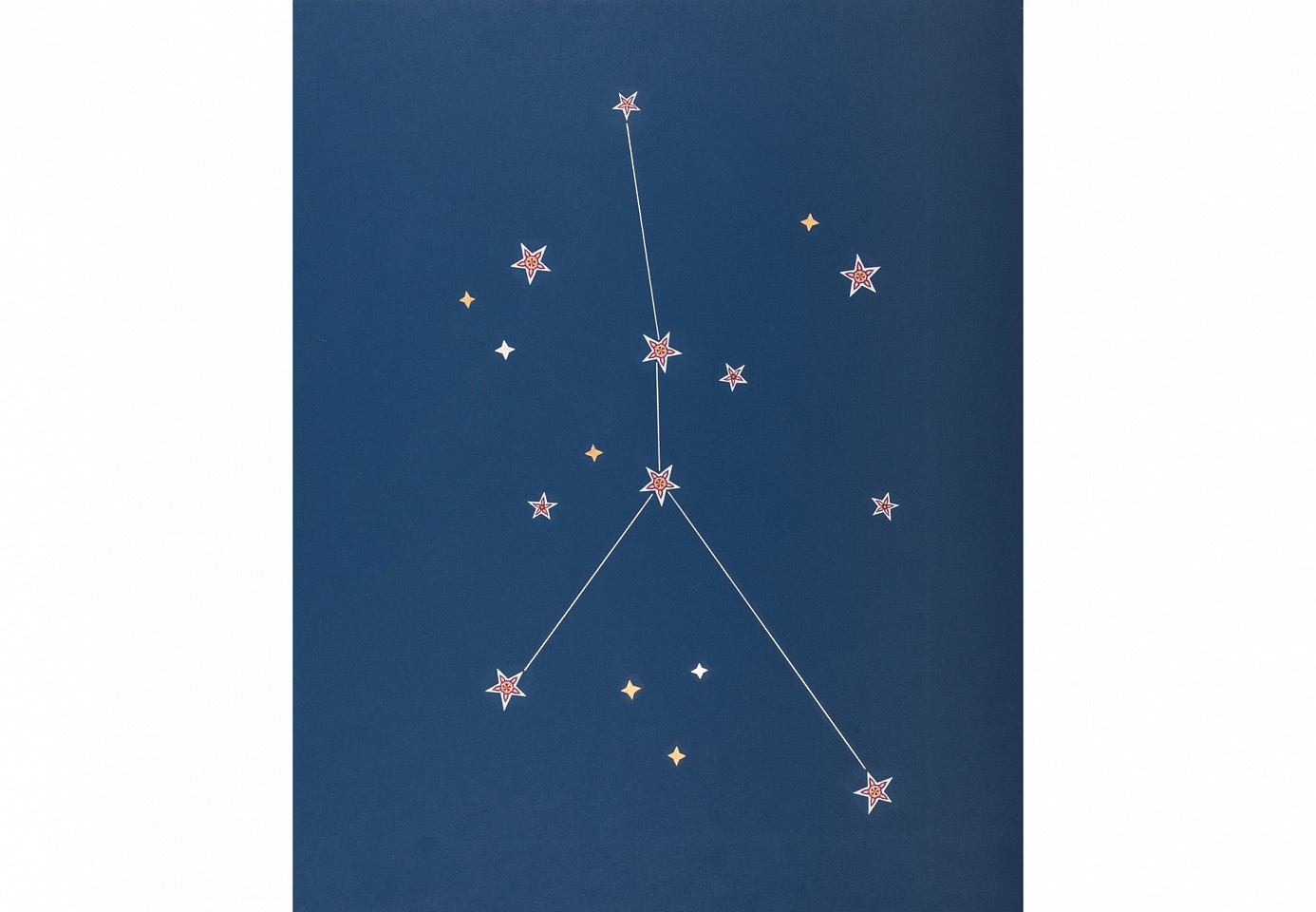
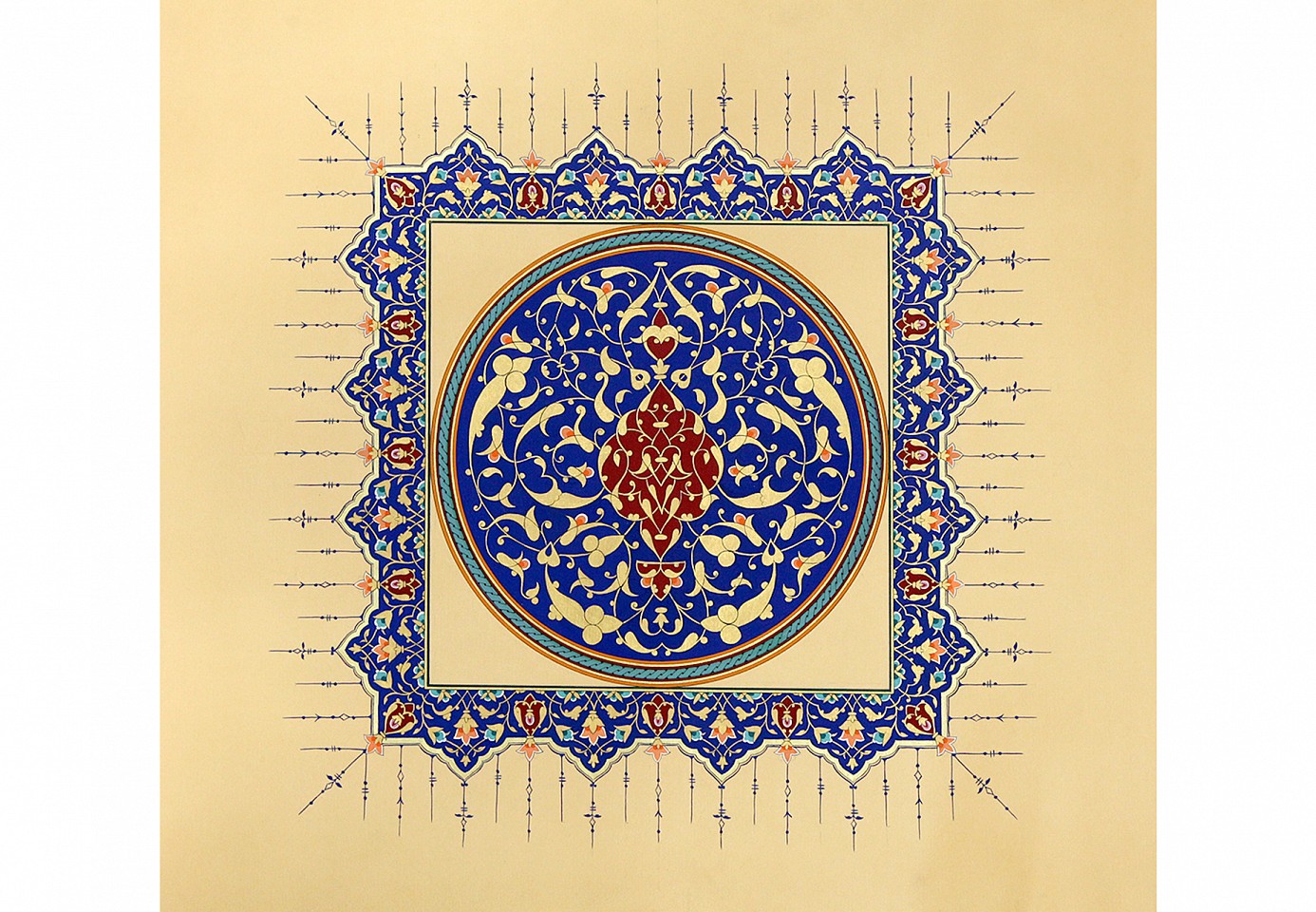
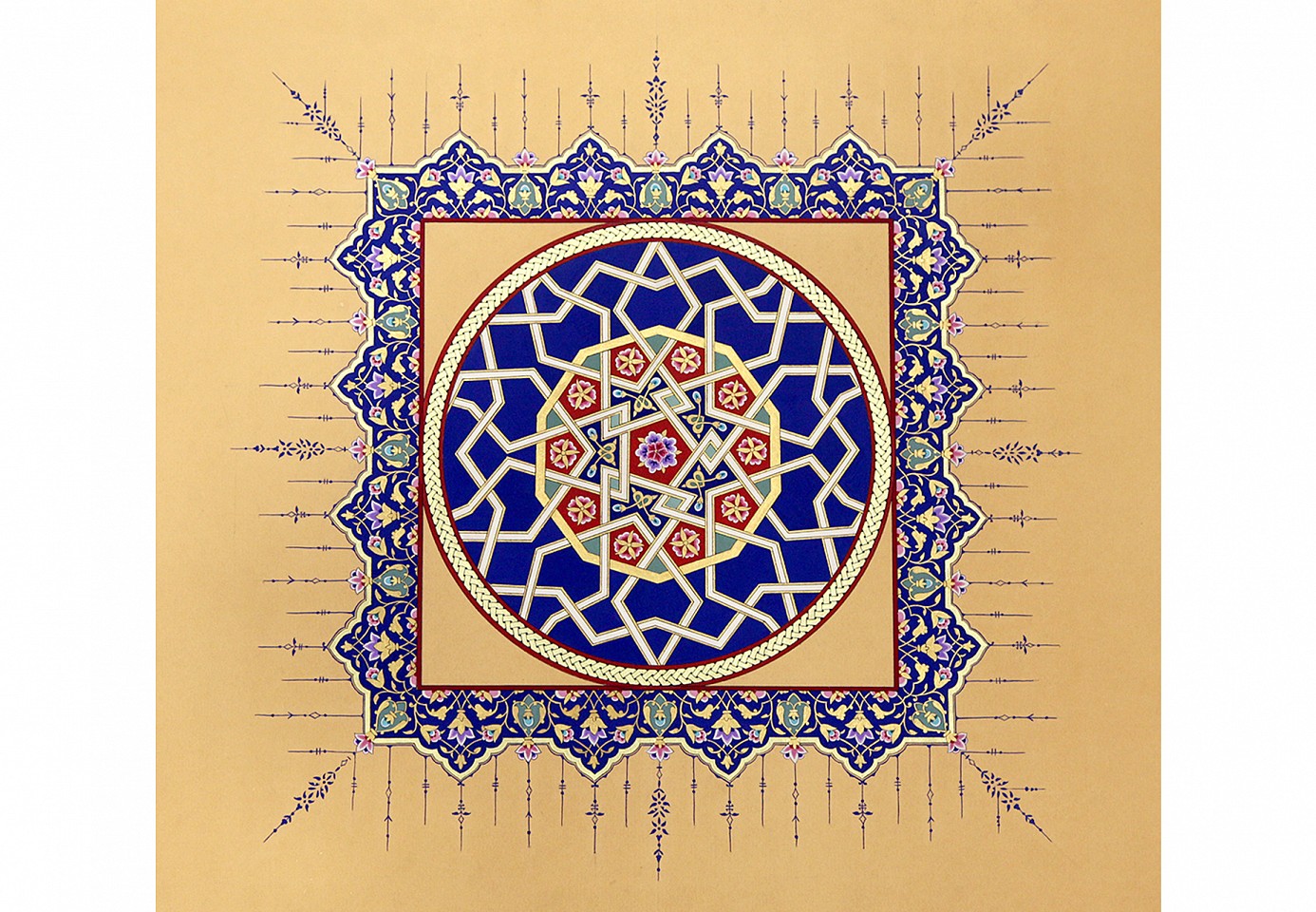
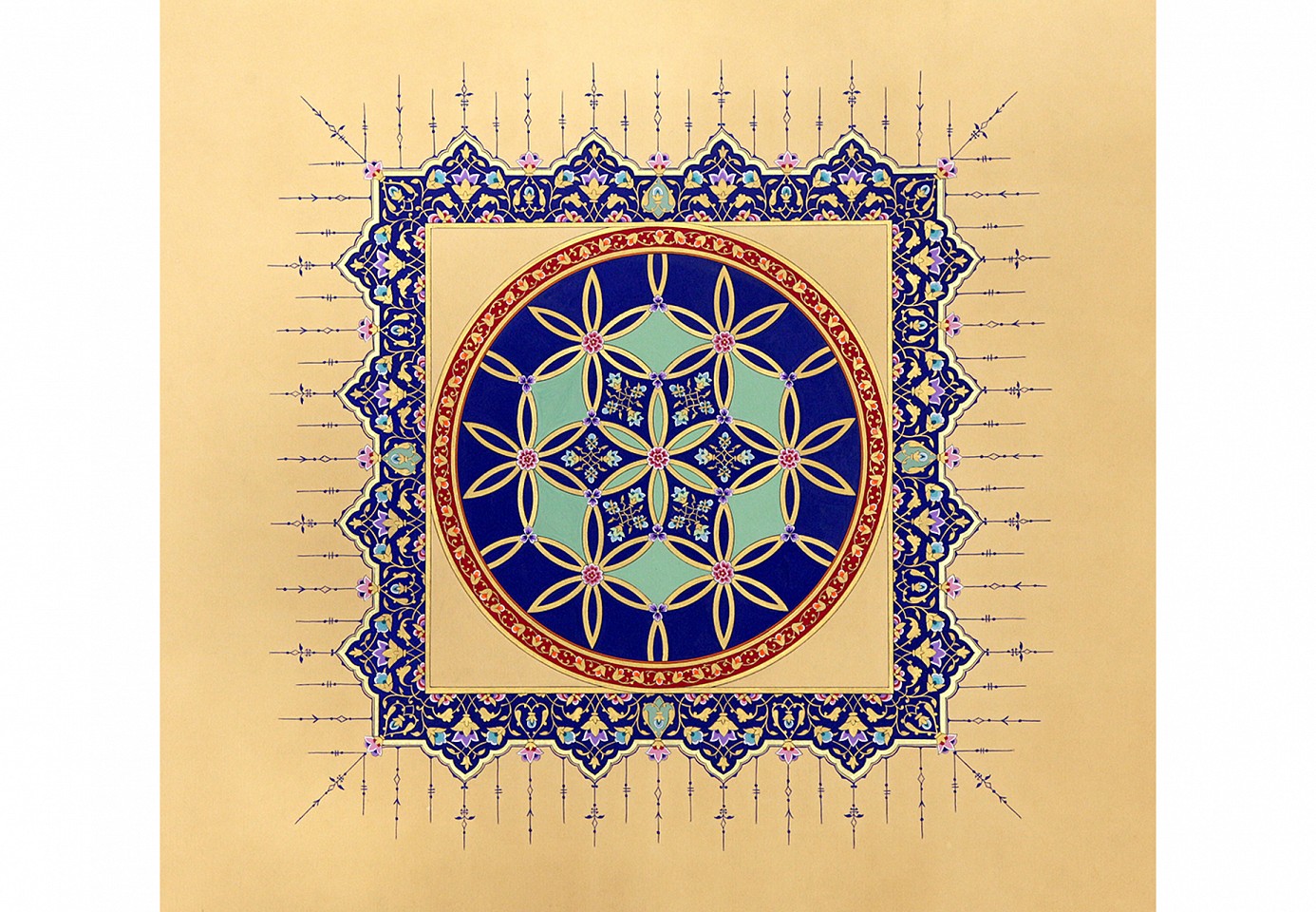
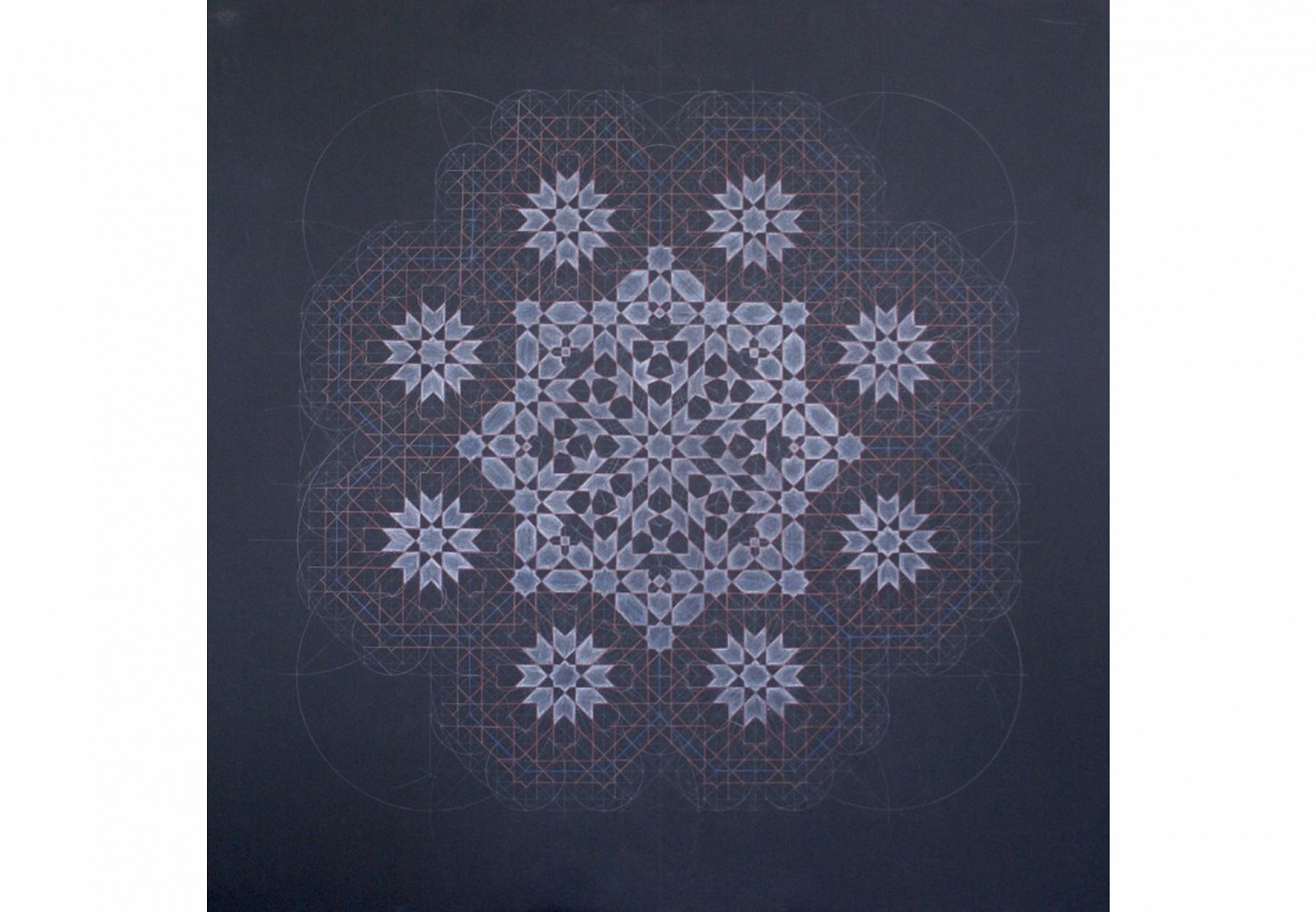
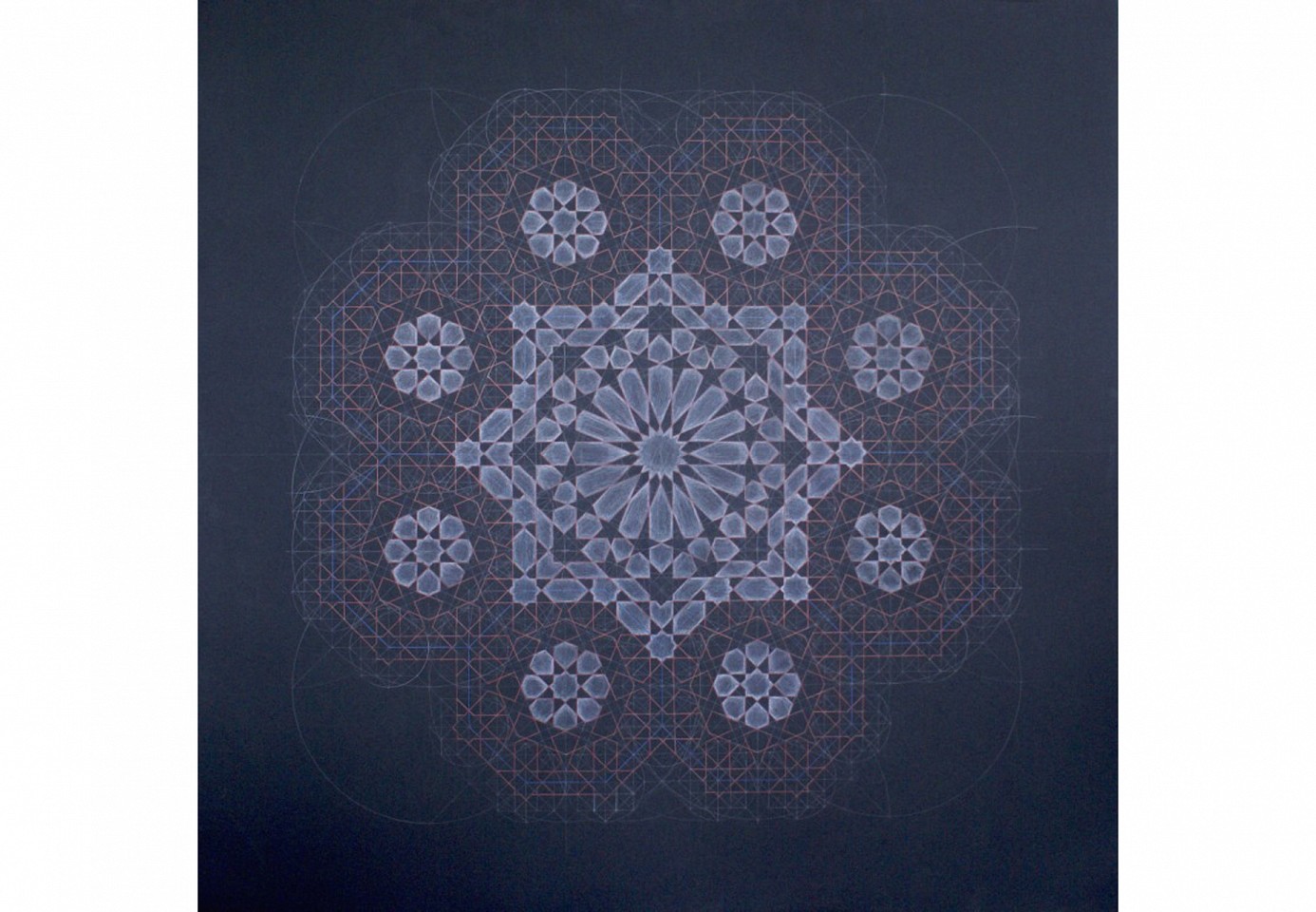
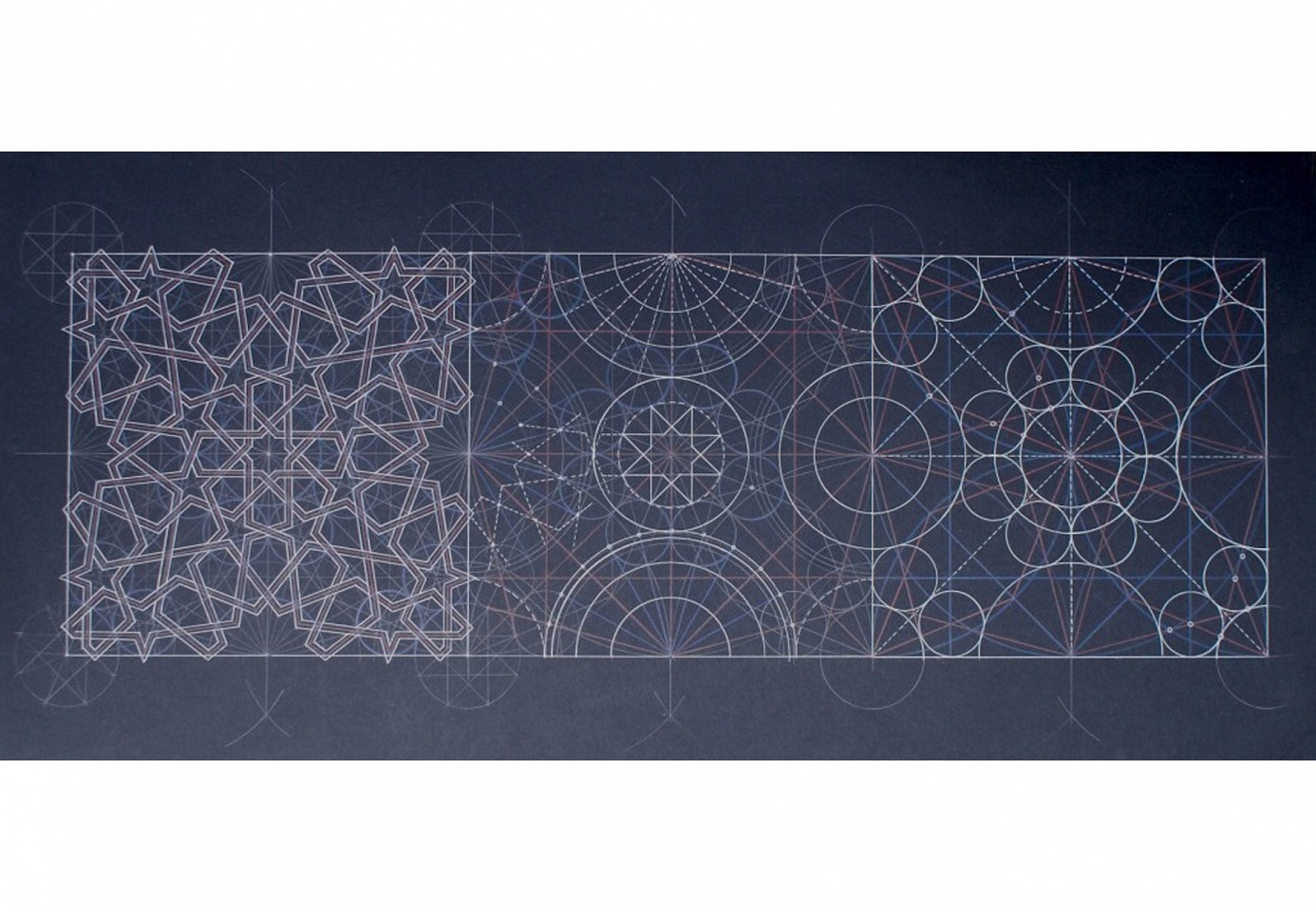
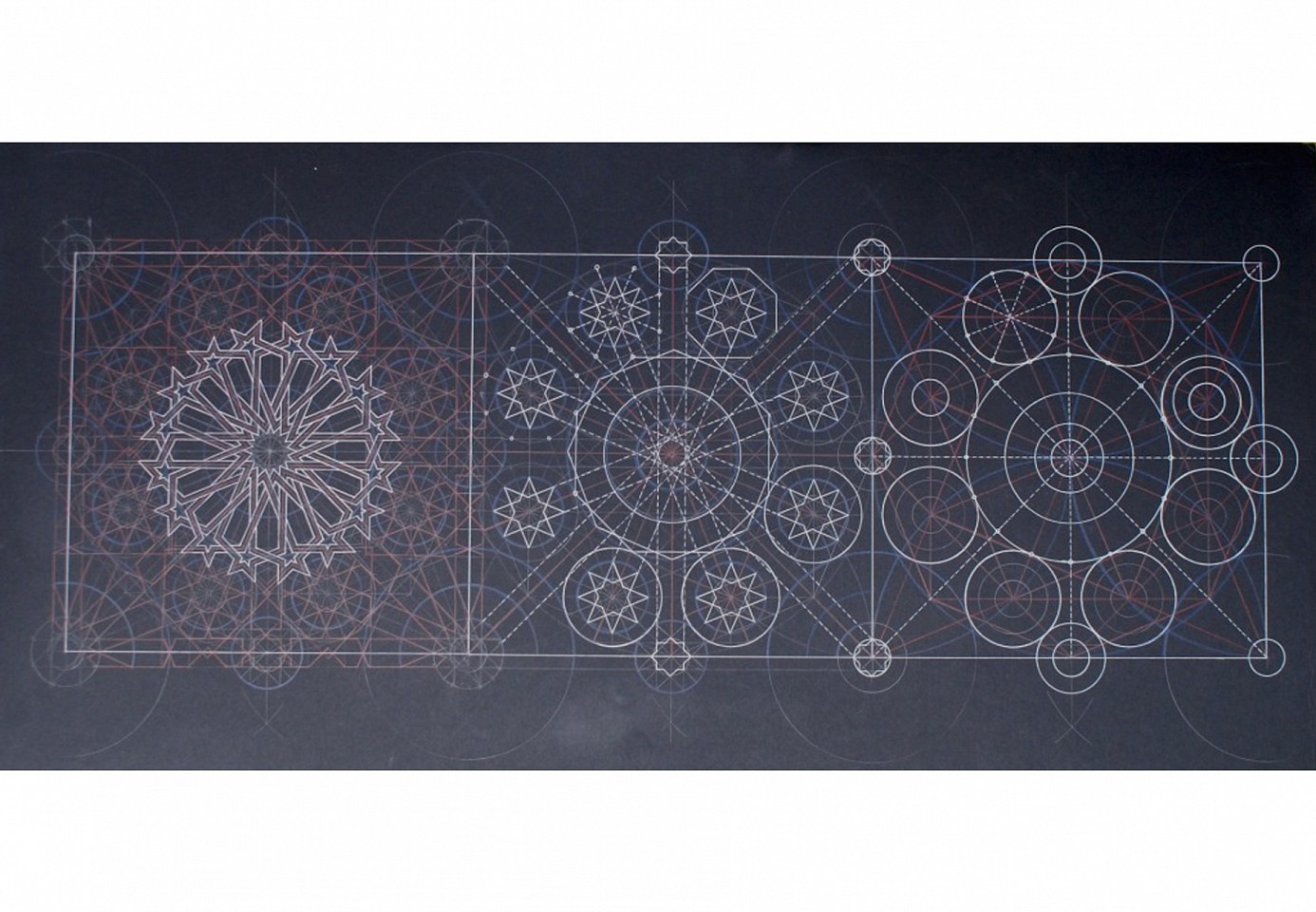
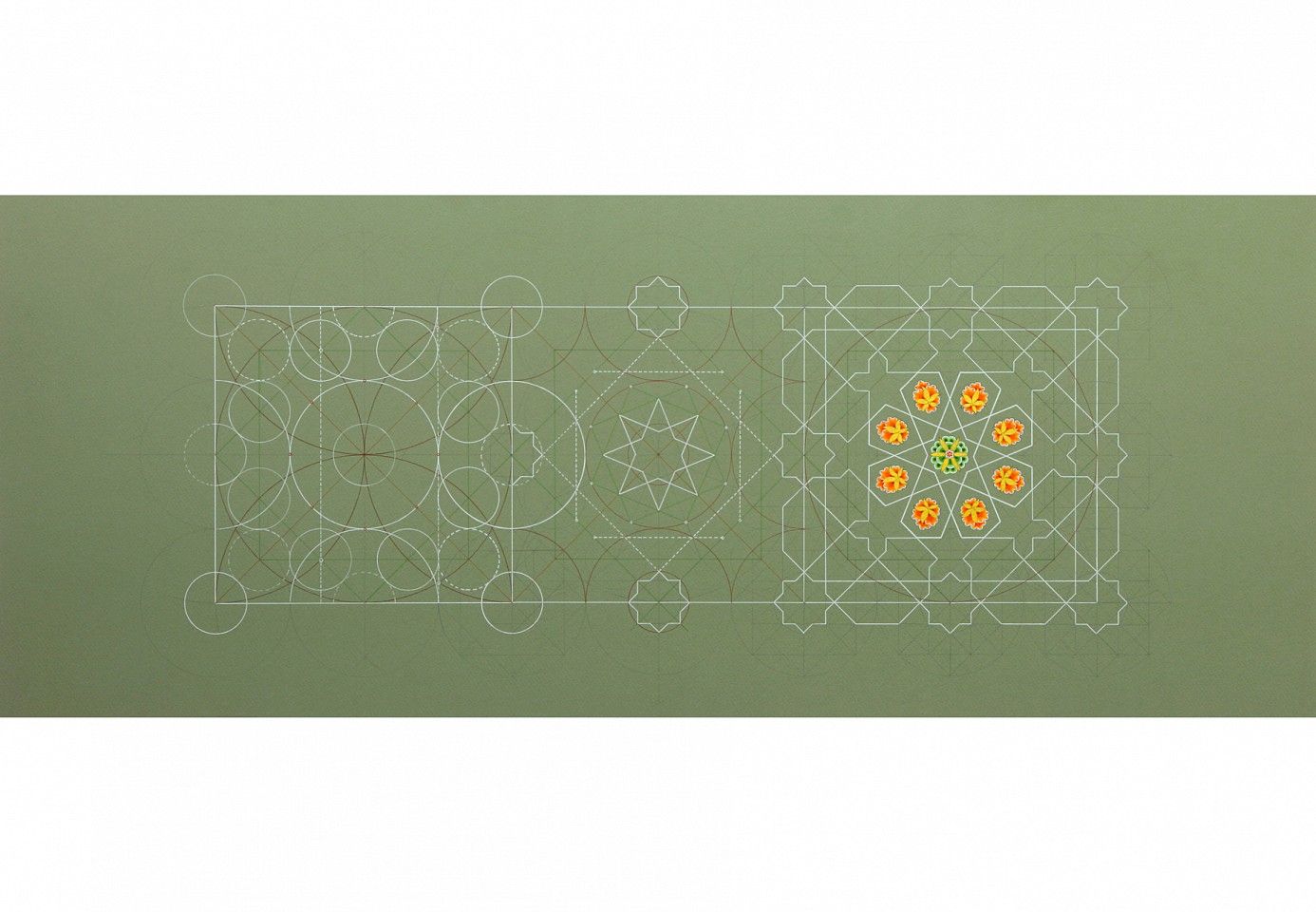
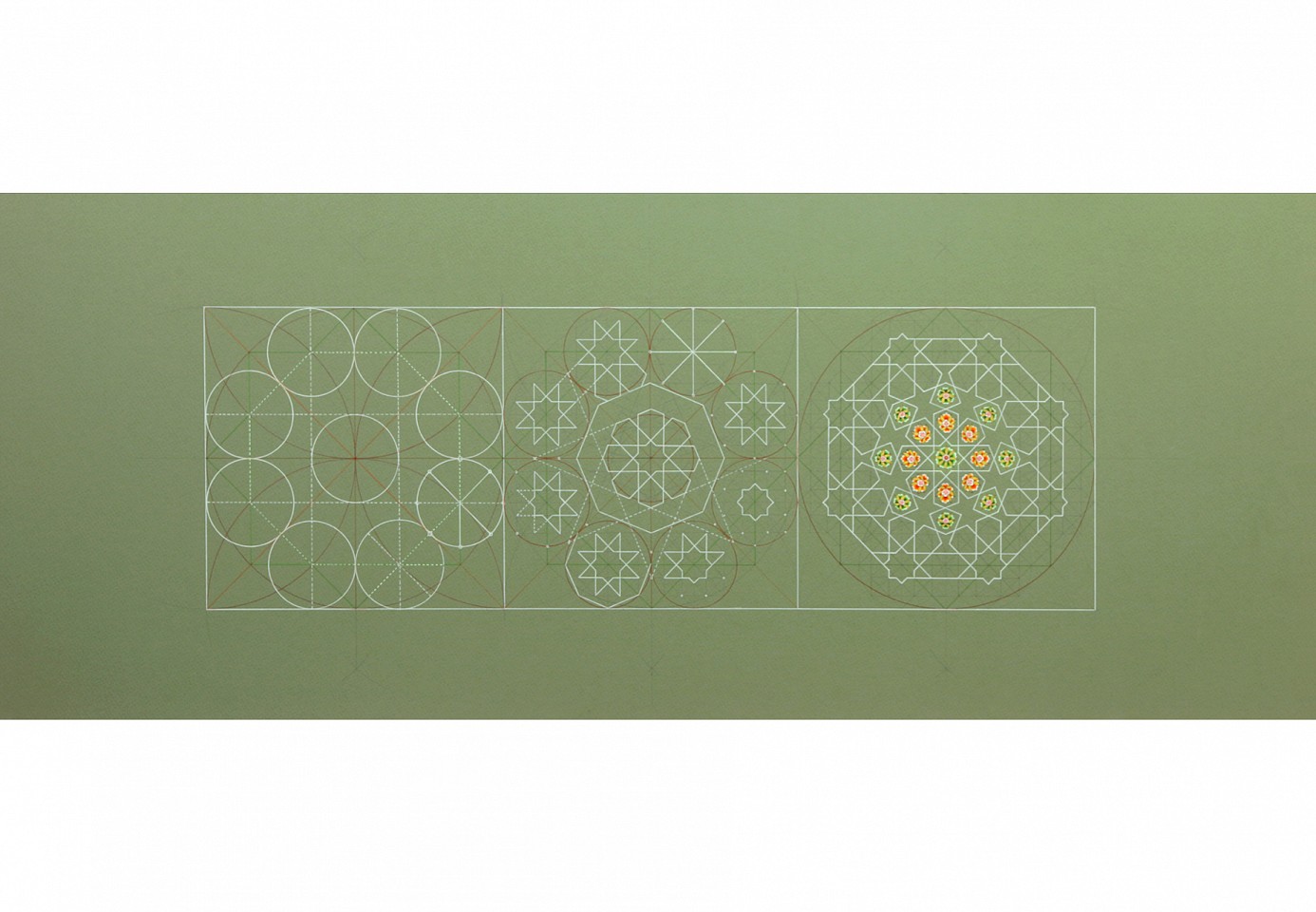
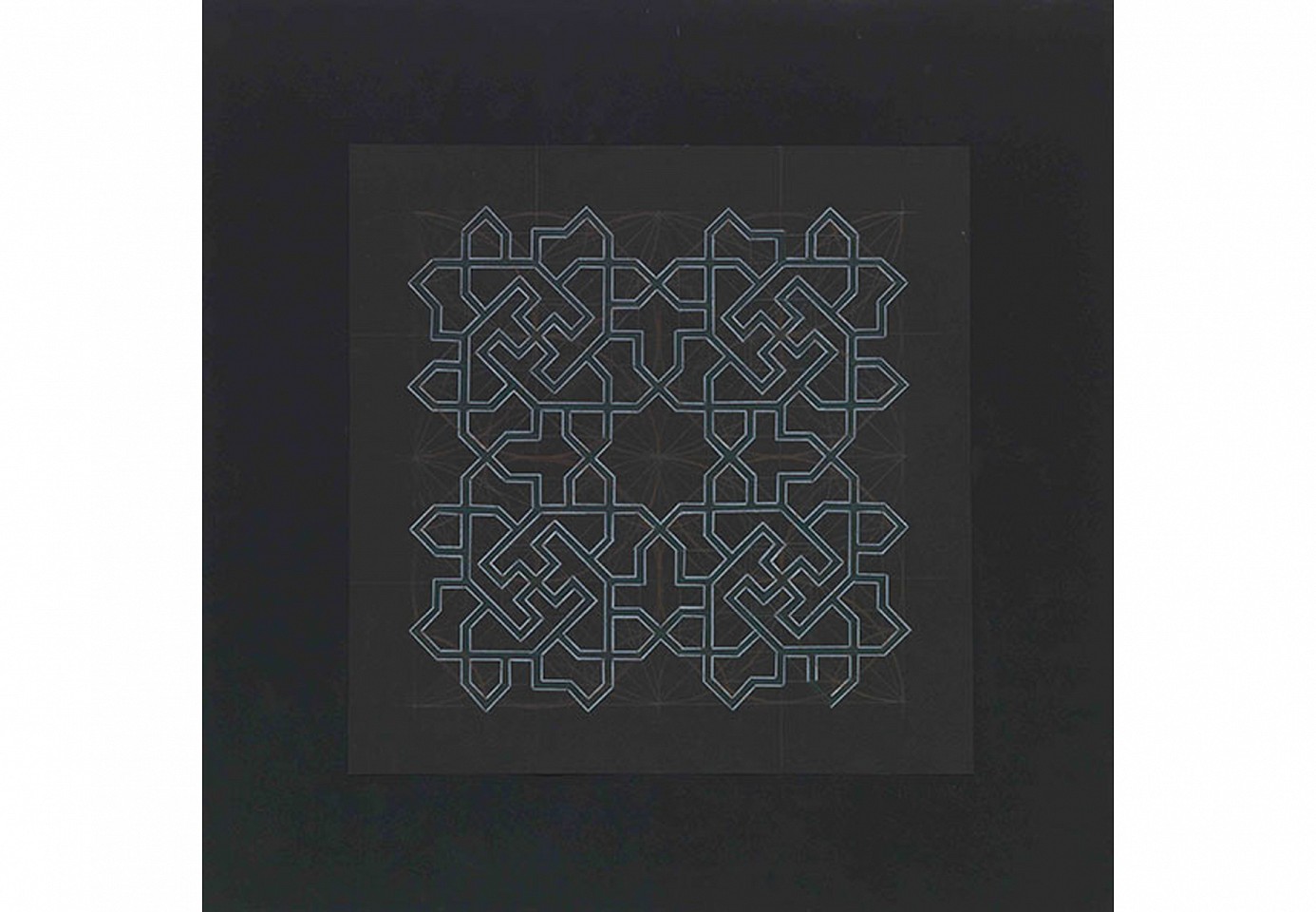
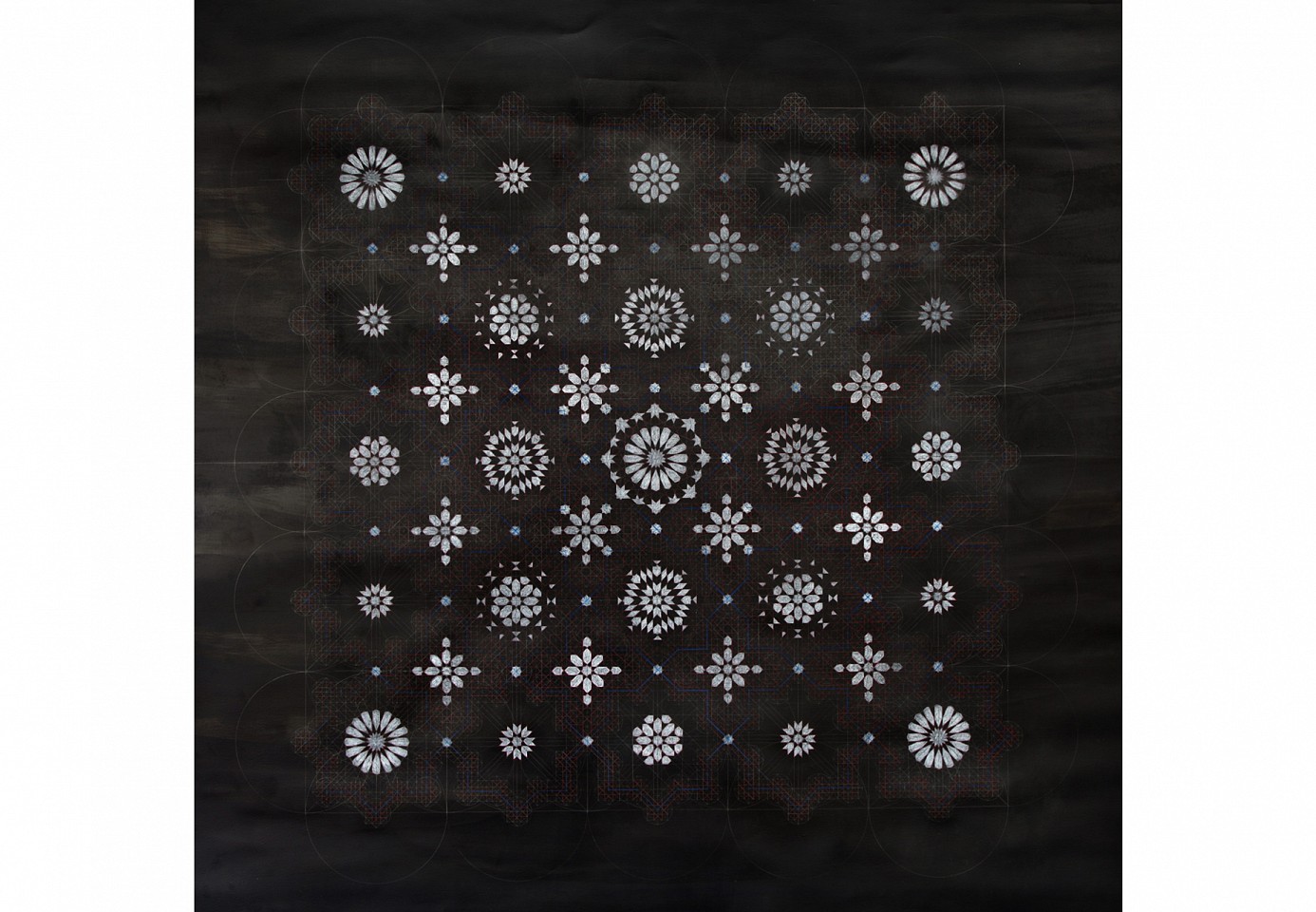
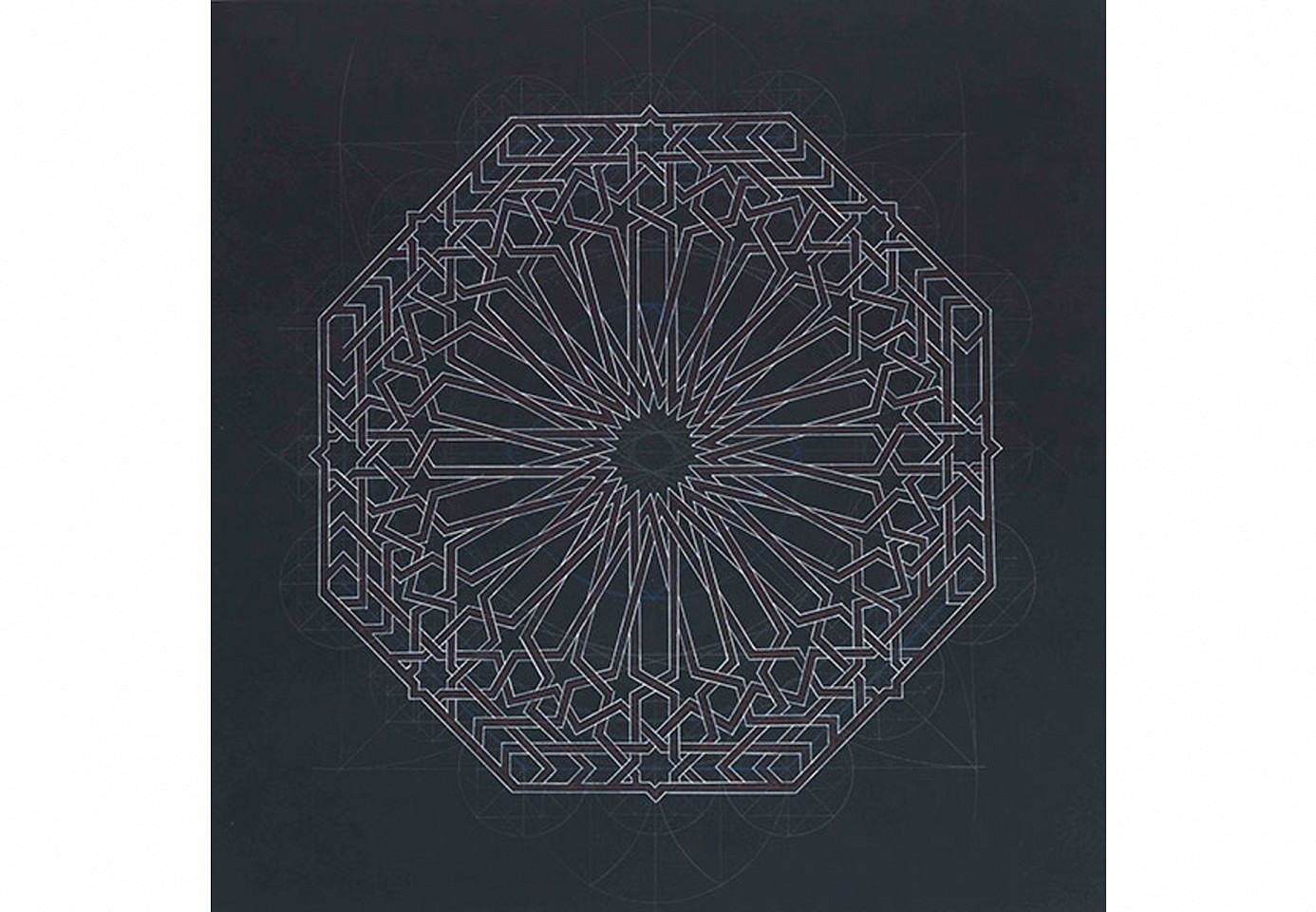
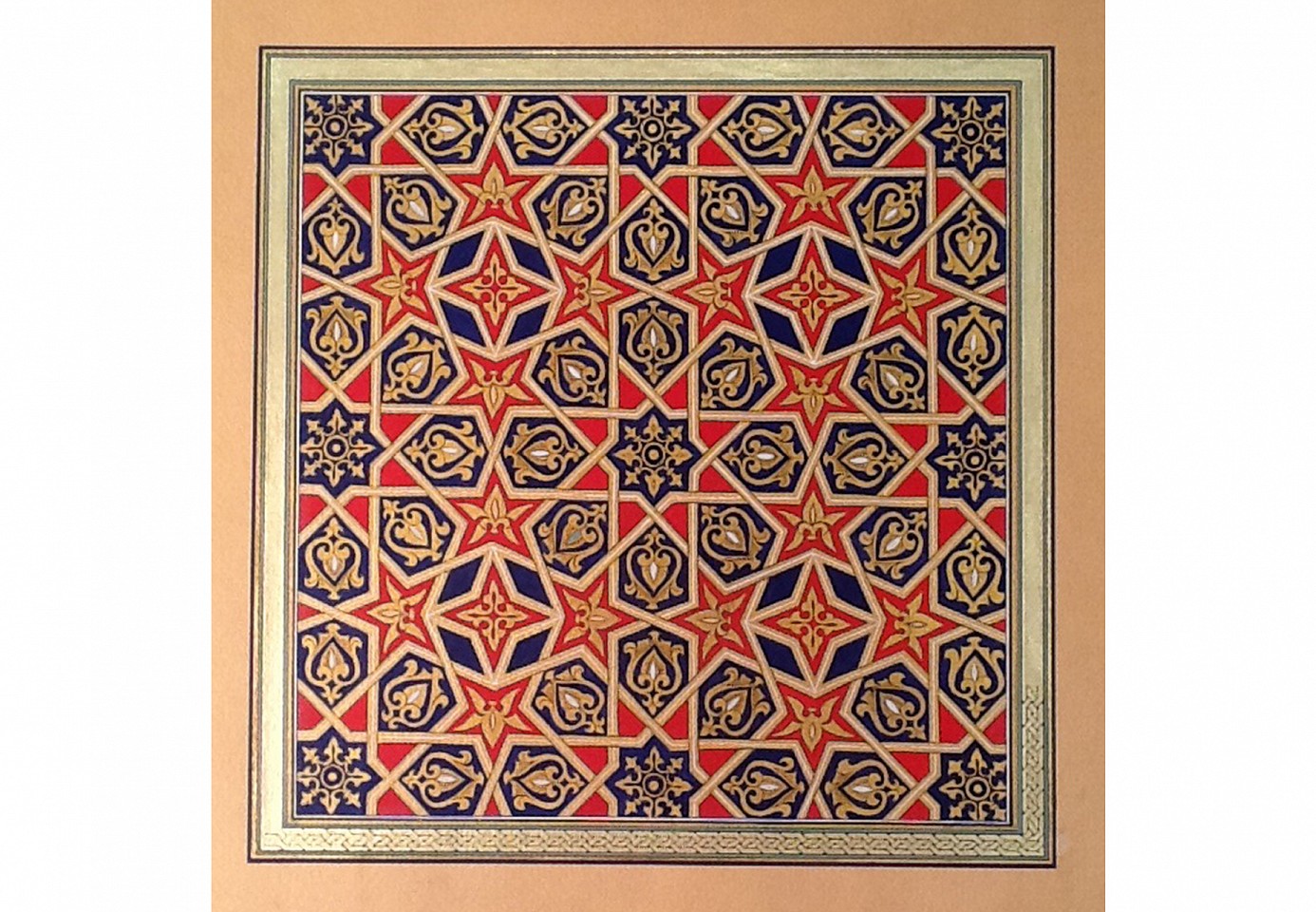
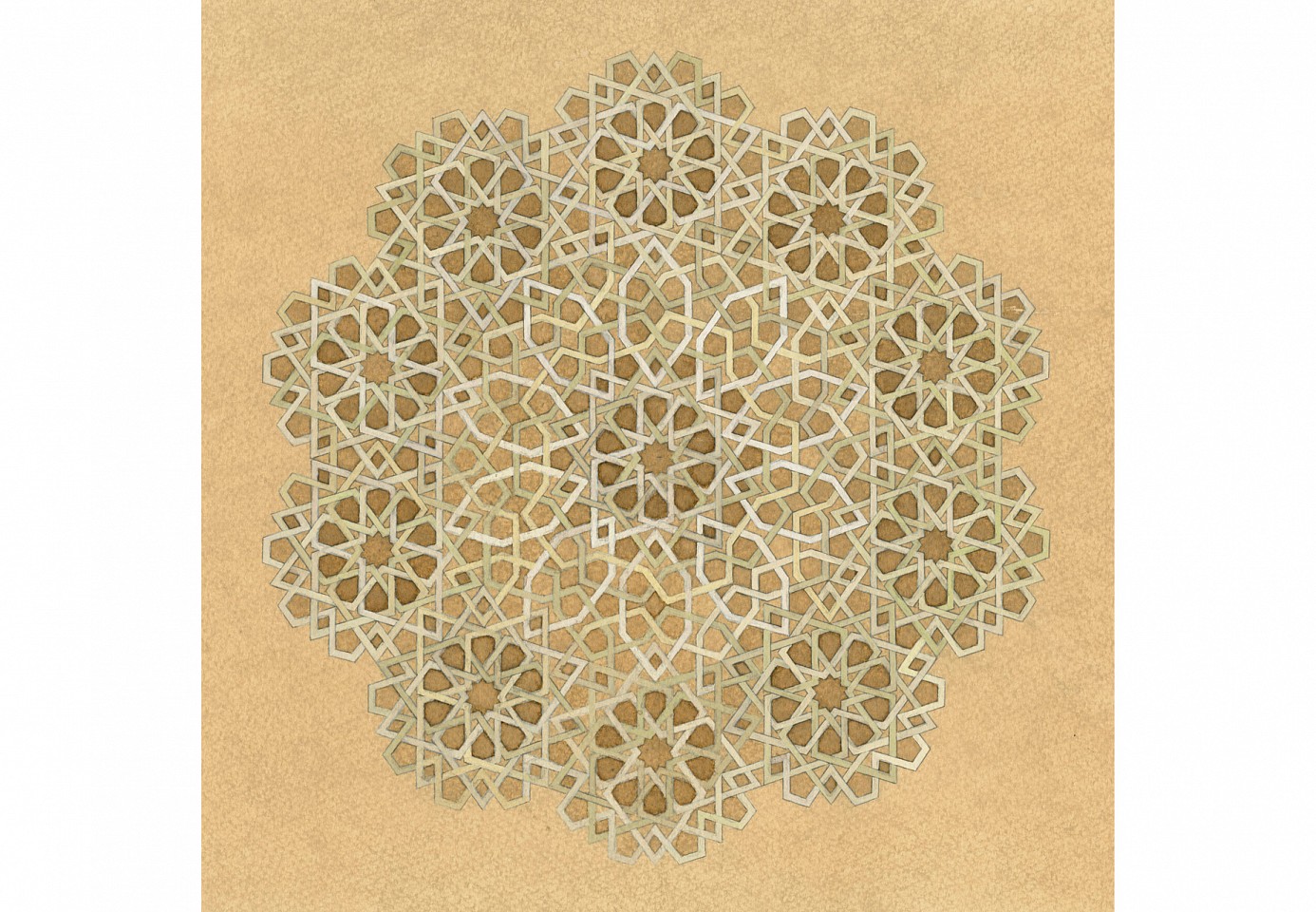
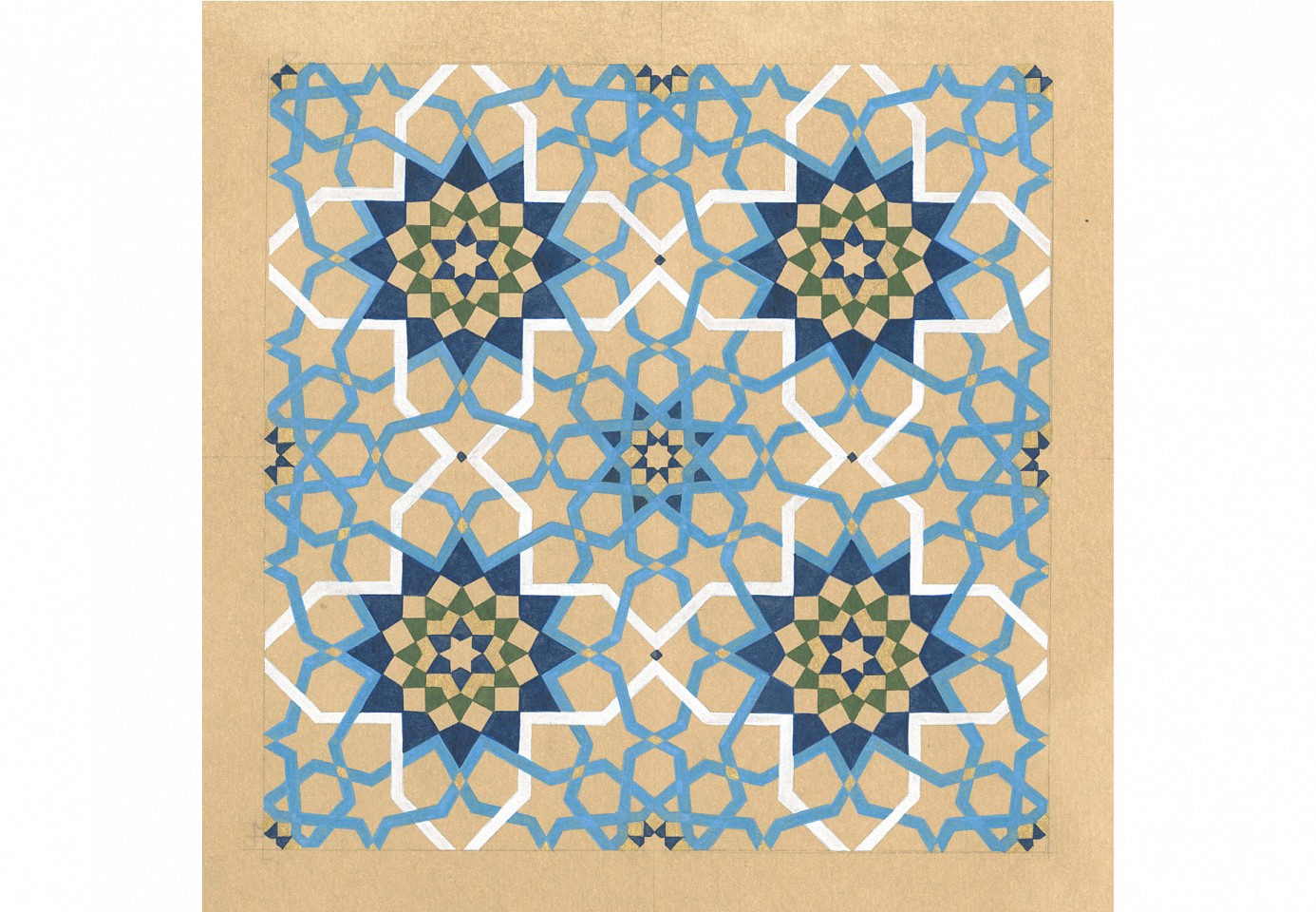
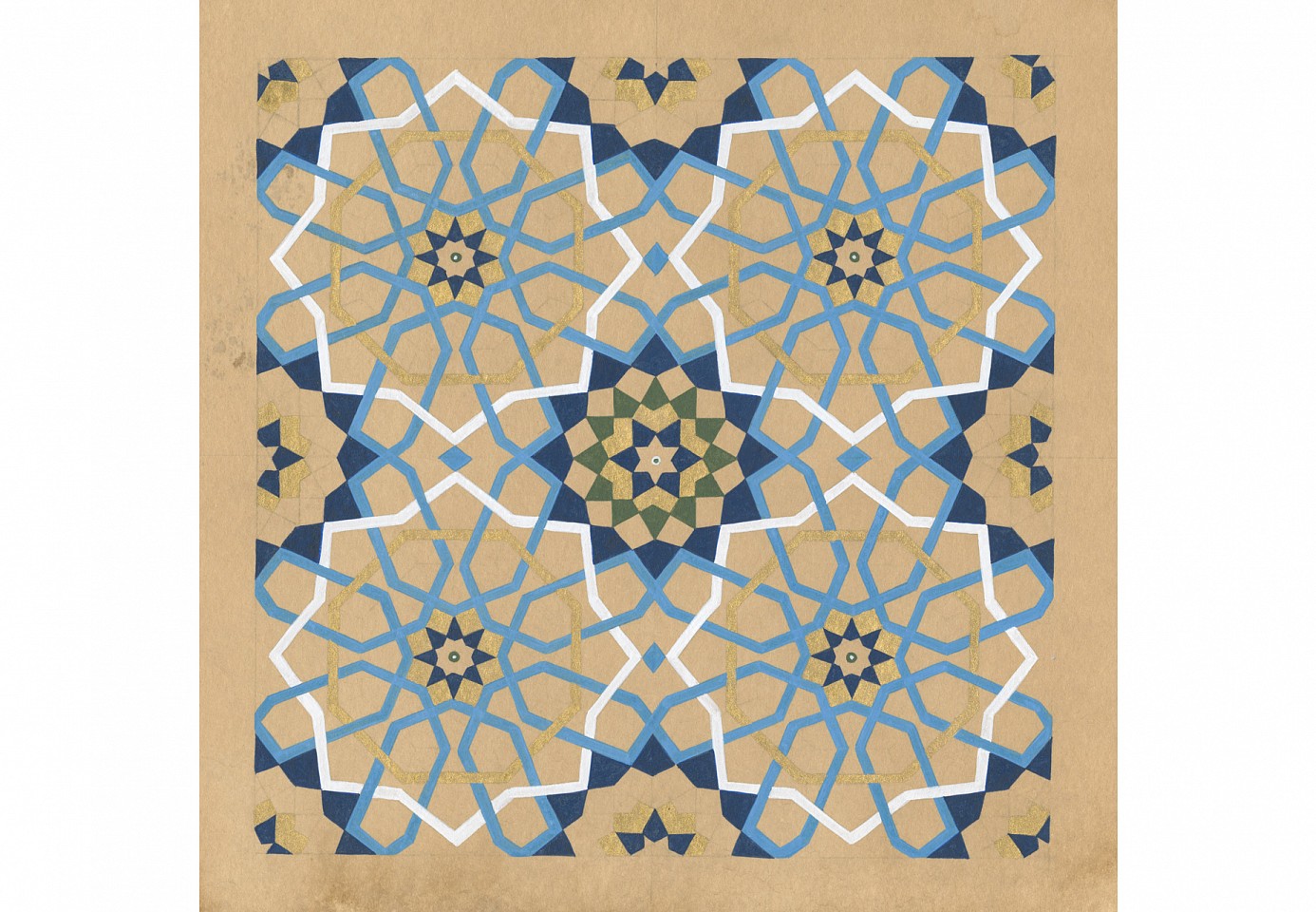
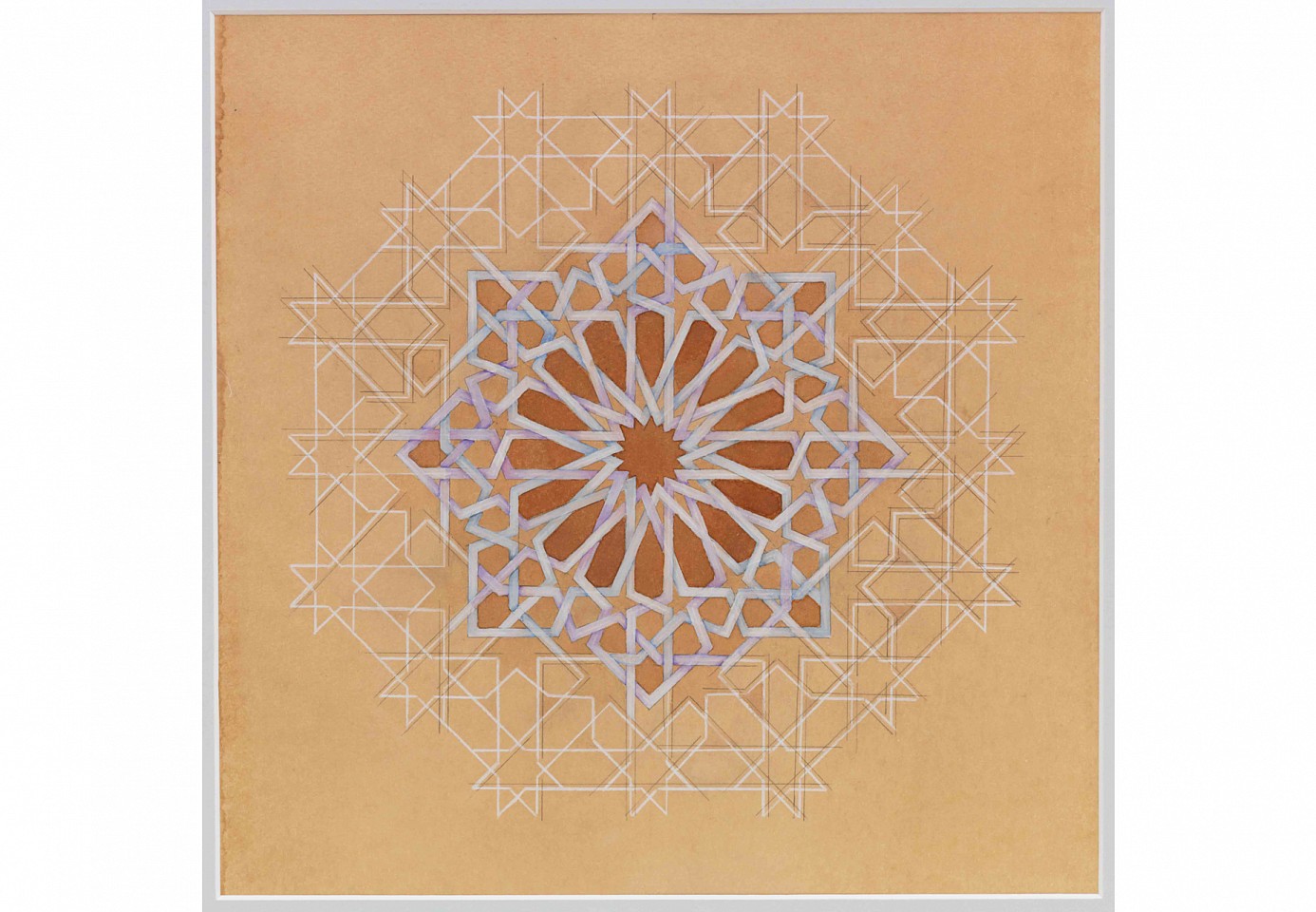
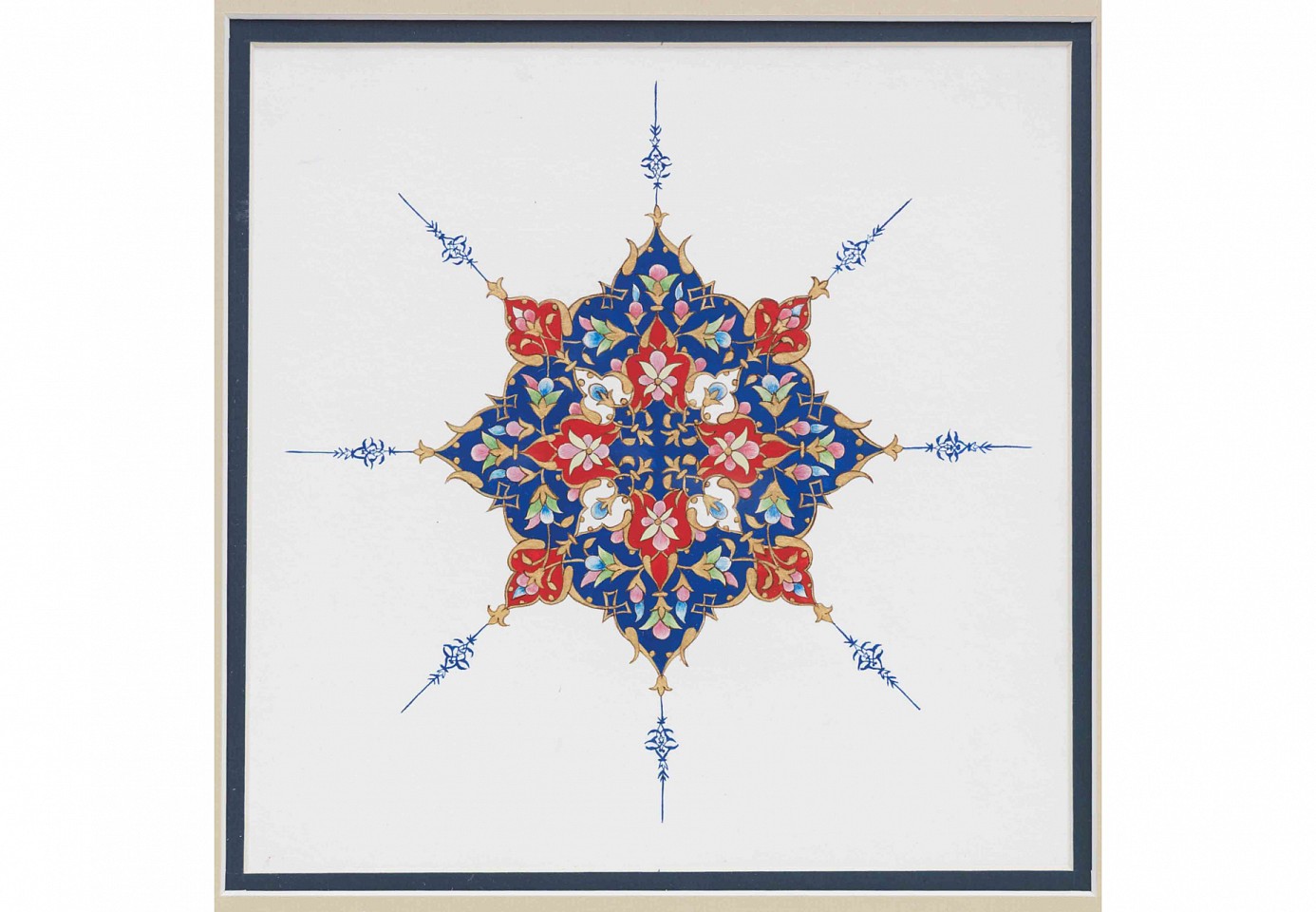
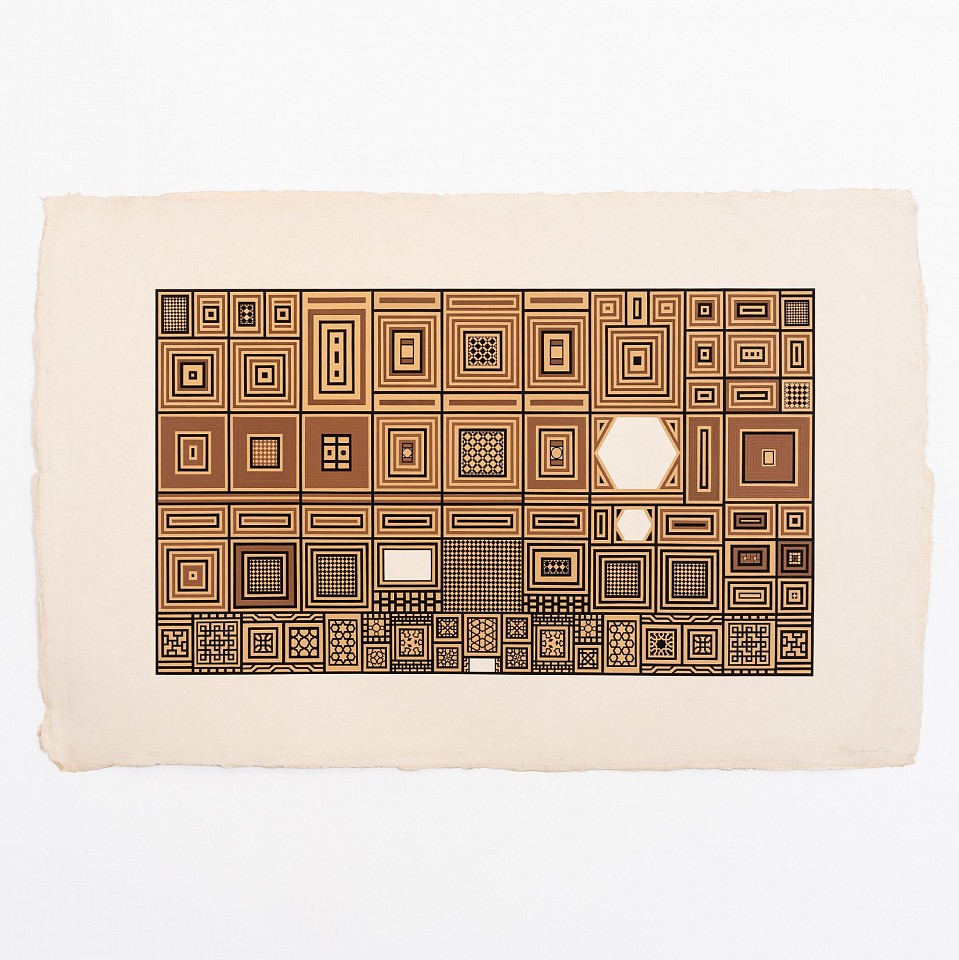
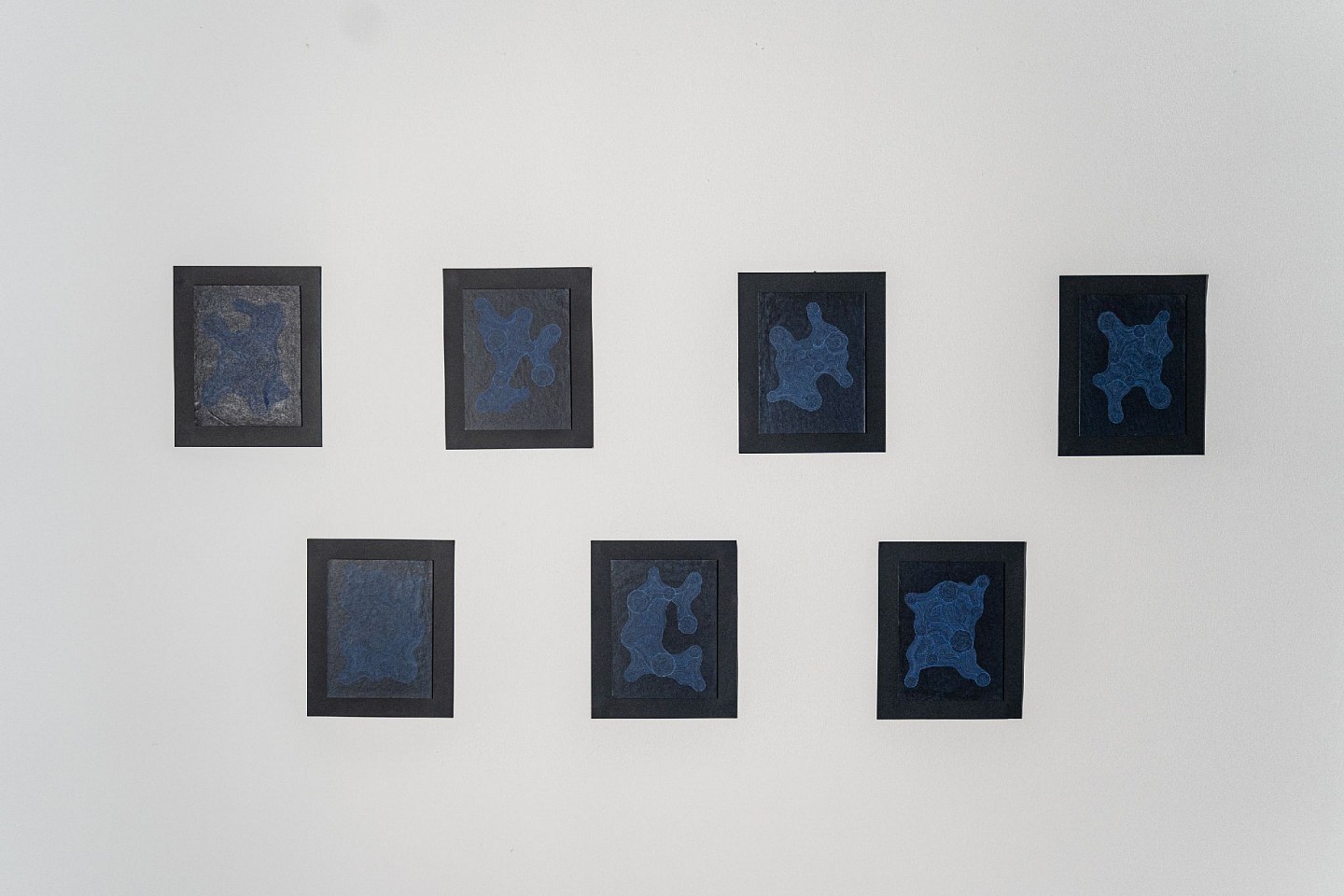
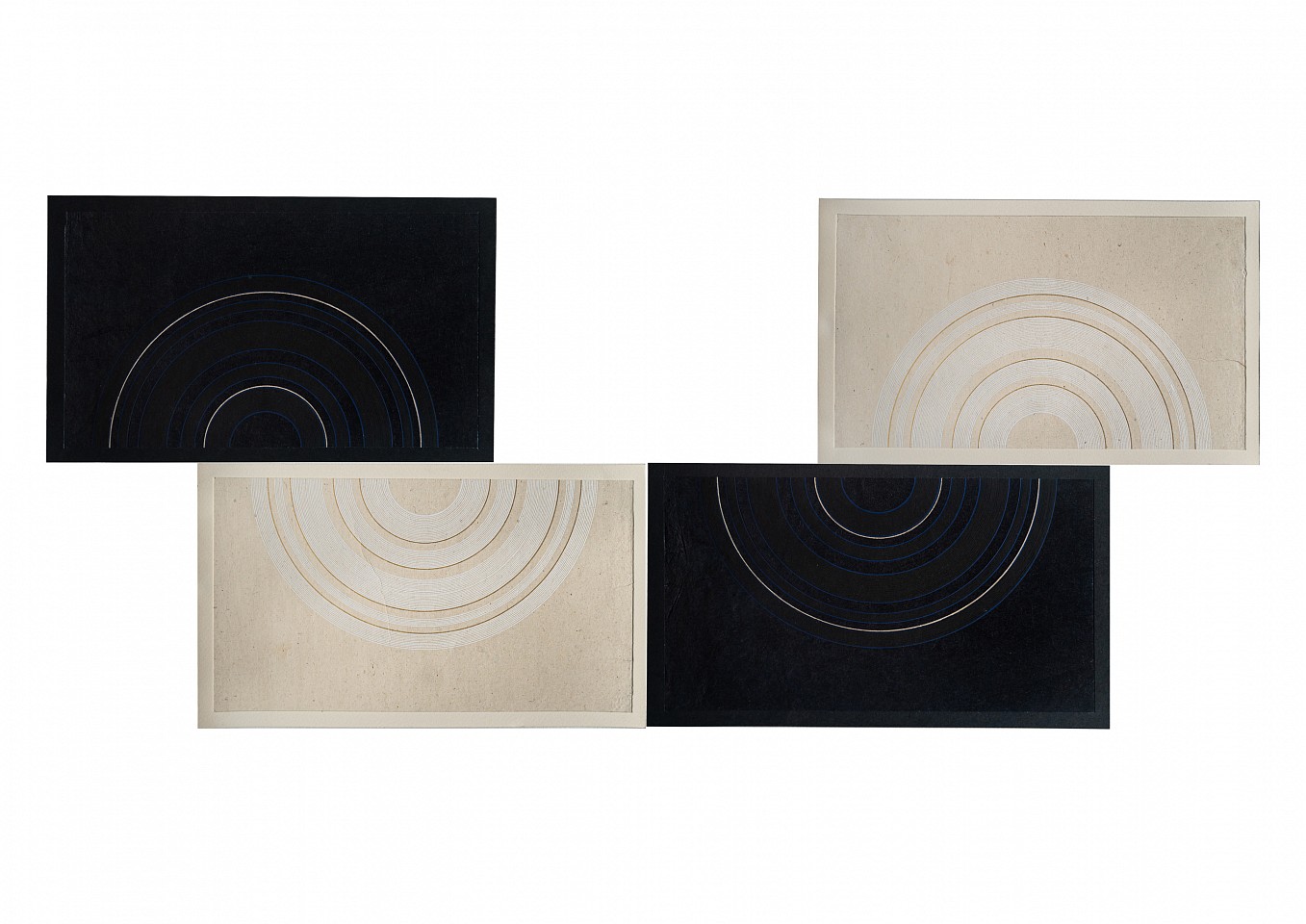
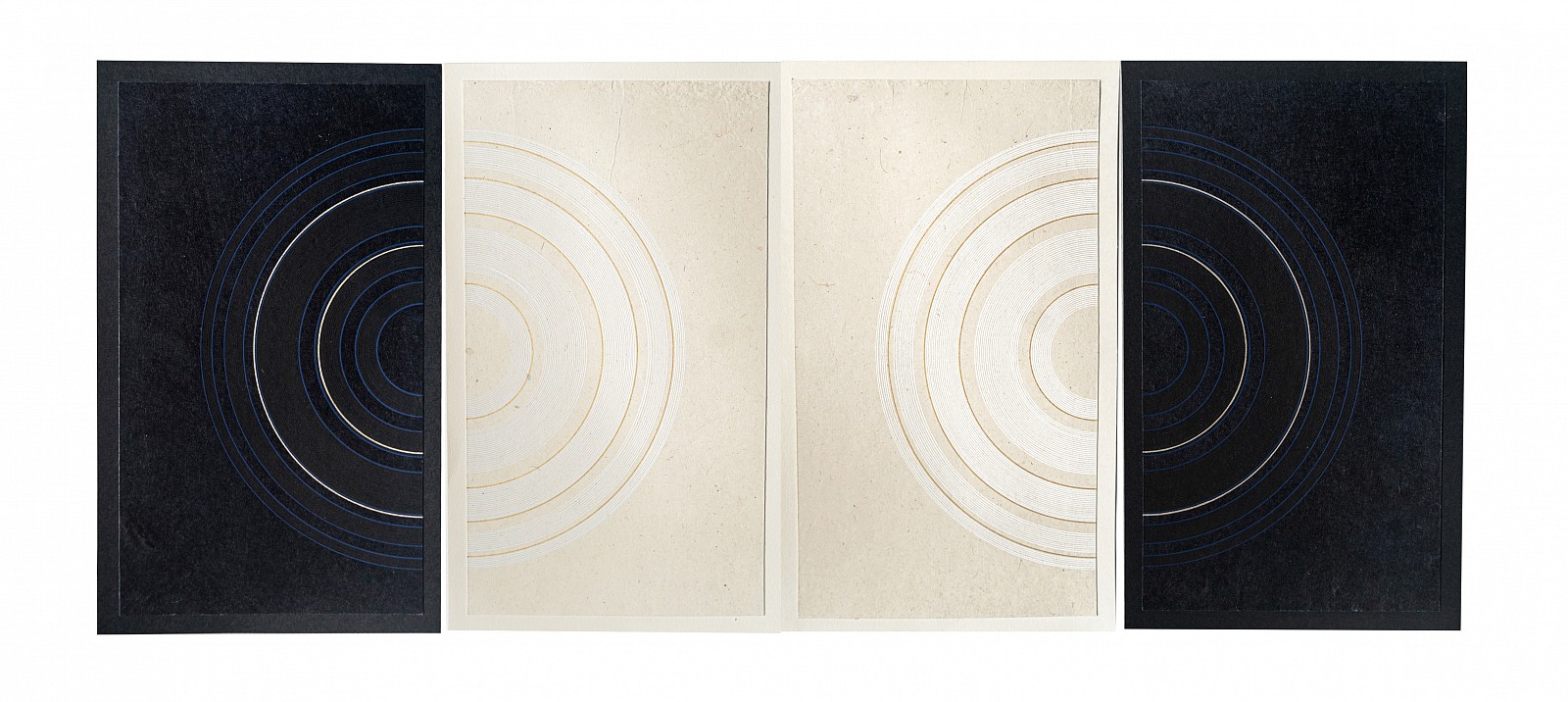
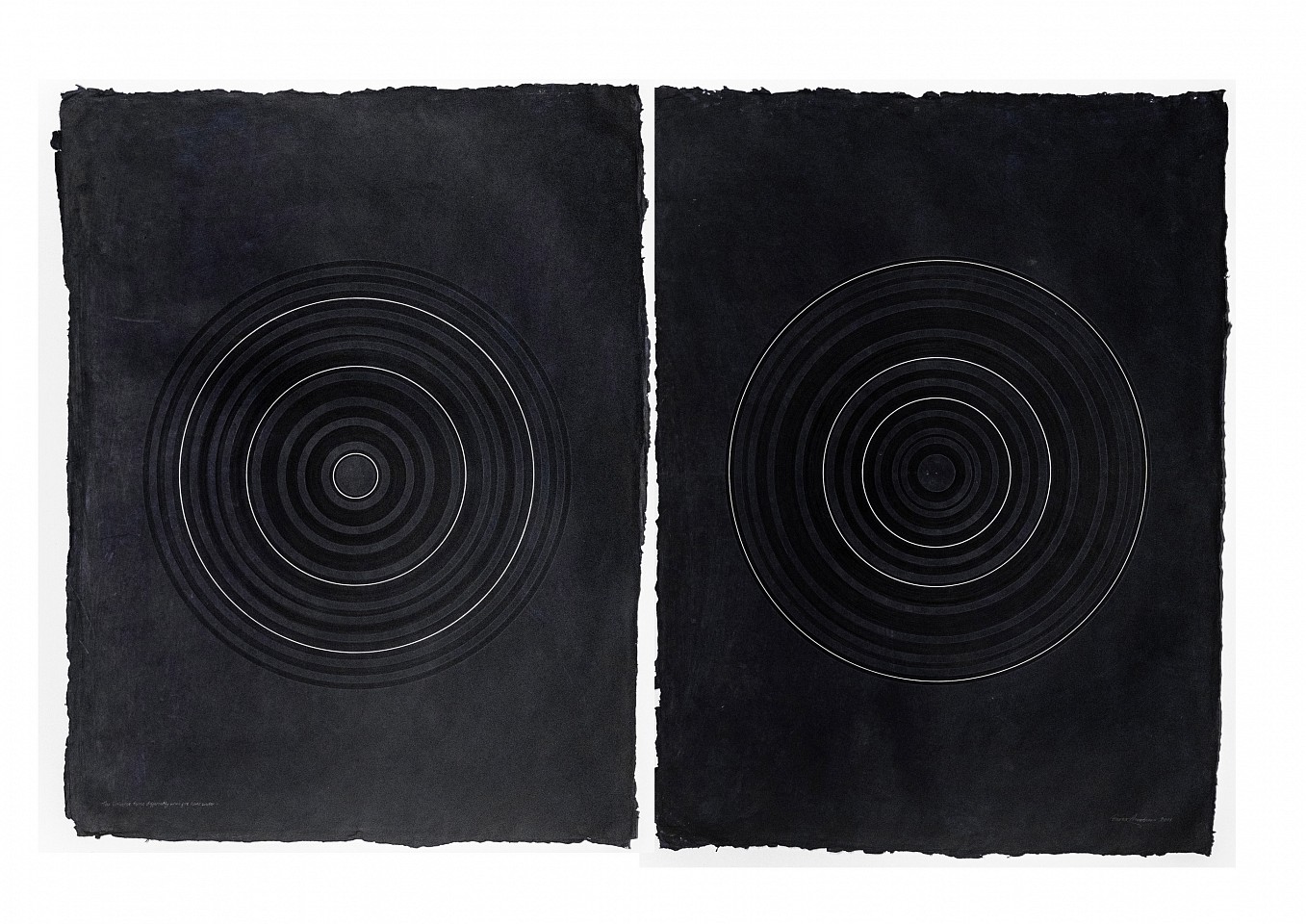
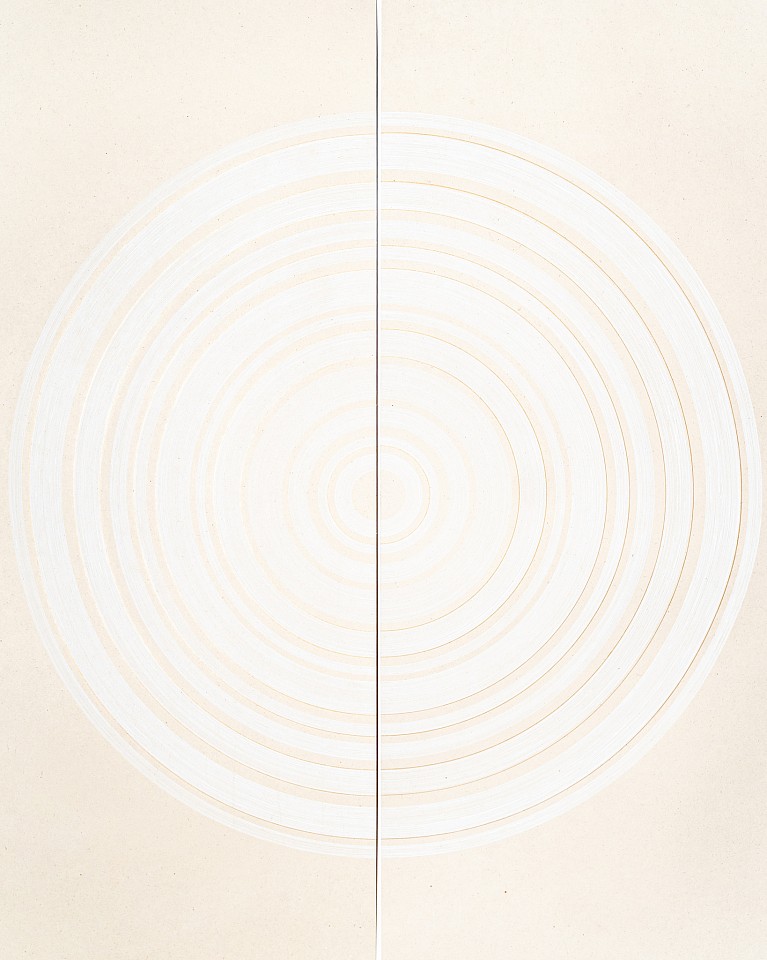
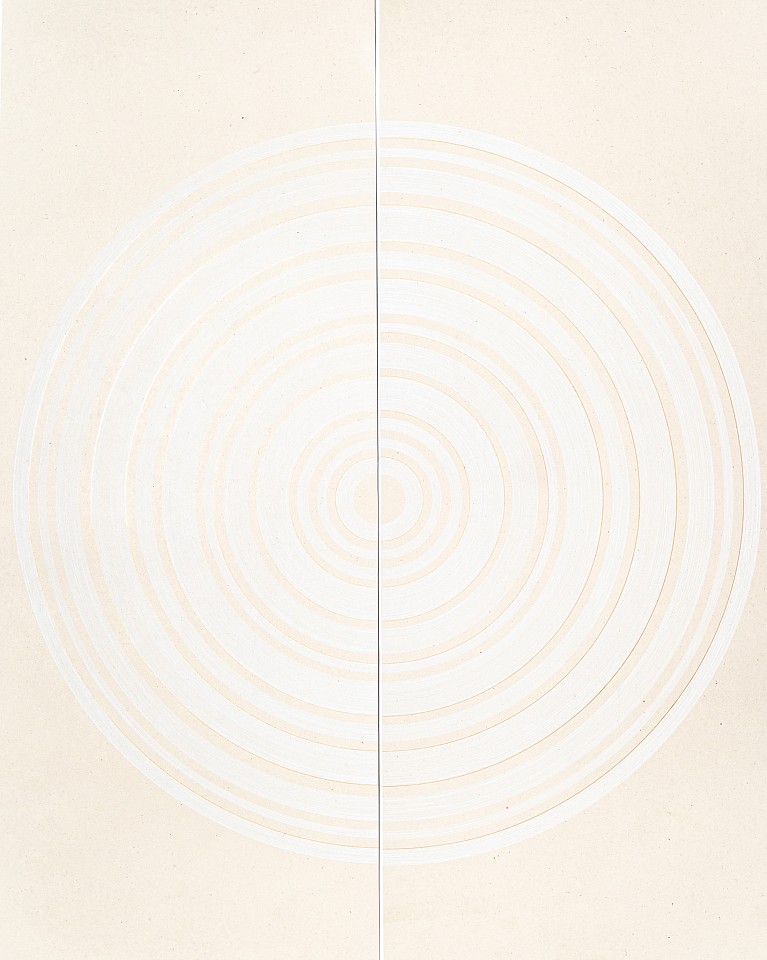
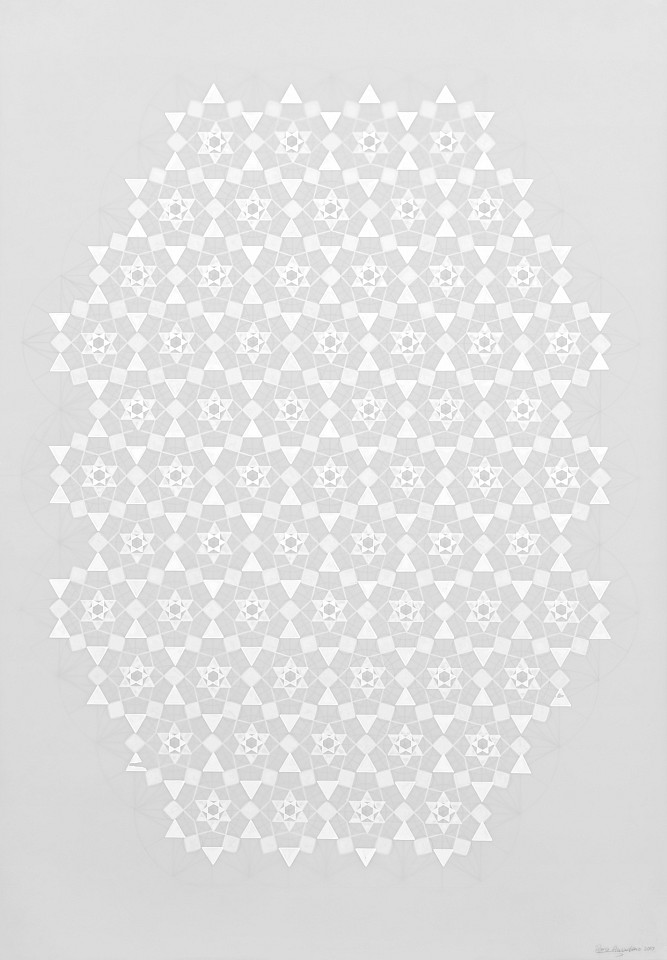
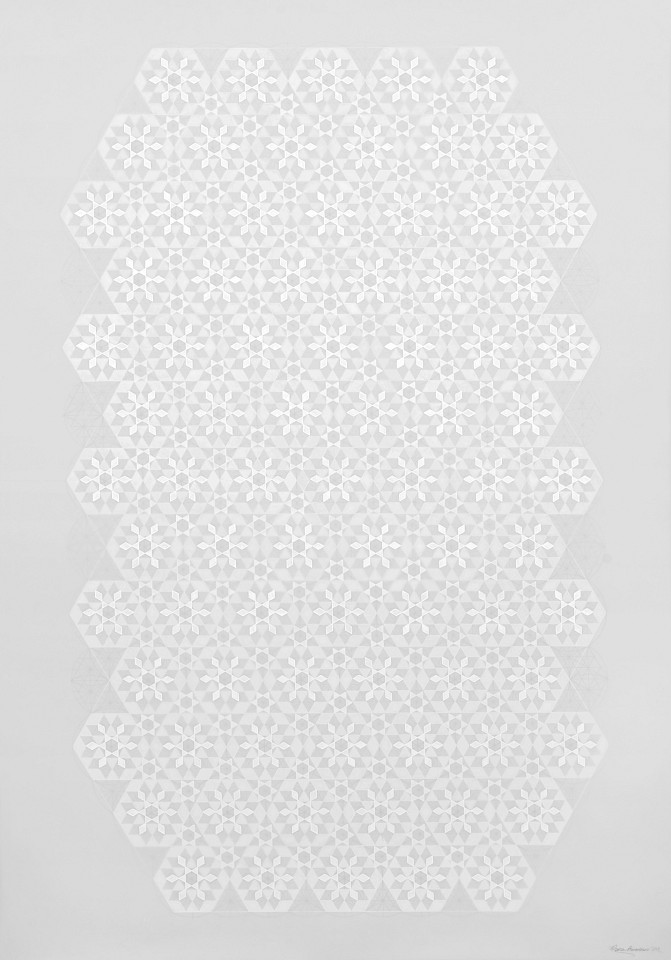
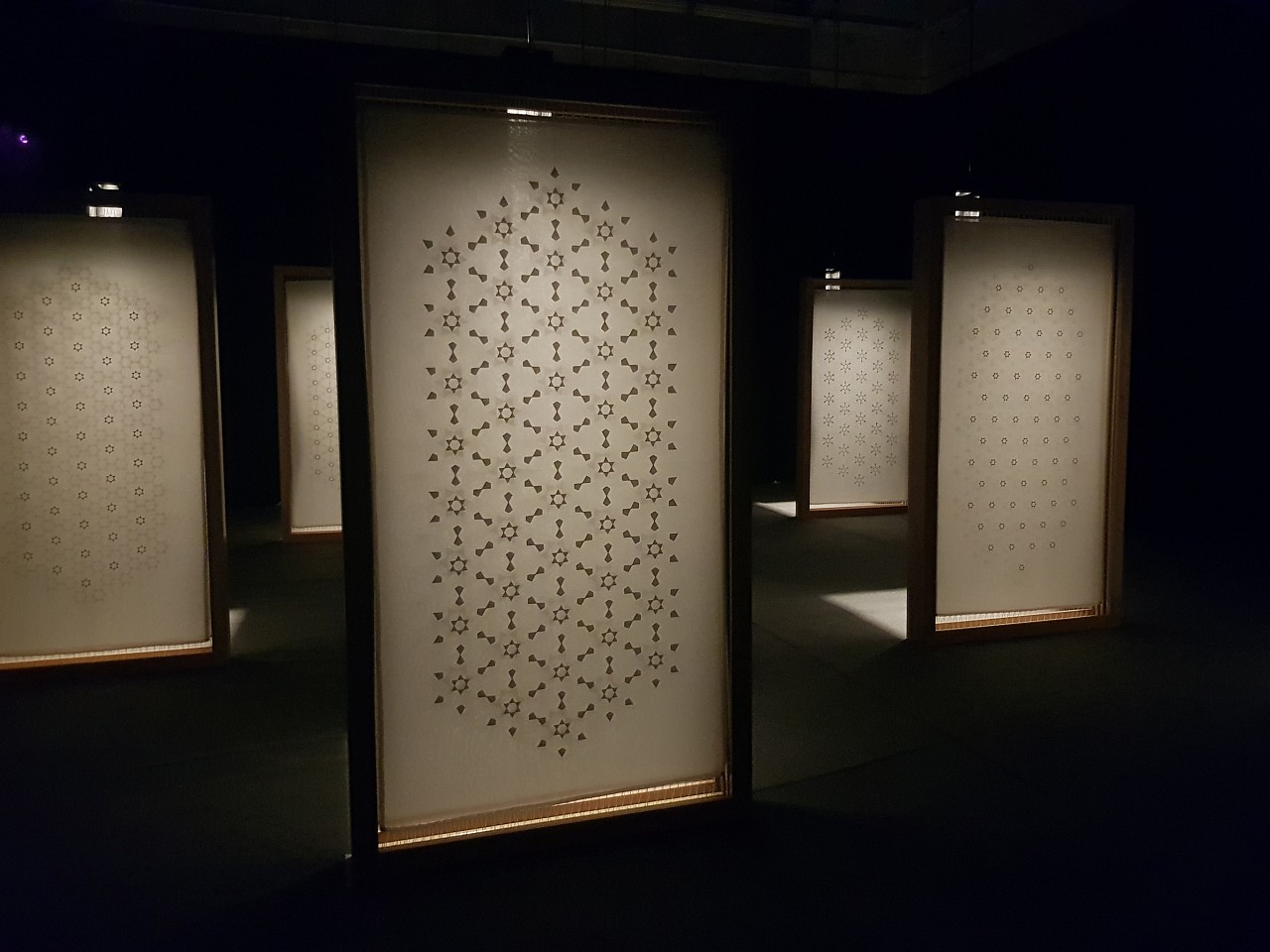
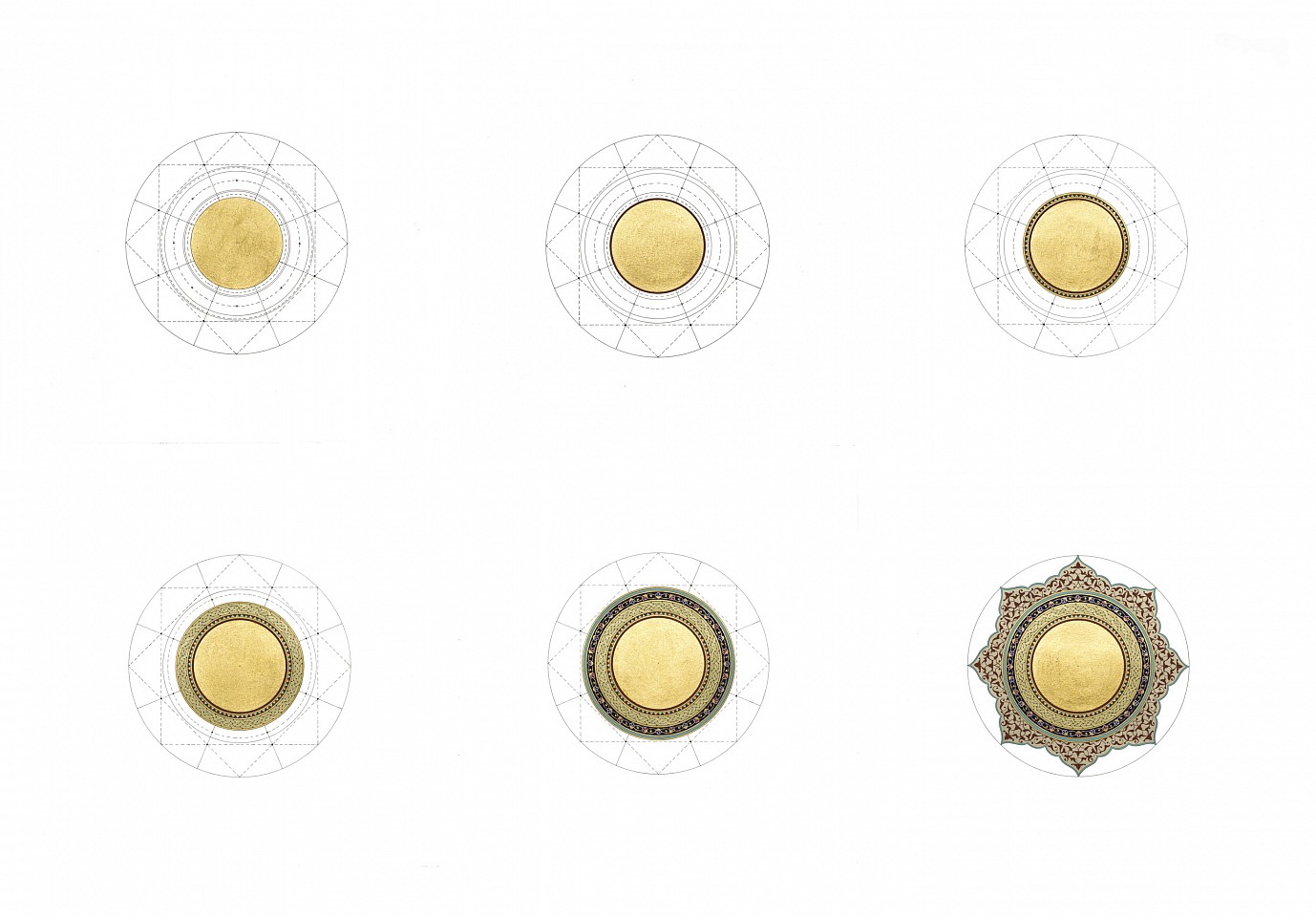
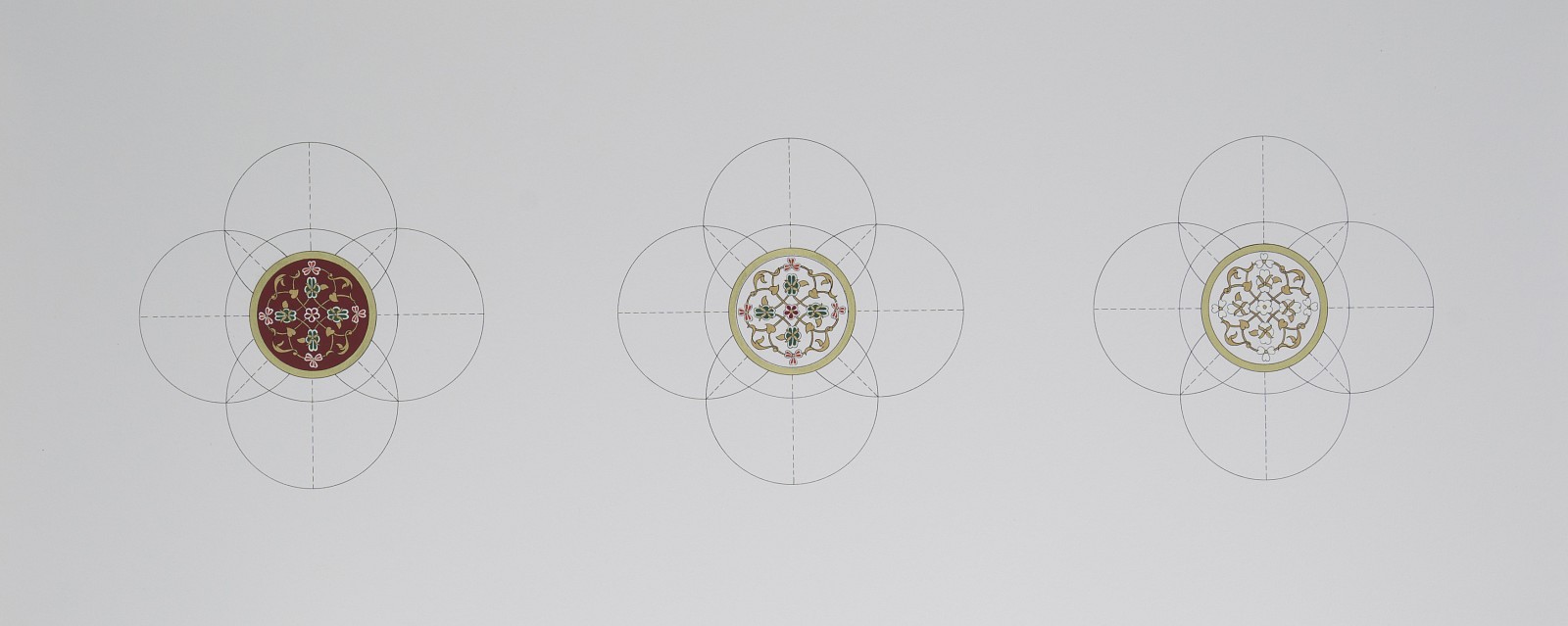
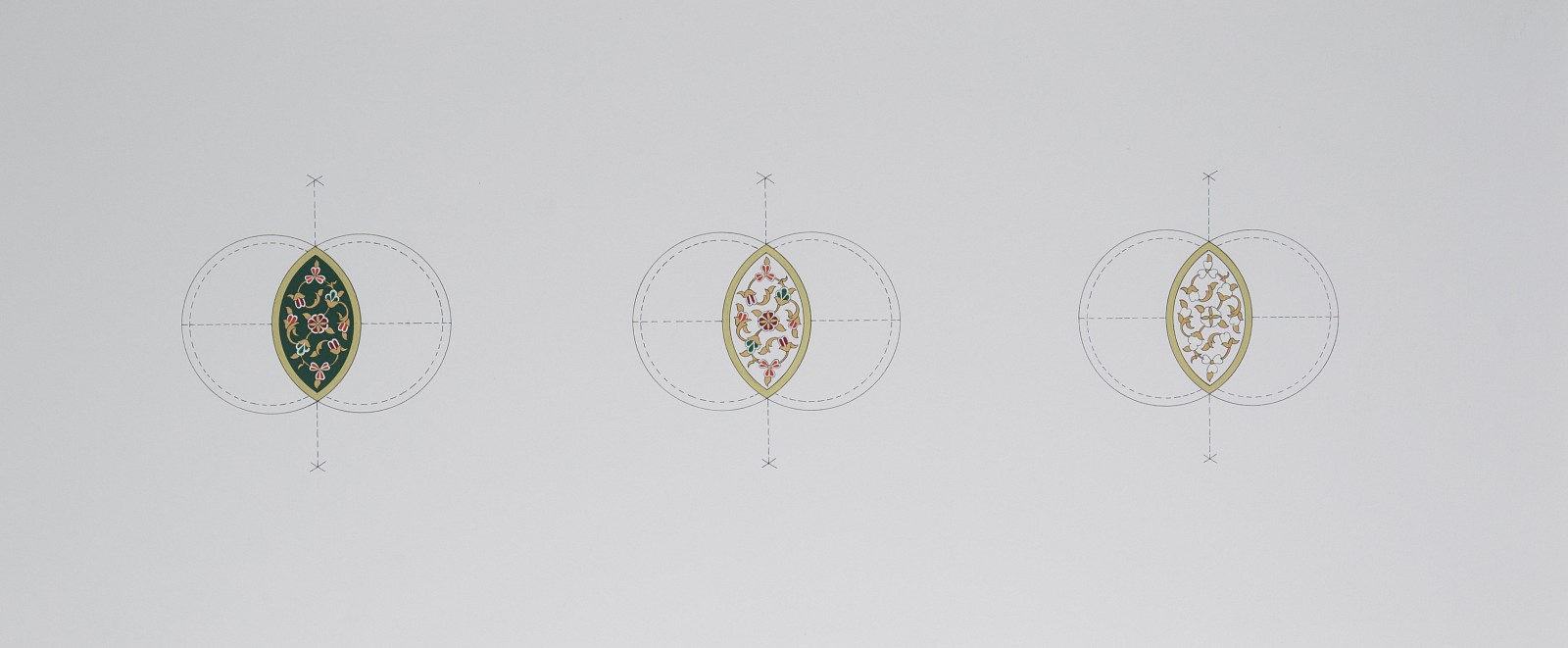
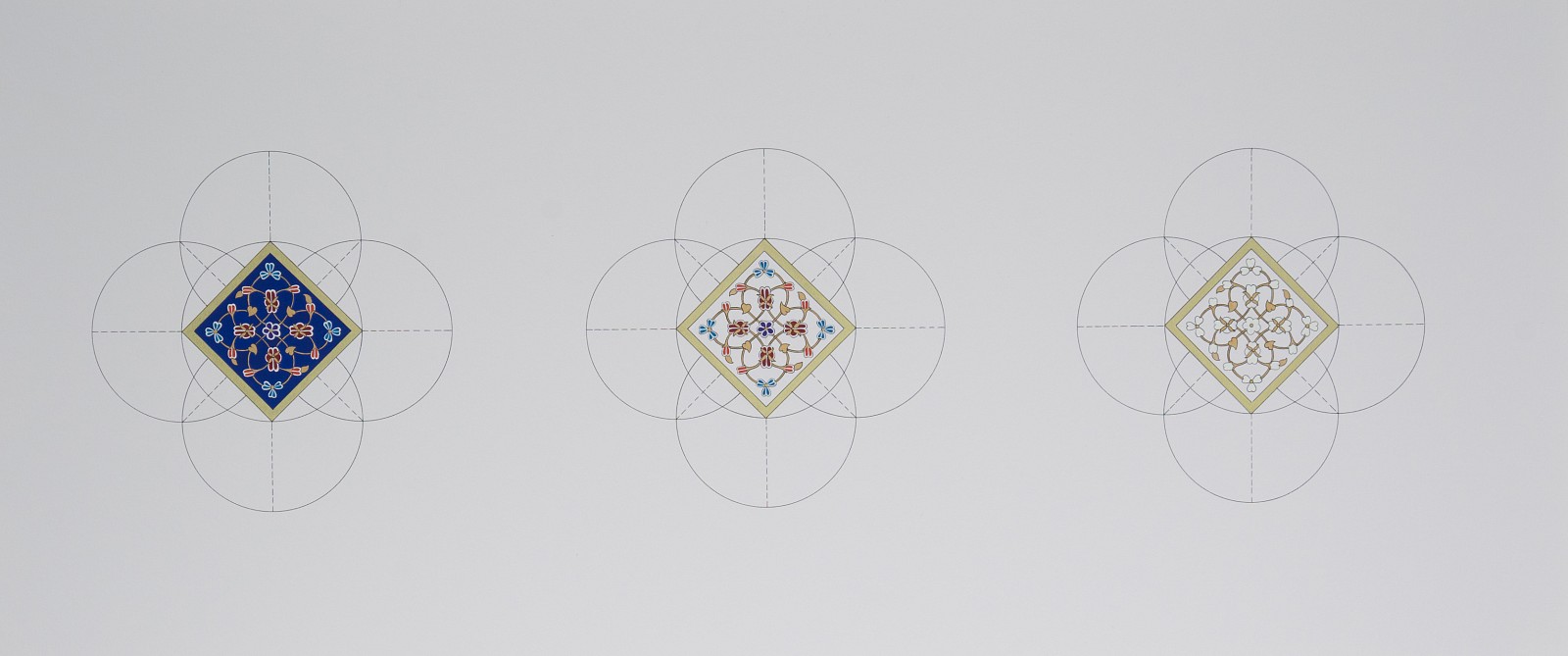
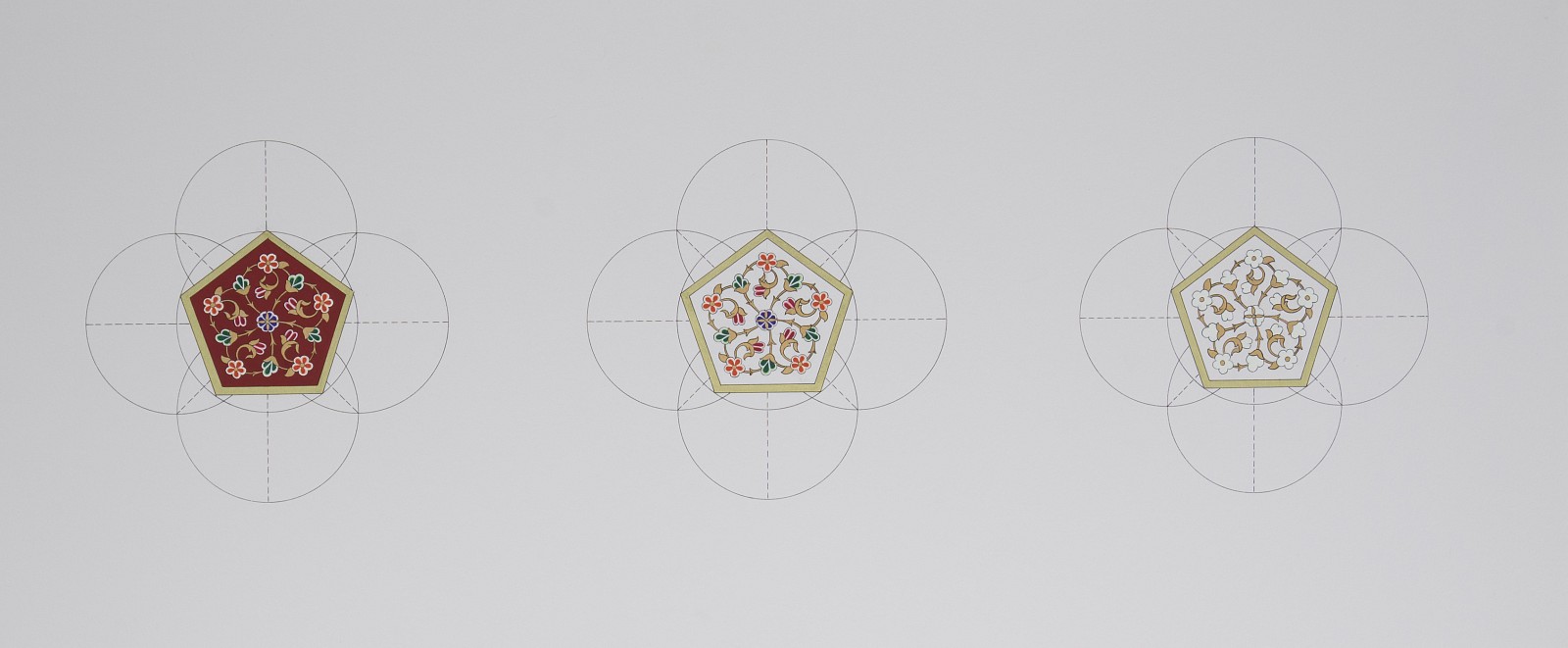
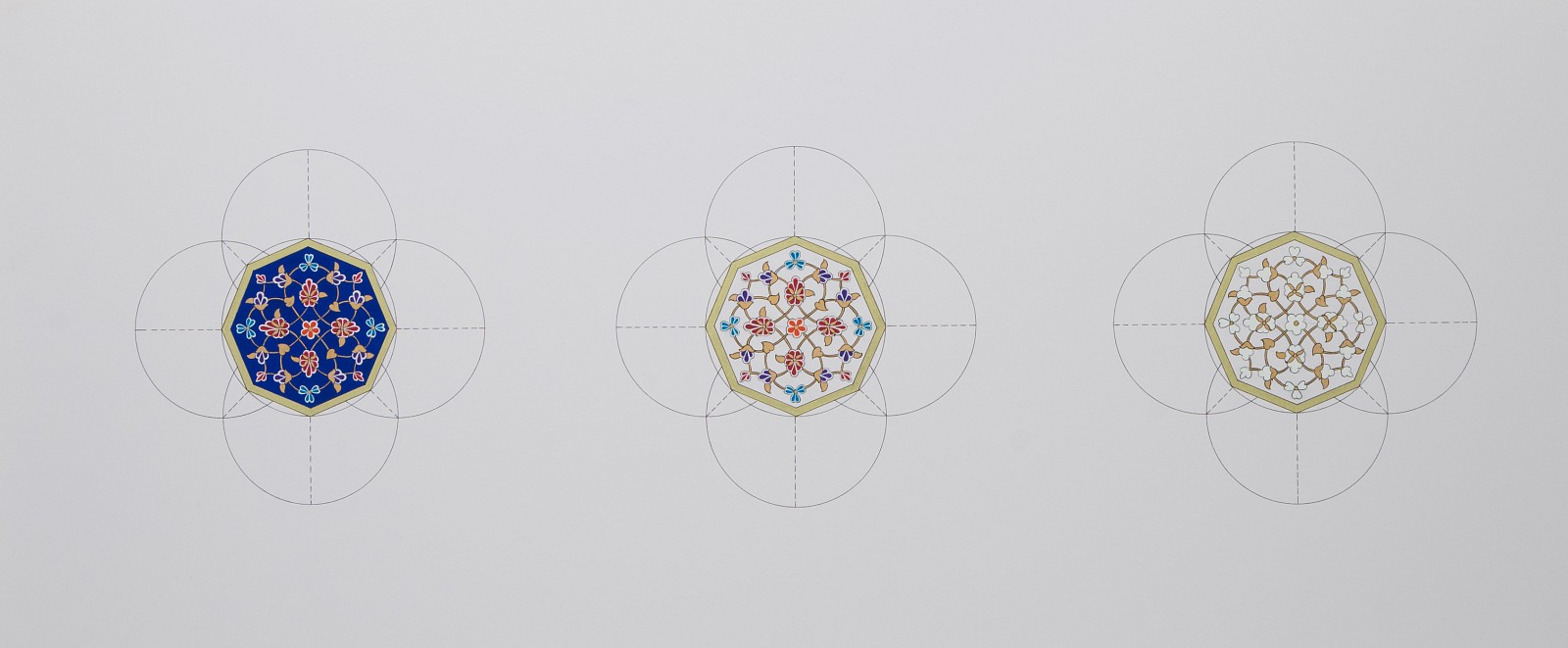
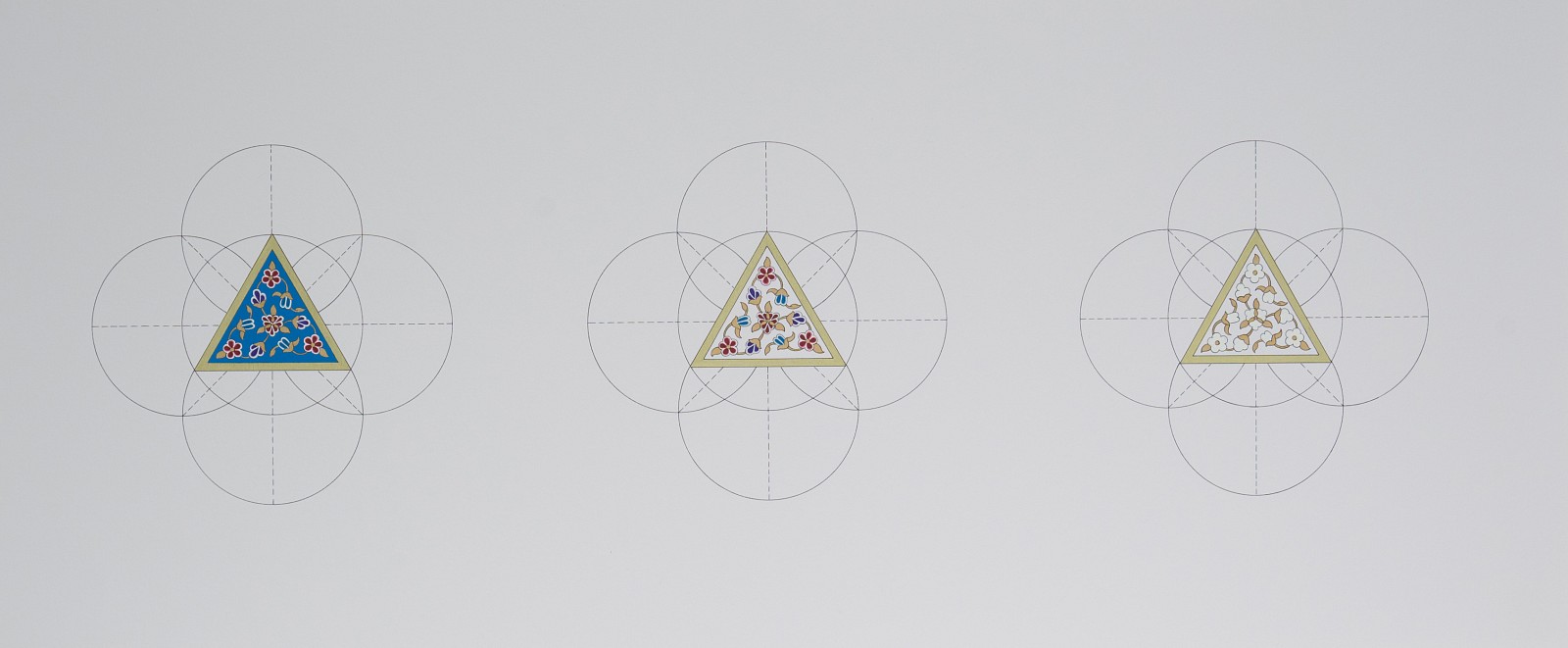
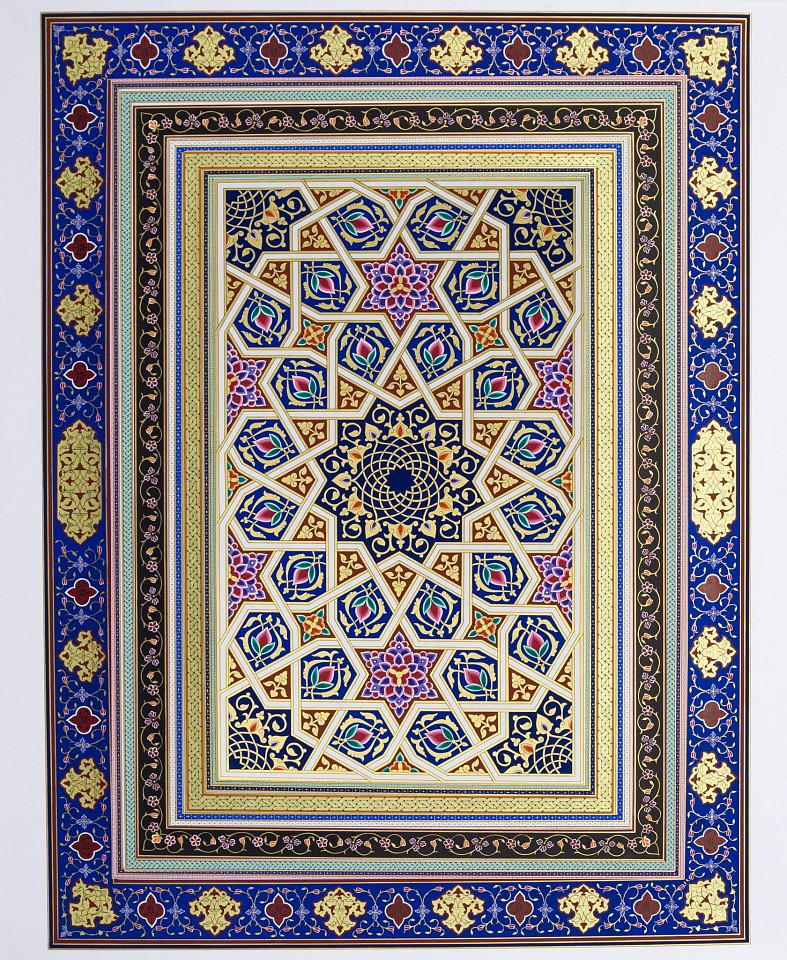
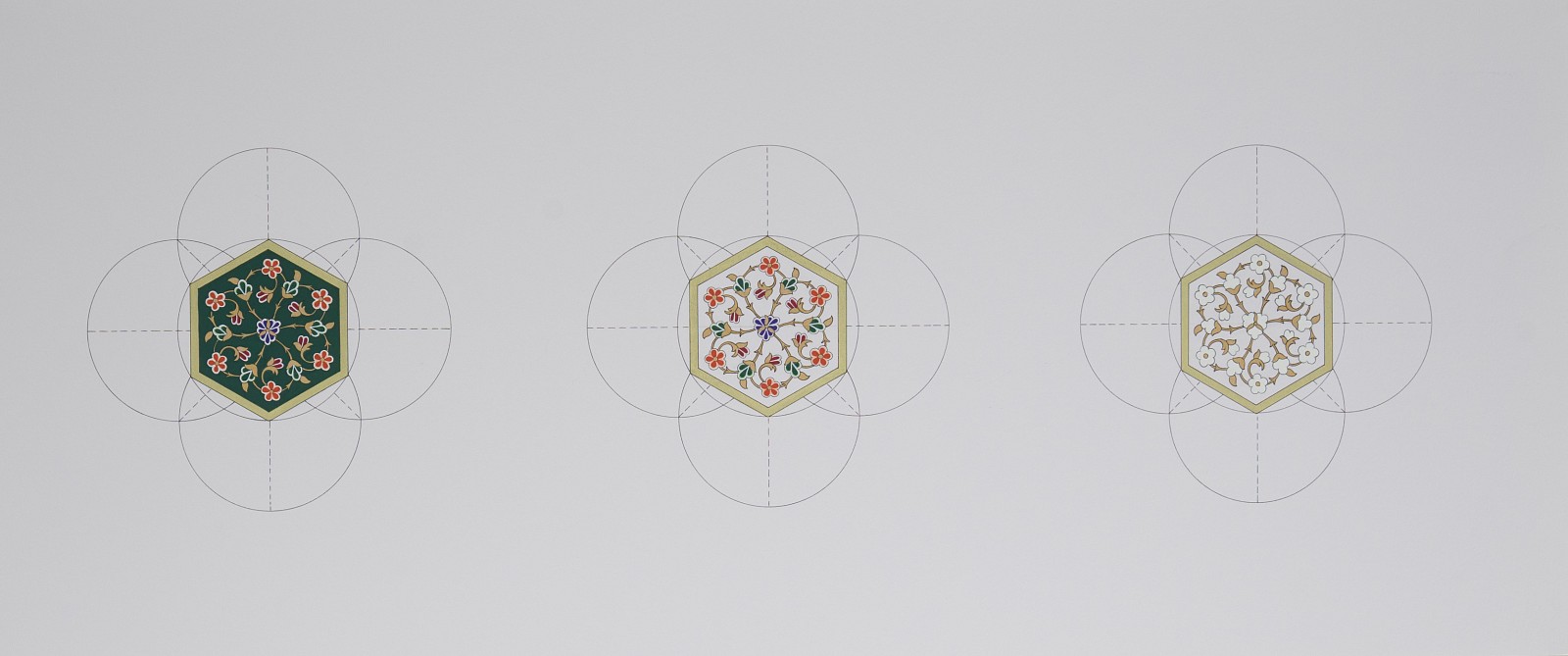
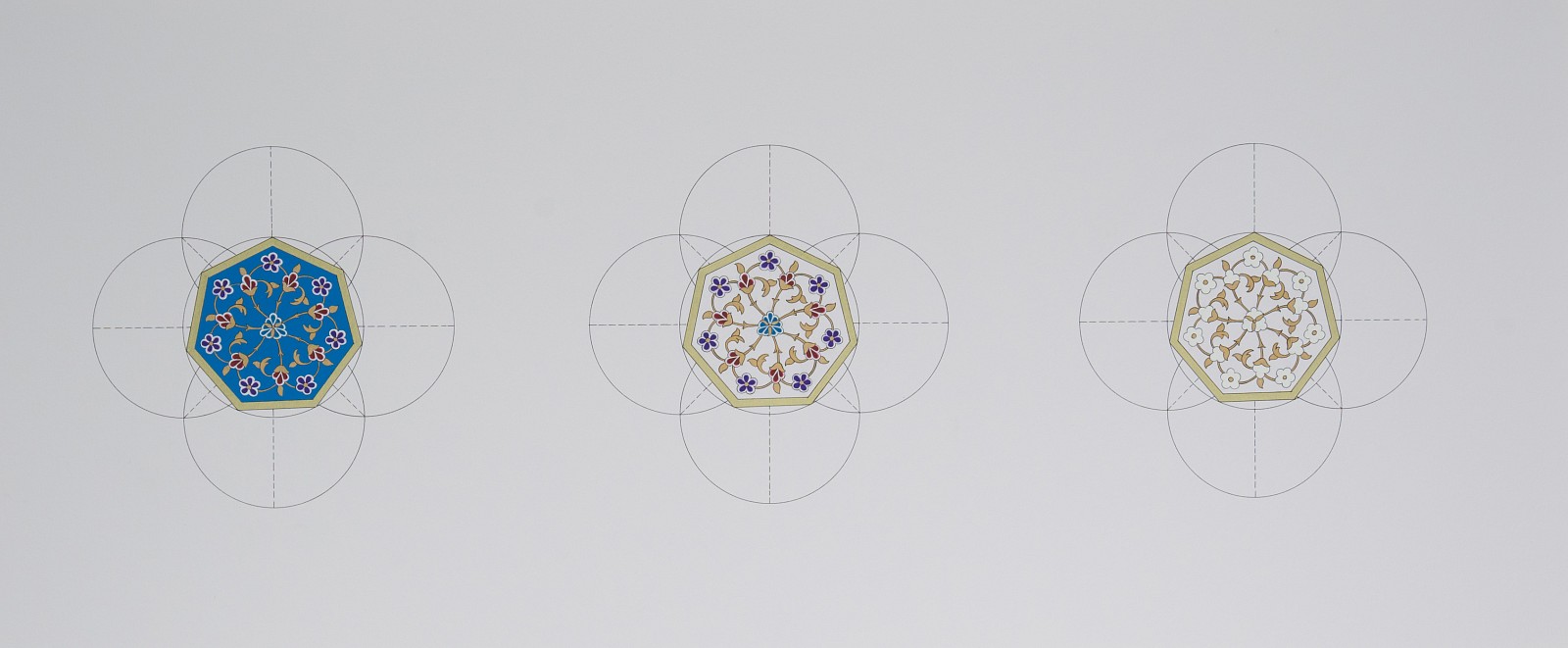
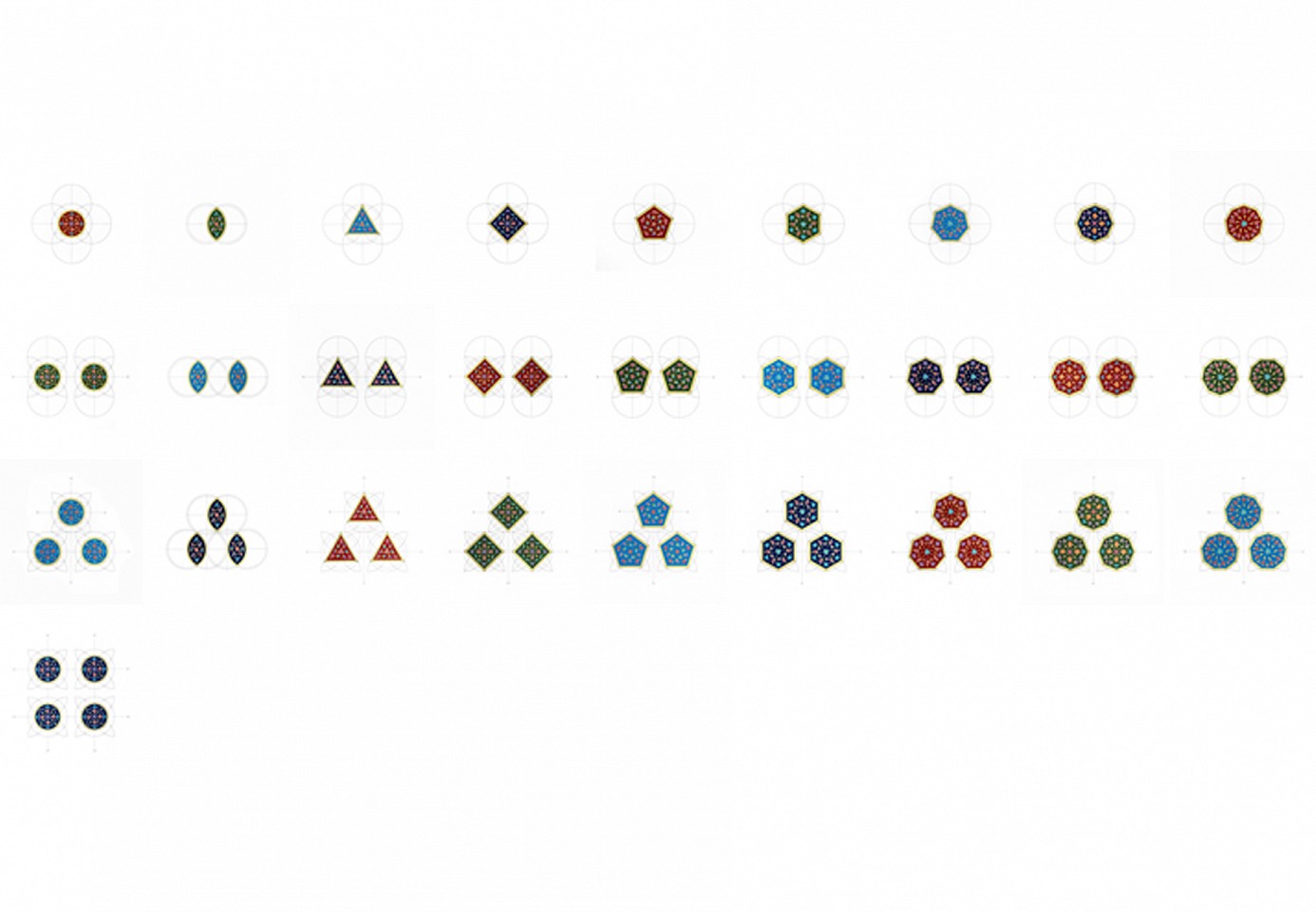
![<p><span class="viewer-caption-artist">Dana Awartani</span></p>
<p><span class="viewer-caption-title"><i>All [heavenly bodies] swim along, each in its orbit</i></span>, <span class="viewer-caption-year">2016</span></p>
<p><span class="viewer-caption-media">Mixed Media</span></p>
<p><span class="viewer-caption-dimensions">150 x 150 cm</span></p>
<p><span class="viewer-caption-aux"></span></p>](/images/29138_h960w1600gt.5.jpg)
